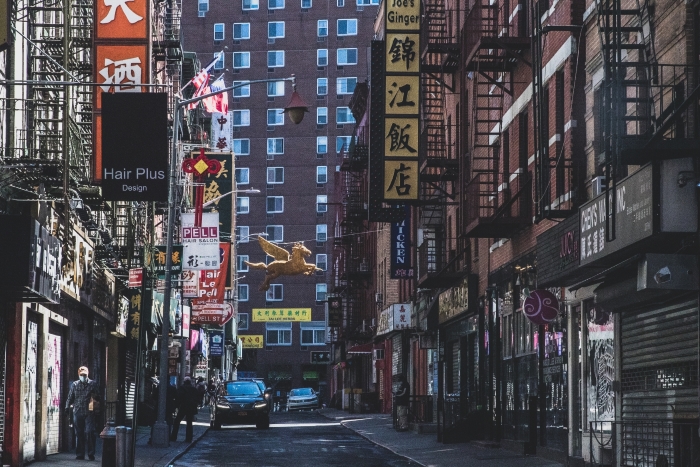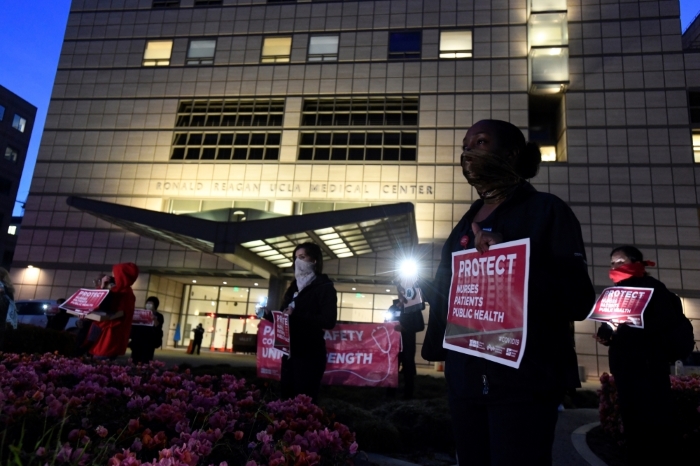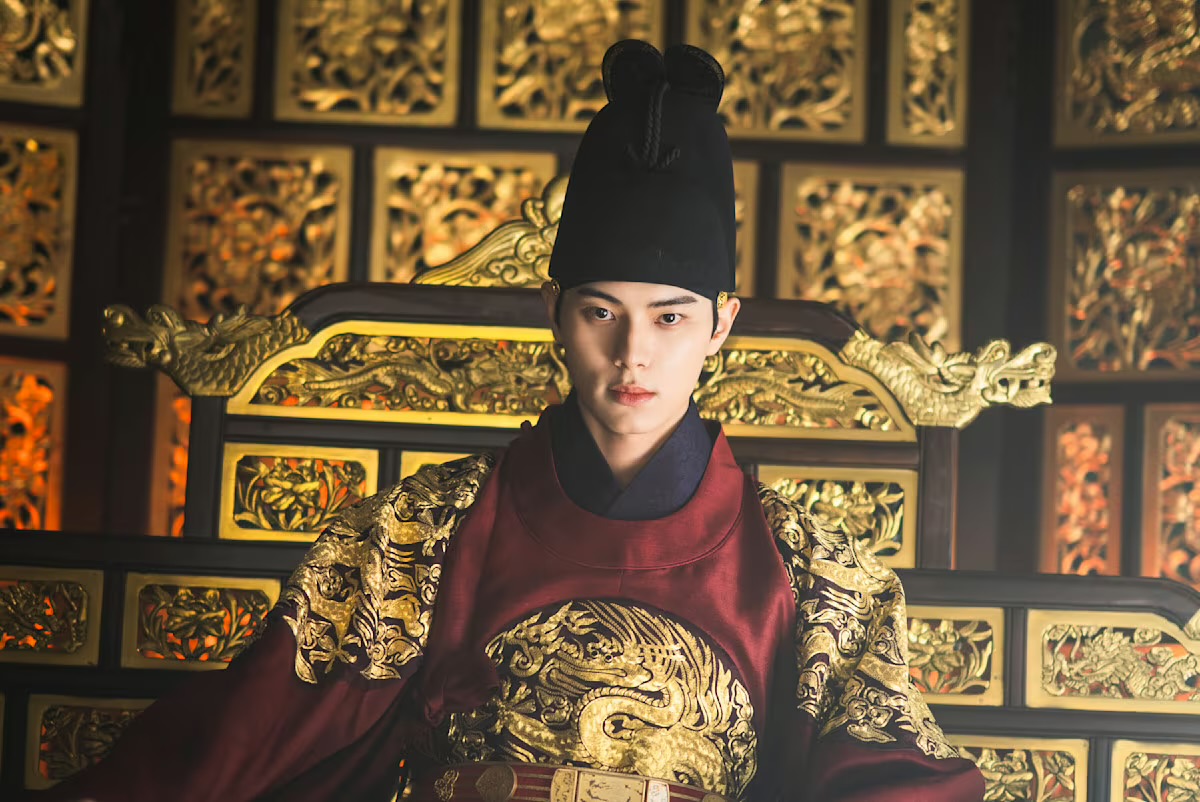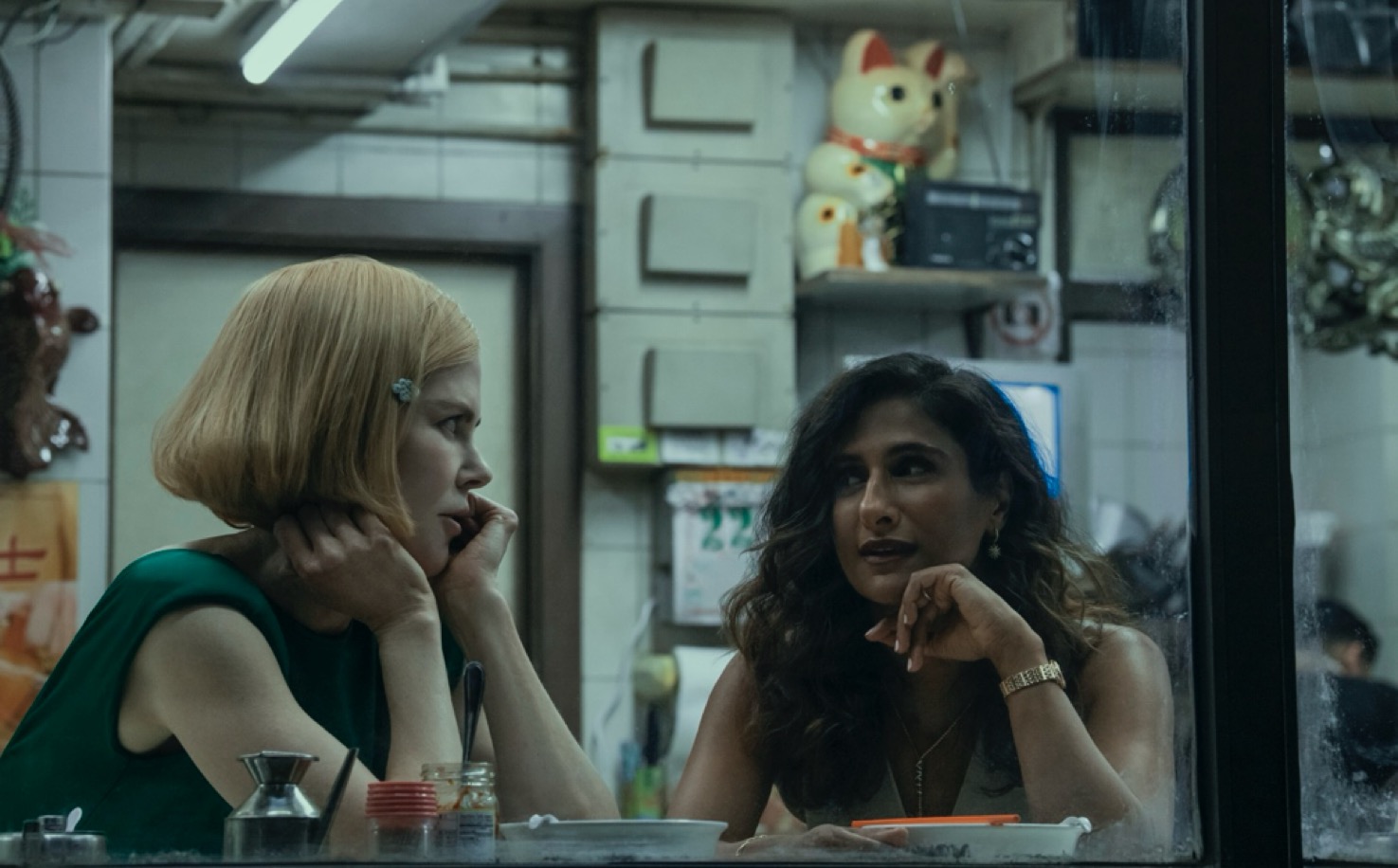Around the globe, the COVID-19 pandemic has brought life as we know it to a screeching halt. We are experiencing a paradigm shift in human behavior. We no longer shake hands or hug each other when we meet. National borders have been shut down for non-essential travel. Organized sporting matches and concerts can no longer take place. Wildlife has returned to the many cities now void of human traffic. World economic activities, as well as employment prospects for millions, remains uncertain for now.
Directed by former Reuters and “Los Angeles Times” photographer Hyungwon Kang, frontline photojournalists in major North American cities have documented these extraordinary times. Jeenah Moon presents the now-deserted Grand Central Station in New York, Axel Koester depicts a silent Hollywood, David Ryder shows how Seattle is staying strong amid ongoing lockdown orders and in Toronto, Canada, Kang spotlights the faces behind some of the businesses still running. Meanwhile, photos from the White House and governors’ offices show the actions of the highest levels of American government.
Although most of us still remain isolated in our homes, these images offer a reminder that none of us are completely alone. No matter where we are in the world, we are all surviving the same event together.
Los Angeles
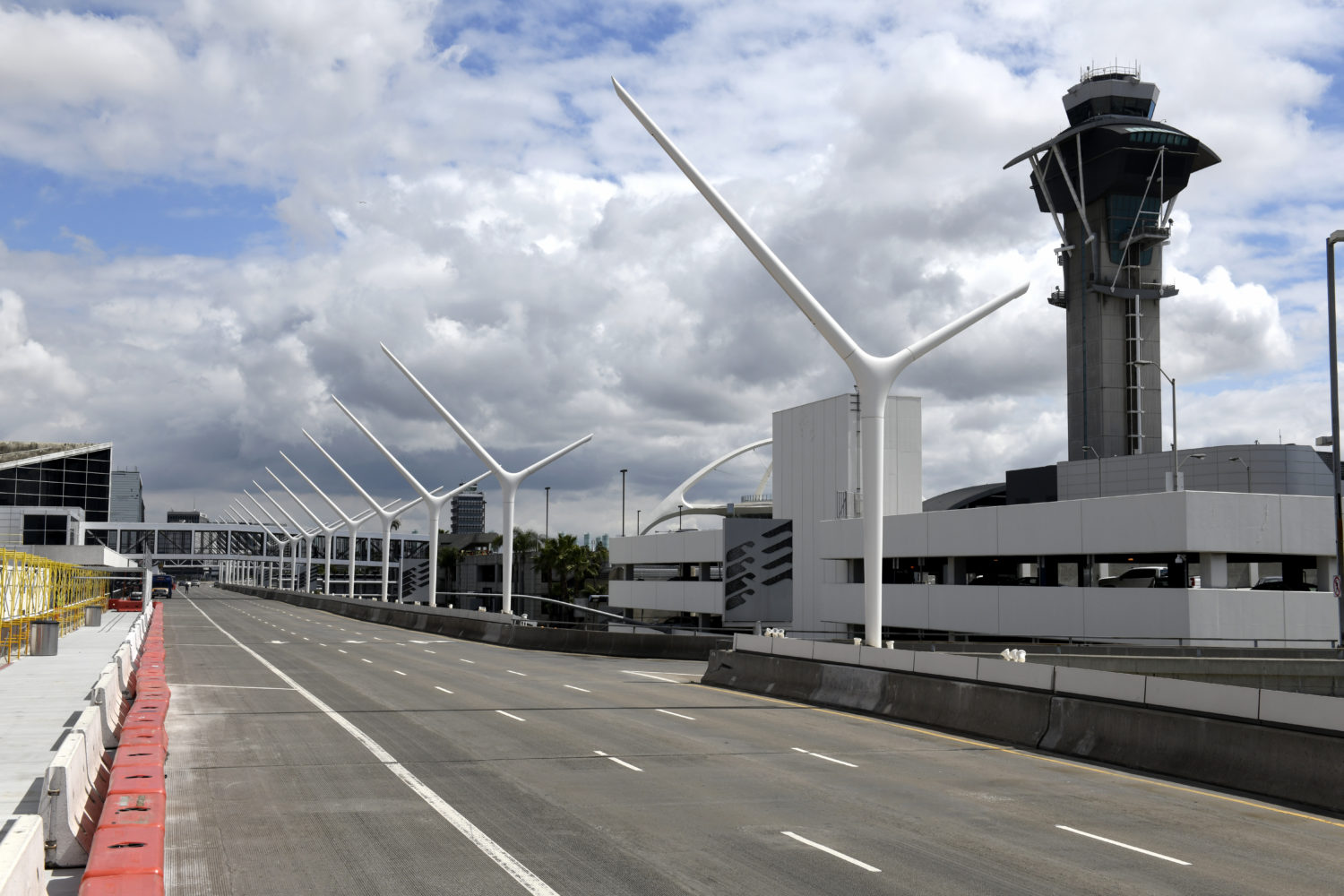
Because of COVID-19 we are seeing scenarios we never could have imagined, like a traffic-free Los Angeles International Airport. (Photo © Axel Koester Photography.)
In an area famous for its beaches and attractions like Disneyland, the streets are deserted as Southern Californians obey shelter-in-place guidelines from federal, state and local governments. German American photographer Axel Koester is often inspired by the many diverse neighborhoods of this vibrant region, but here he depicts a different image of the L.A. area, without all of its signature traffic and crowds. All photos © Axel Koester Photography, all rights reserved, 2020.
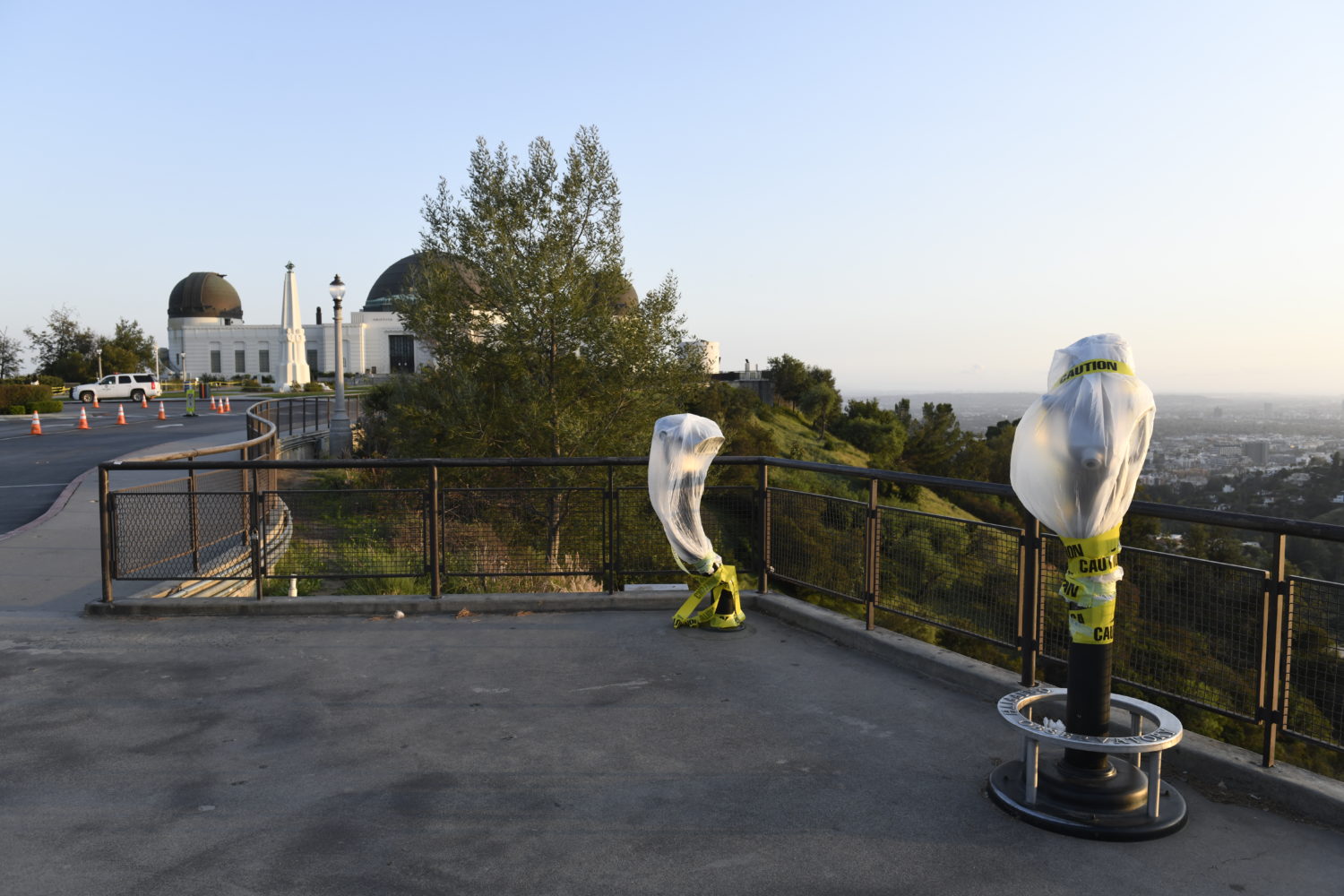
Tourist spots like the Griffith Park Observatory, featured in movies like “Rebel Without a Cause” and “Devil in a Blue Dress,” could be a location for a future film where Asians get whitewashed yet again, titled “Pandemic.”
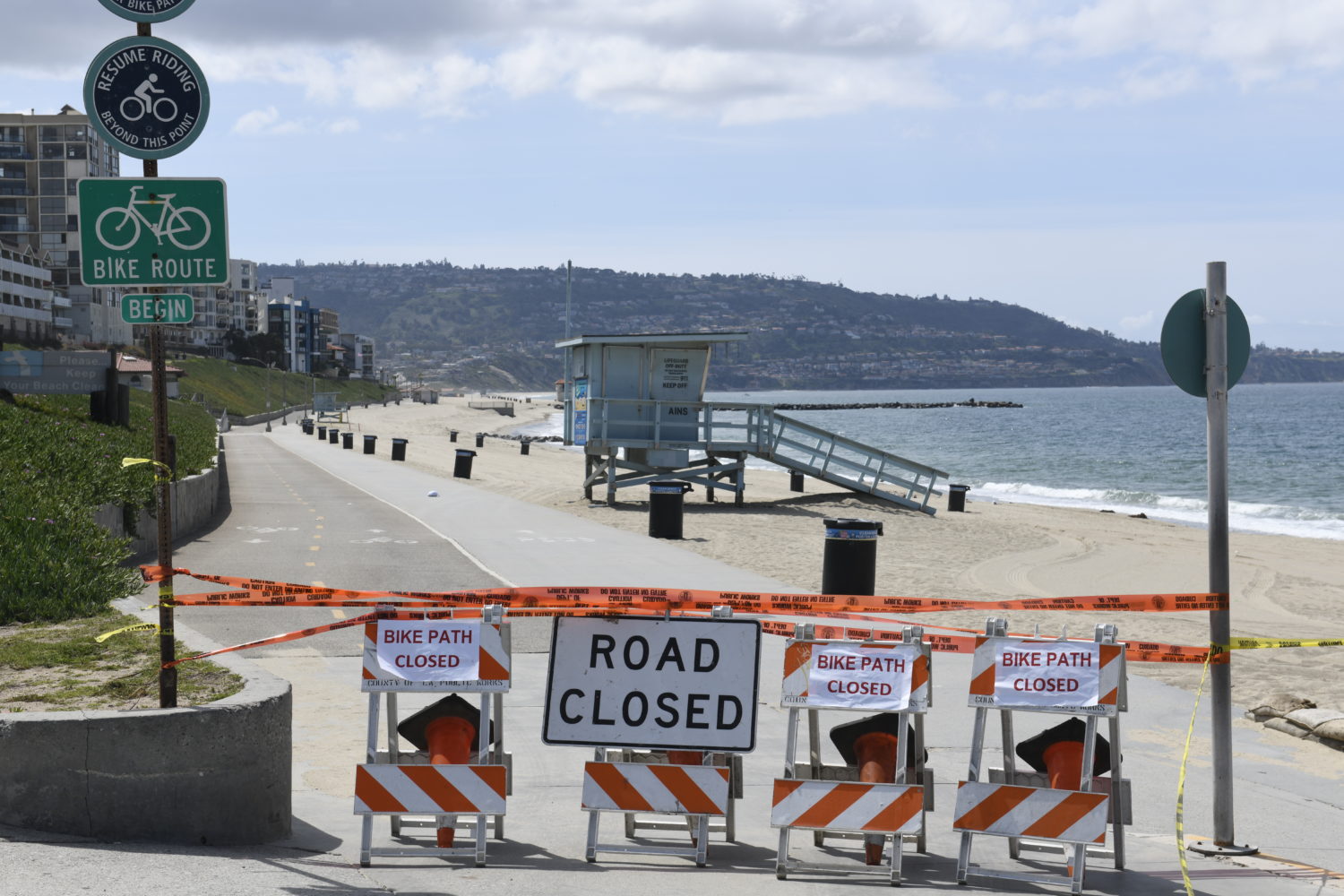
There were no California Girls (or Boys) roaming the sandy shores of Redondo Beach, even with temperatures in the 90s.
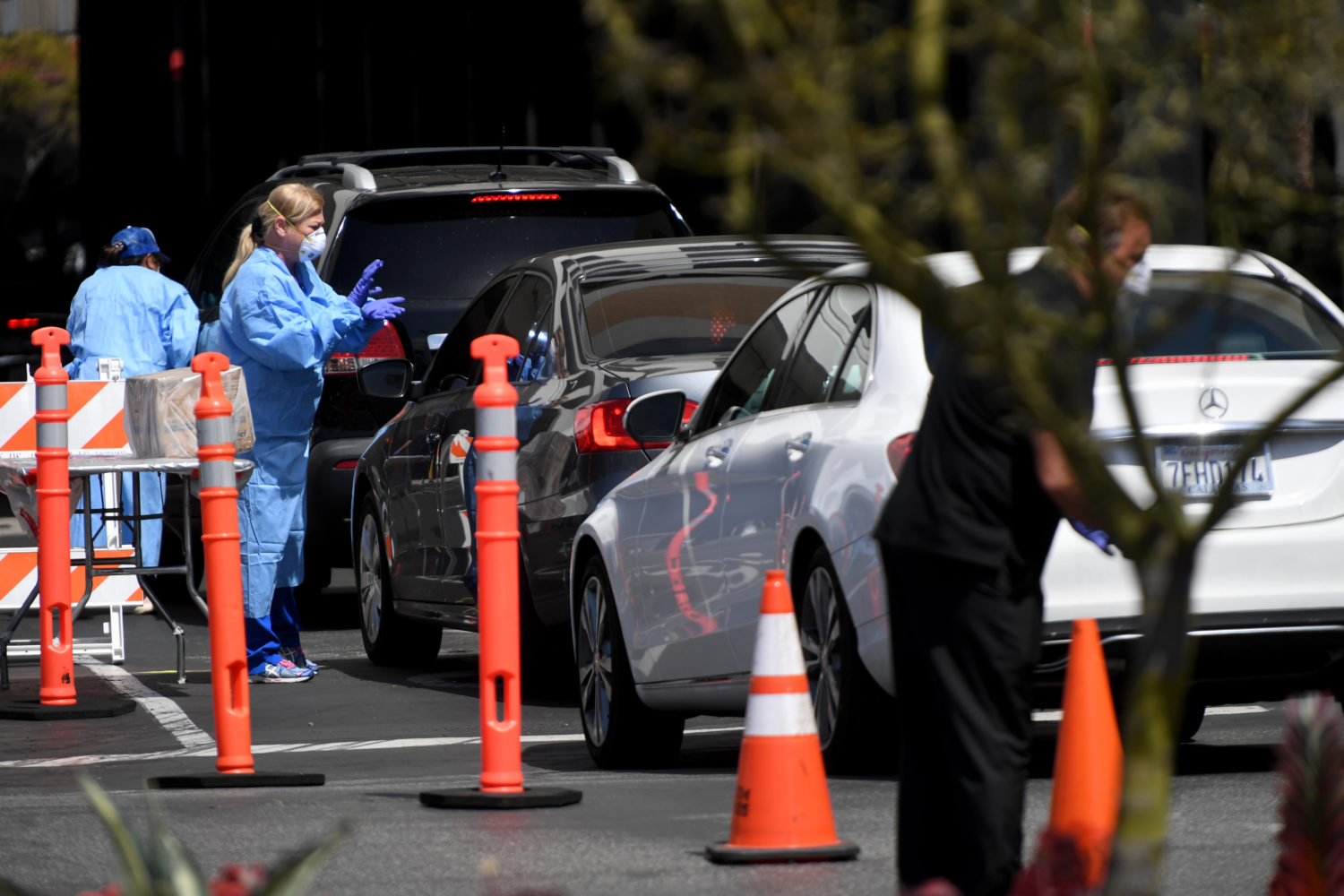
People are being drawn back to malls, not to avoid online shopping, but for COVID-19 drive-up testing, like the South Bay Galleria in Redondo Beach.
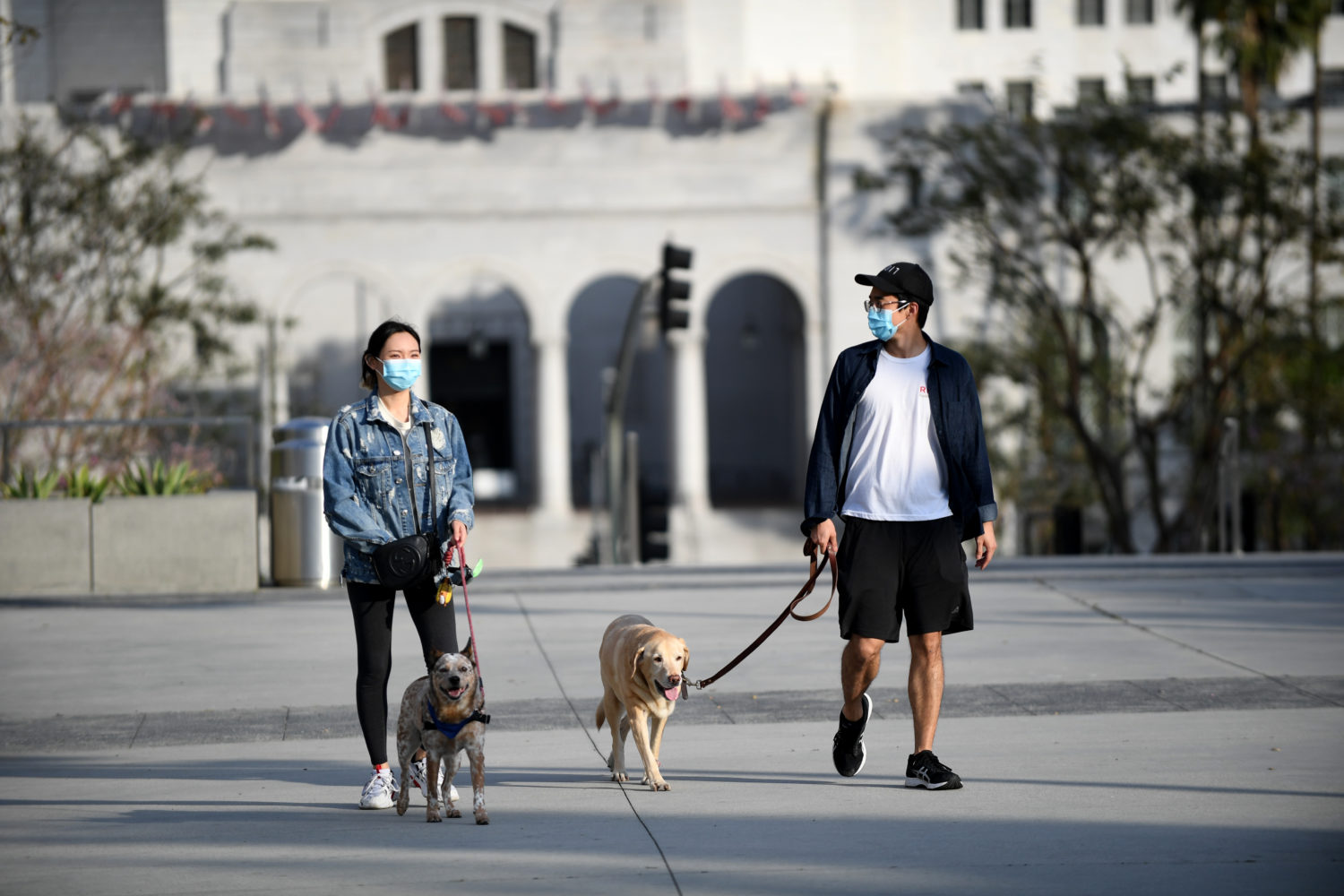
Dogs, and their walkers, in front of Los Angeles City Hall have more room these days to give City Hall the business.
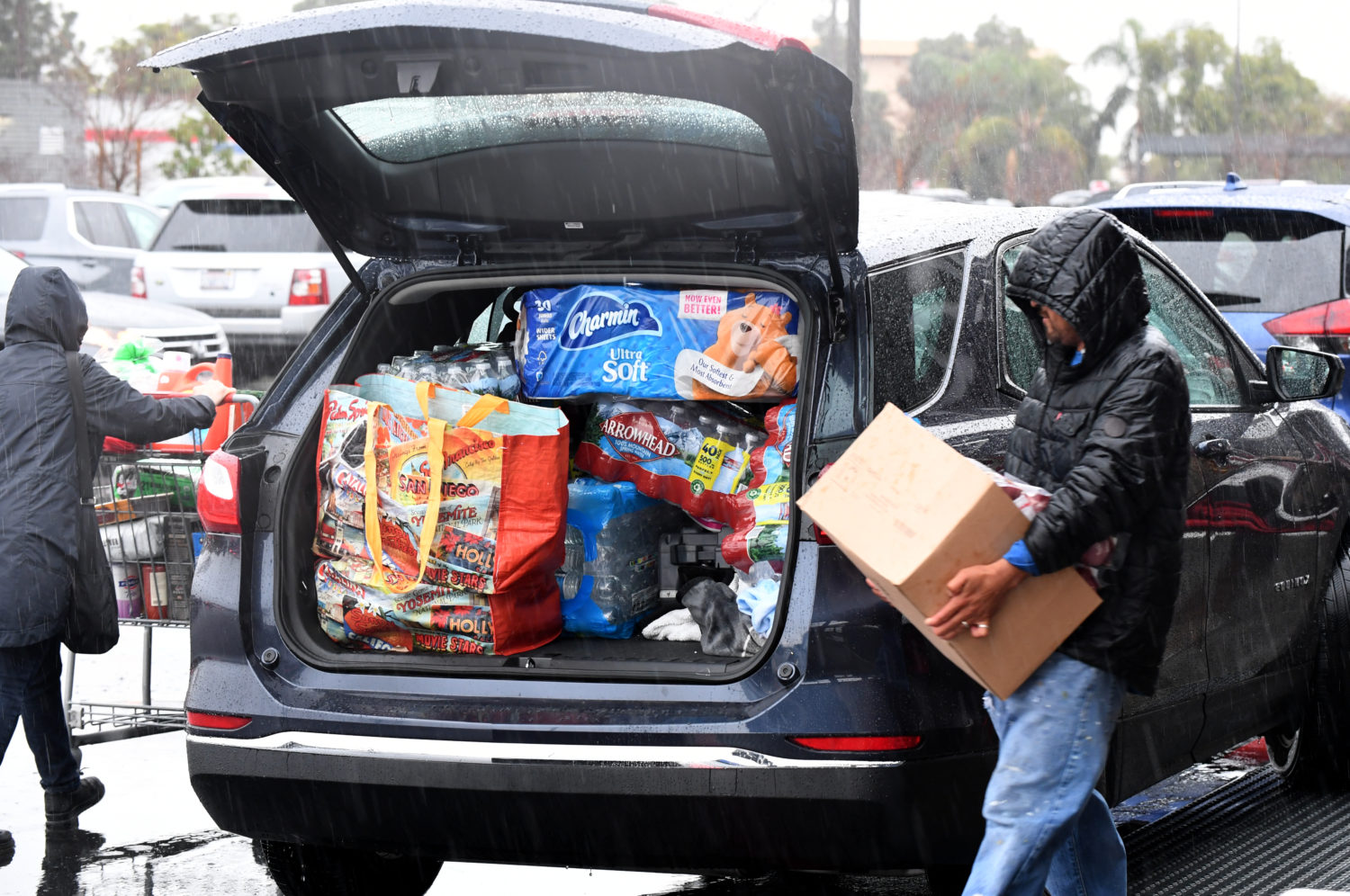
At least this shopper at a Costco in Torrance loaded up with only one package of toilet paper.
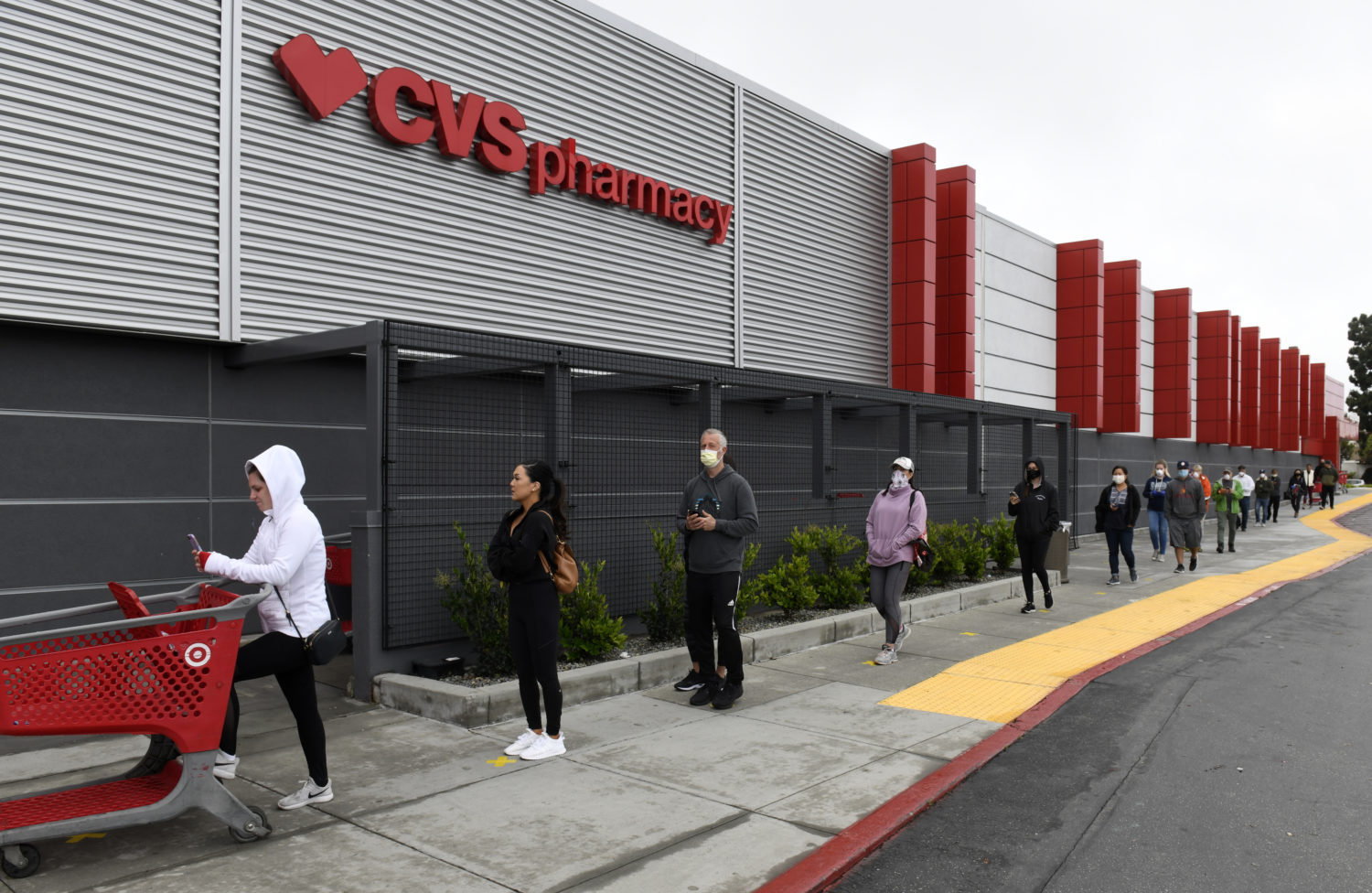
Wearing masks and social distancing, like these shoppers at a Manhattan Beach Target, will make it harder to spot your favorite celebs in this town.
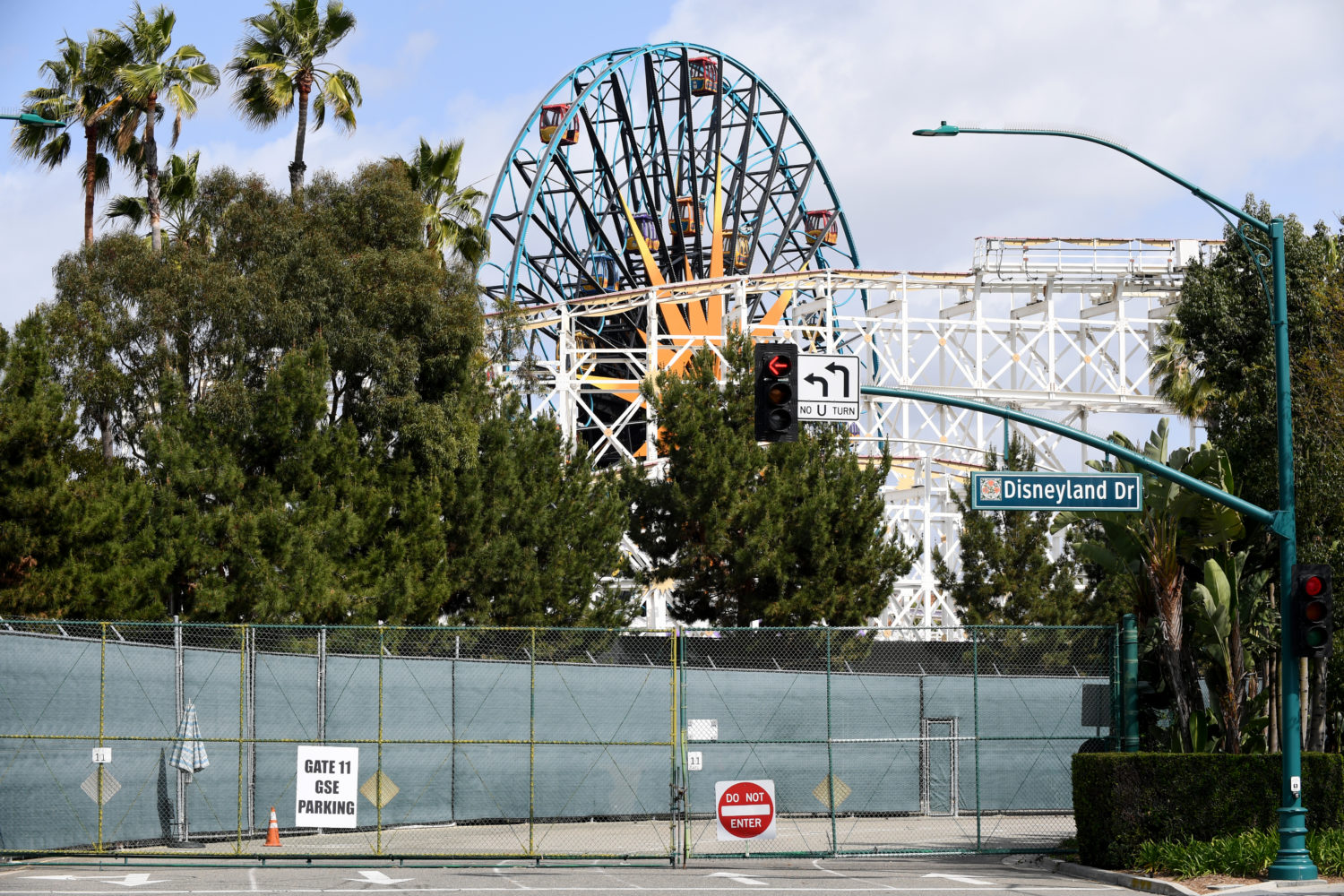
Disneyland, the “happiest place on Earth,” is bringing no smiles.
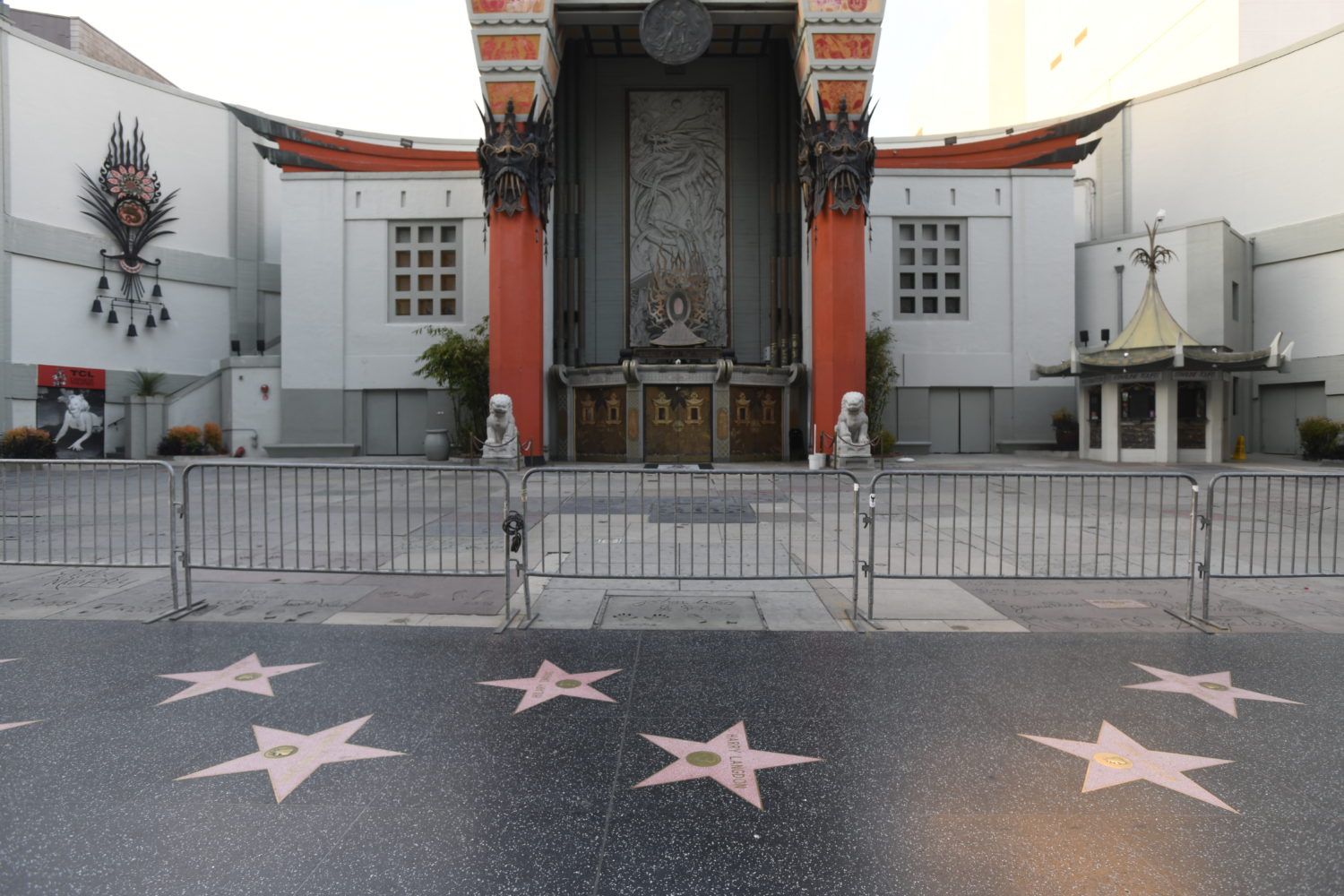
A barren Hollywood Walk of Fame means no phony tourist traps to separate tourists from their money.
New York City
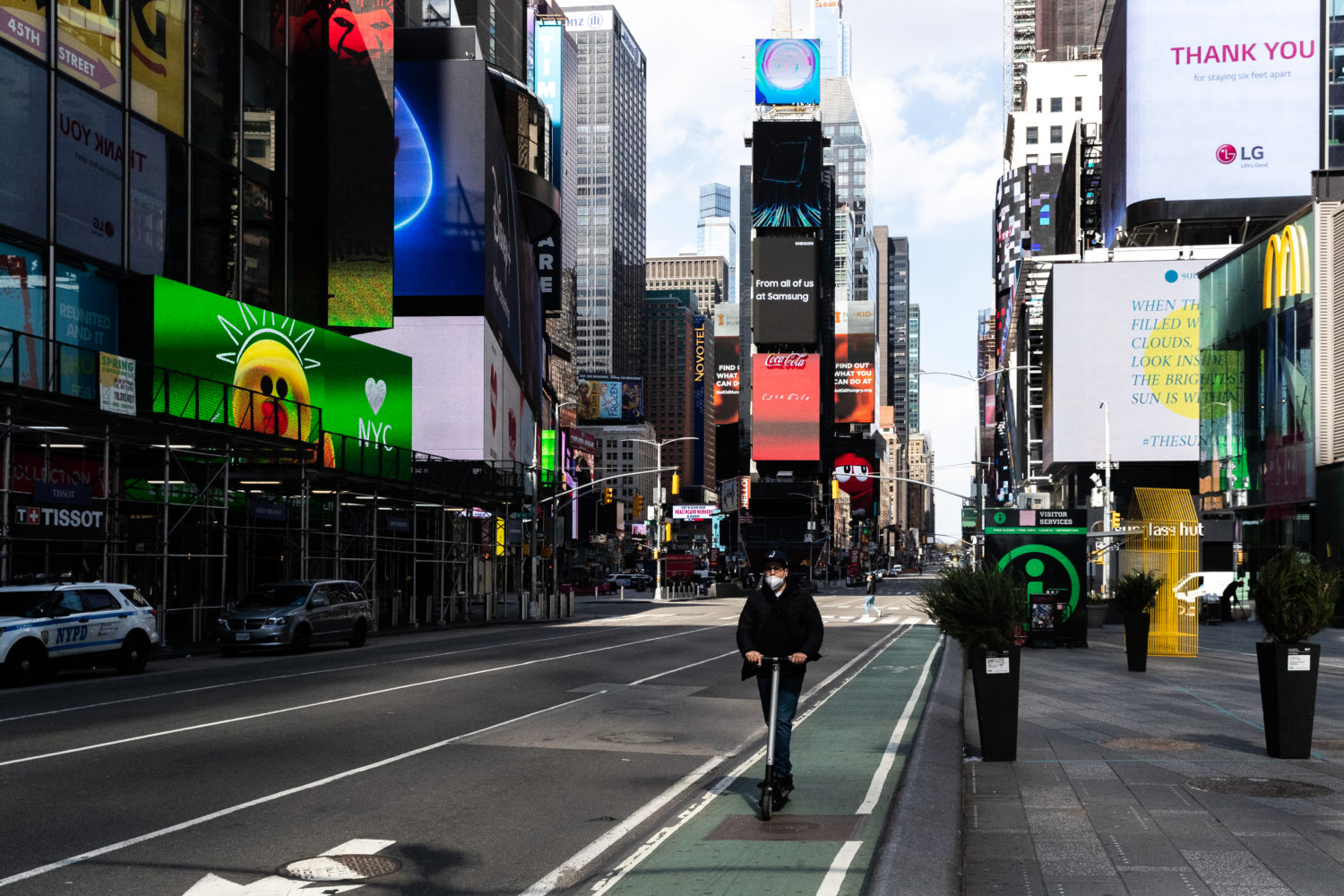
This scooter rider can’t annoy people when there’s nobody in Times Square. (Photo by Jeenah Moon.)
New York City is known across the world for its vibrant arts scene and busy streets, but due to the novel coronavirus outbreak, famous landmarks are now empty and typically bustling areas of public transportation are quieter than ever.
Seoul, Korea-born photojournalist Jeenah Moon, who braved the city’s stringent lockdown orders for this series, often shoots for the “New York Times,” Bloomberg, Reuters and more, creating projects that tackle the most pressing social issues of today. Moon also shot our cover photo of the Oculus station house. All photos by Jeenah Moon.
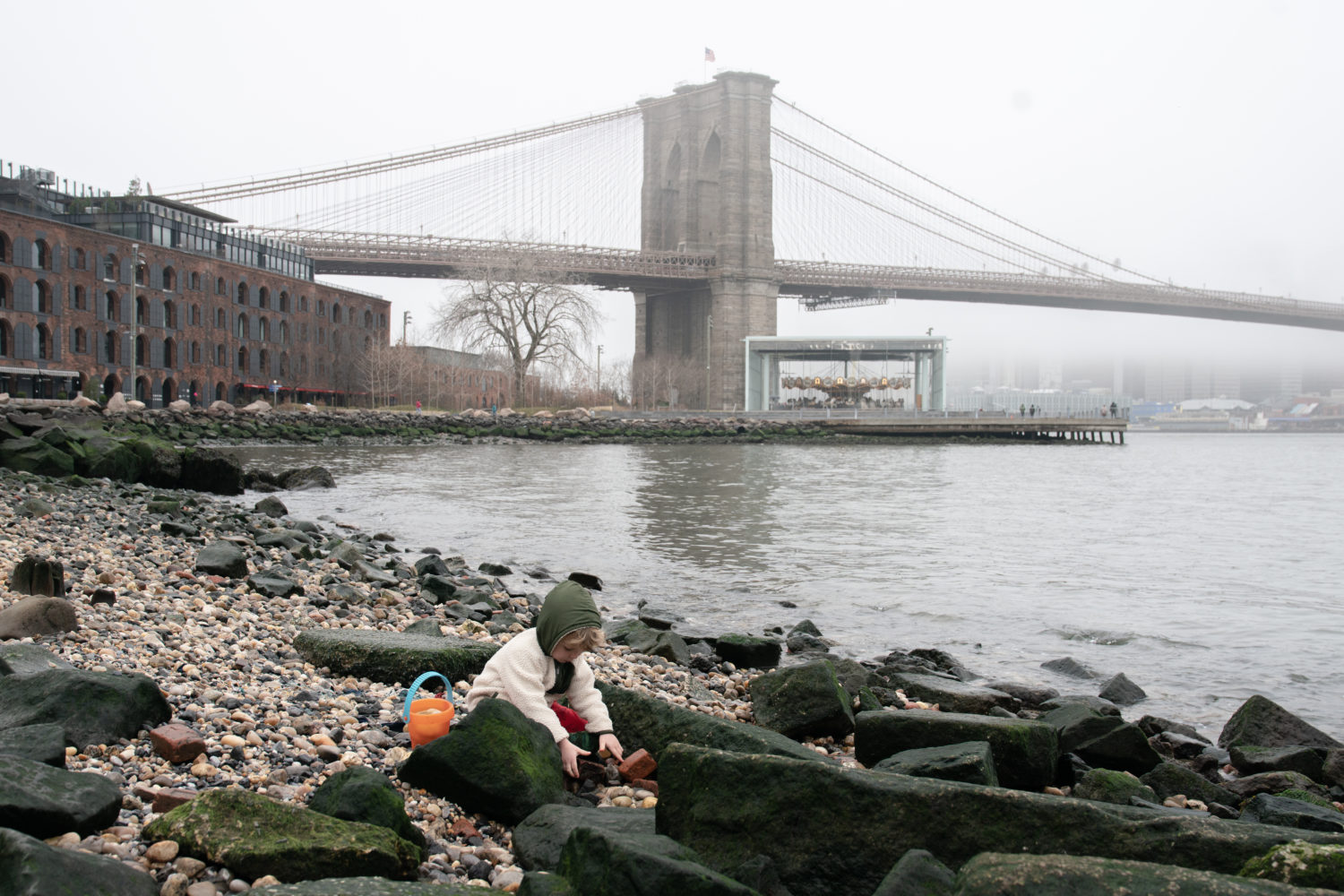
With smaller crowds around the Brooklyn Bridge, the biggest hazard for this child is the pollution in the East River.
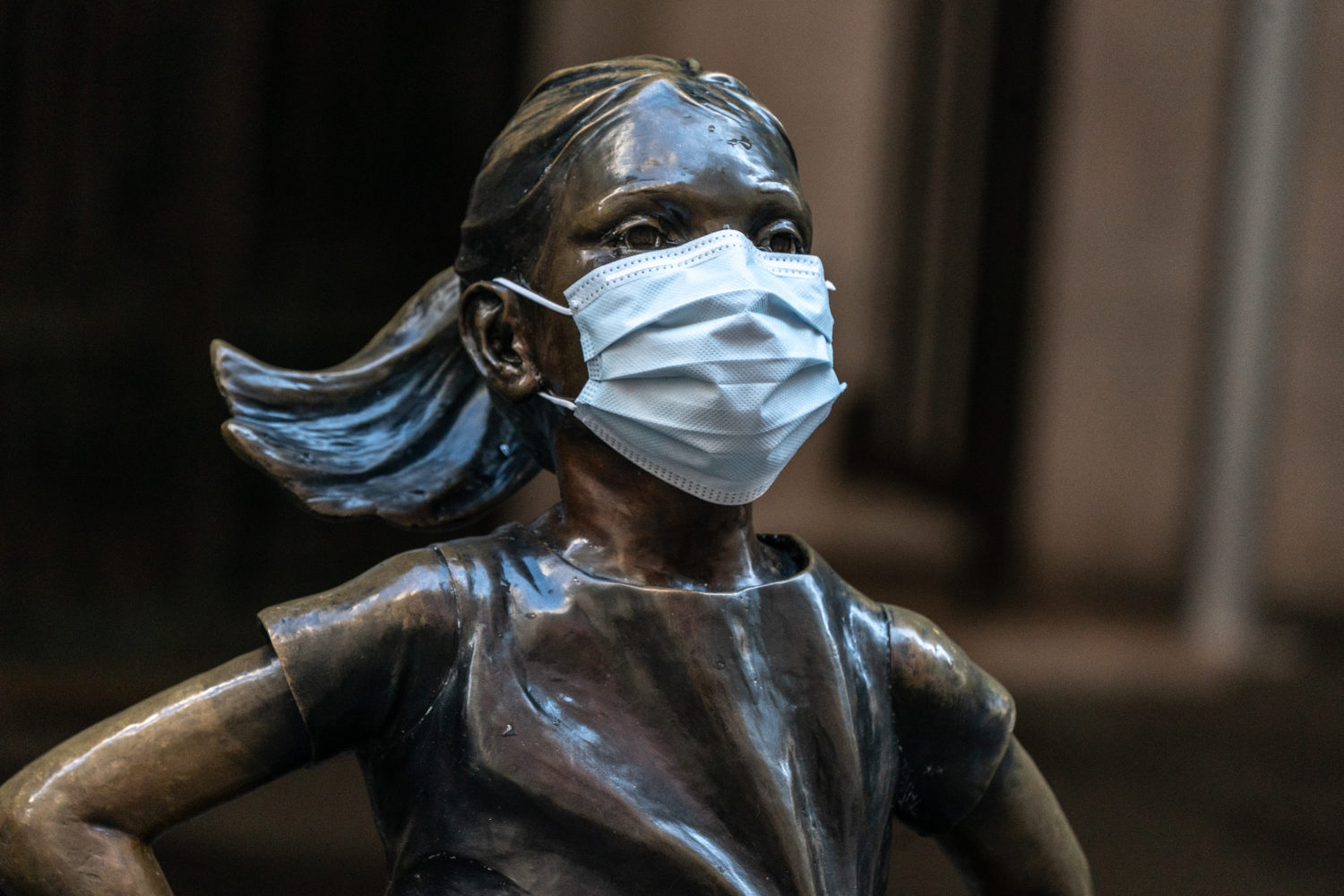
The Fearless Girl statue outside the New York Stock Exchange, a symbol for more workplace gender diversity, continues to stand as a monument for our times.
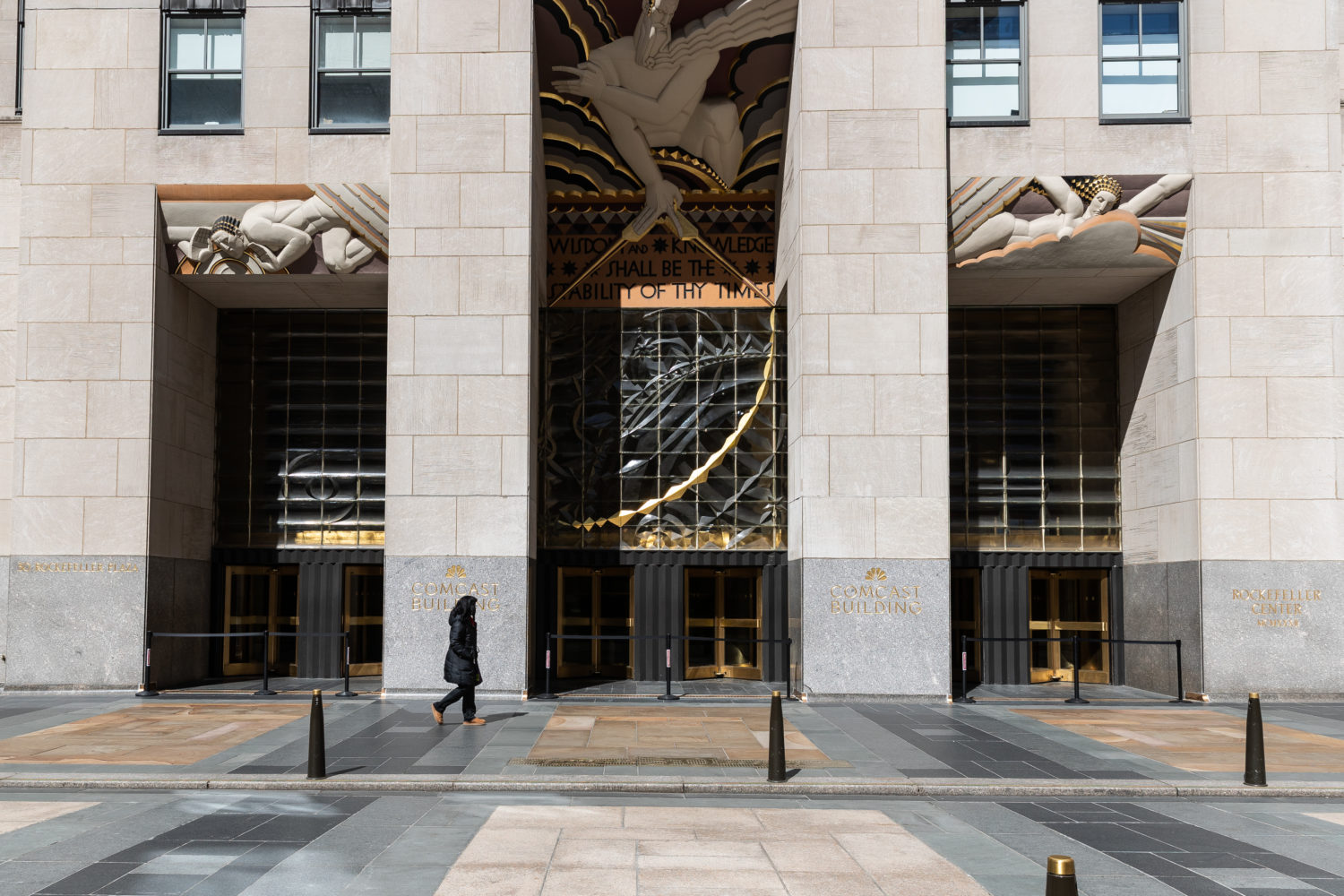
There are no crowds at Rockefeller Center for its observation deck or to get into “The Tonight Show” or “Saturday Night Live,” both of which are taped here.
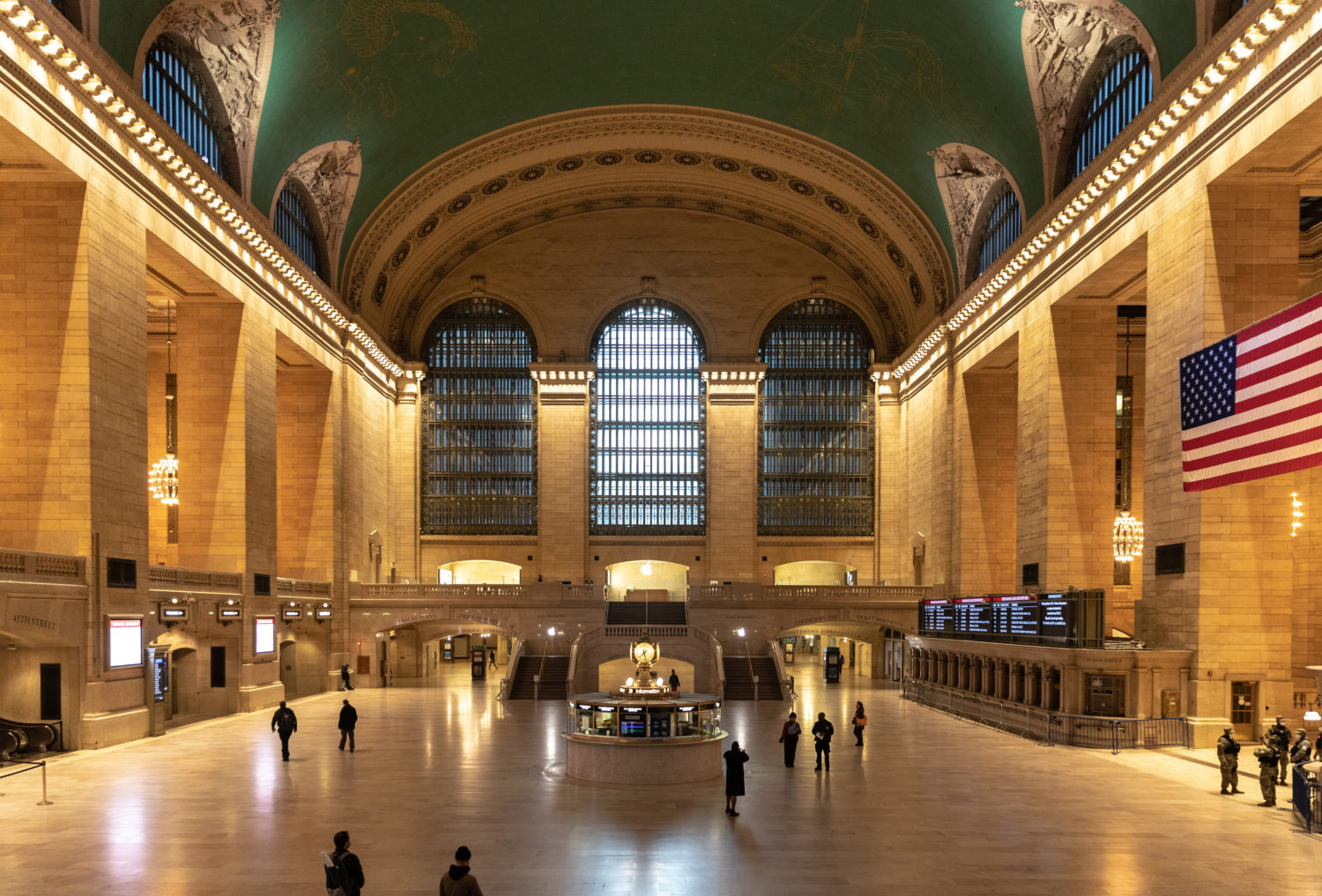
The likelihood of photobombers when taking a selfie in Grand Central Terminal is way down.
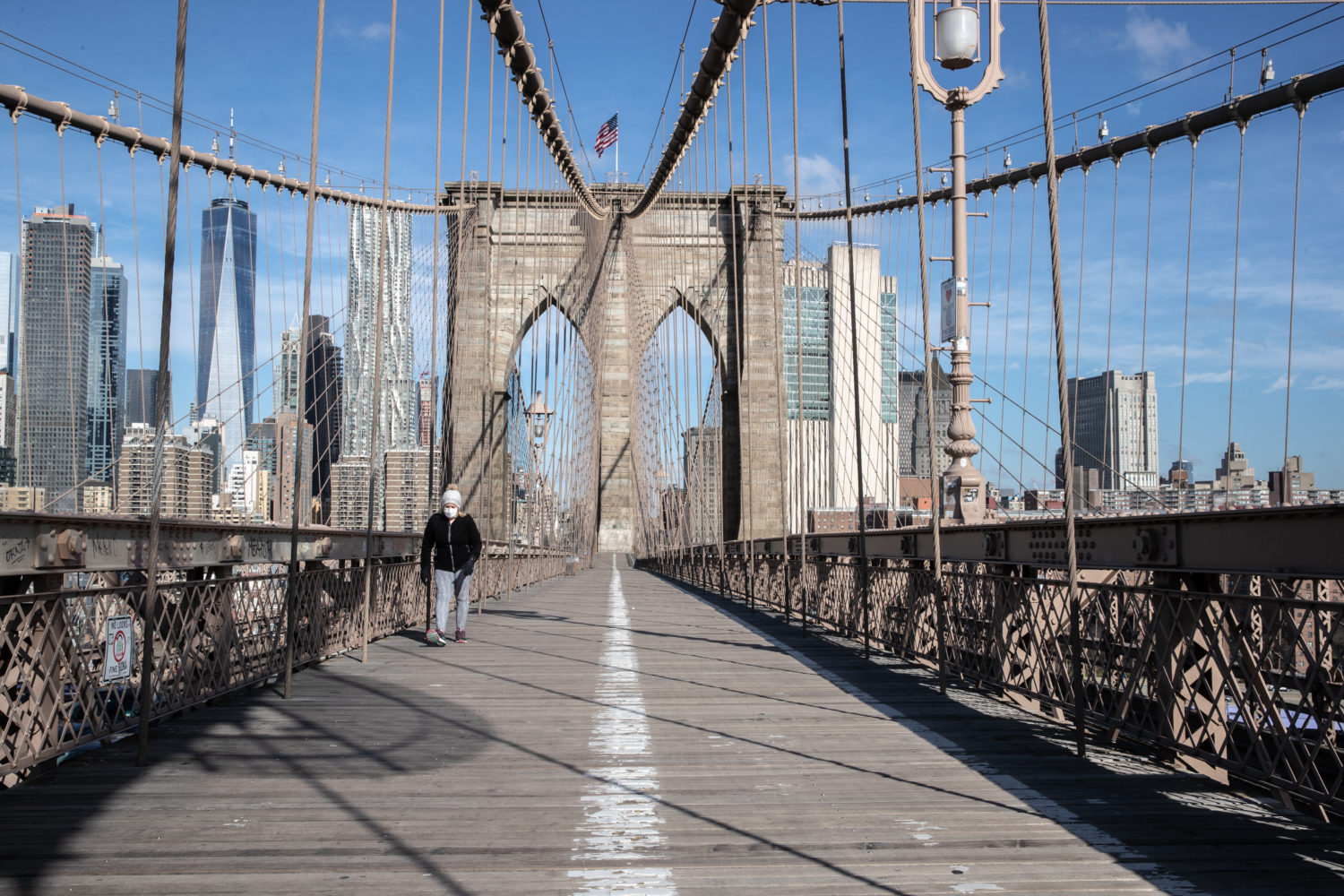
Now would be a good time to get those quintessential couples’ snapshots on the Brooklyn Bridge you’ve always dreamed of.
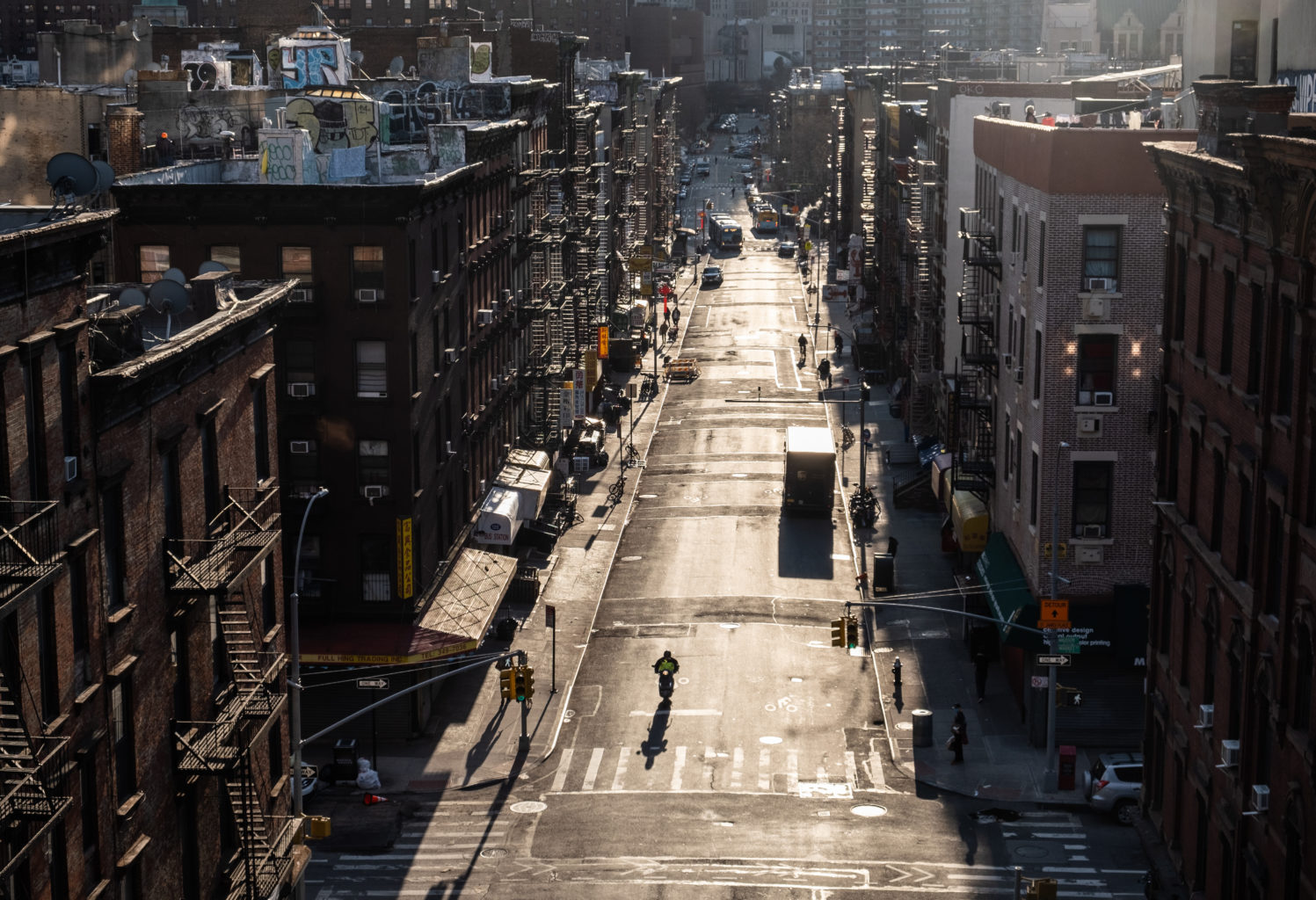
At least there’s an abundance of parking in Chinatown now.
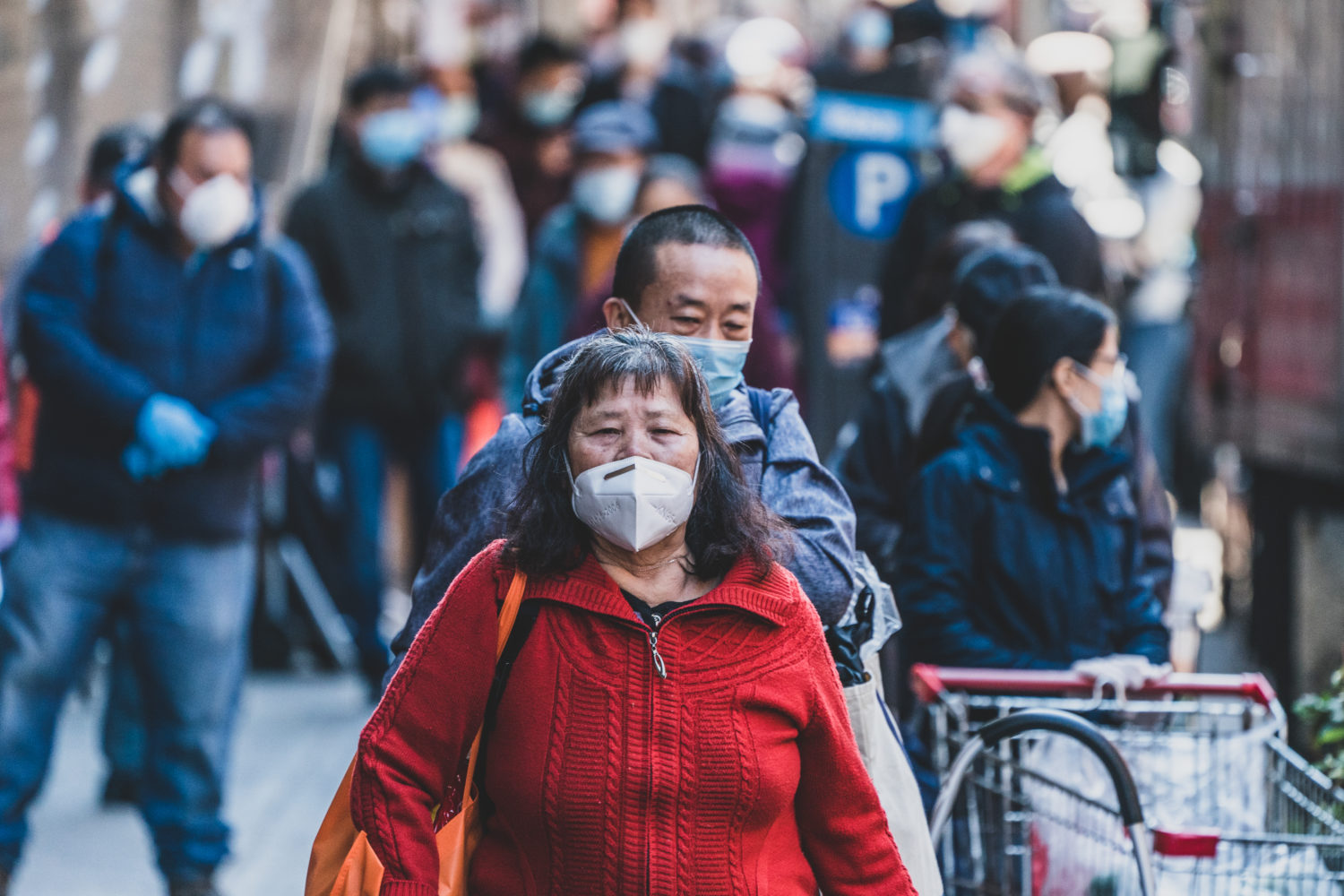
Face masks don’t slow down the denizens of Chinatown.
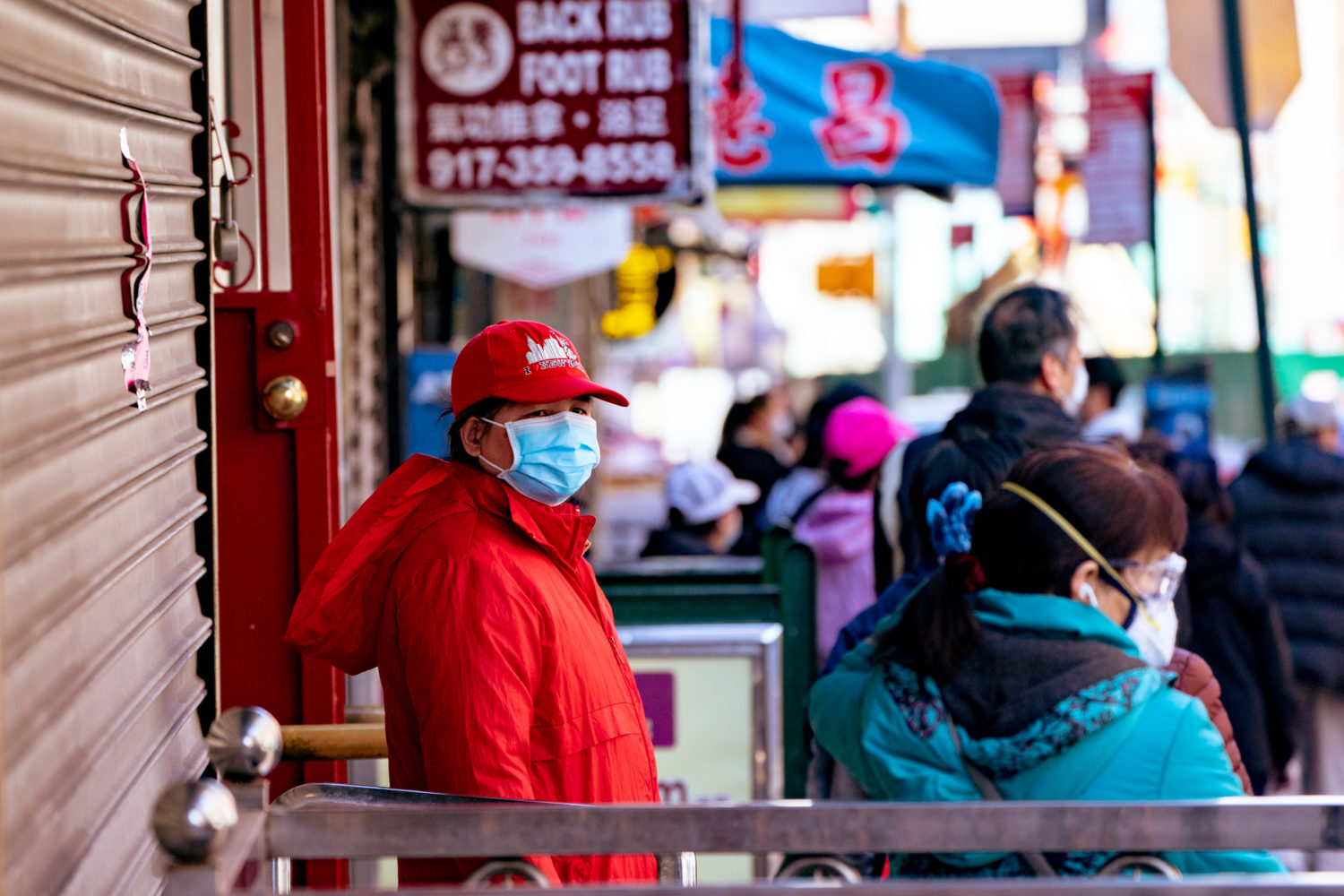
With face masks covering mouths, at least there’s probably less yelling in Chinatown.
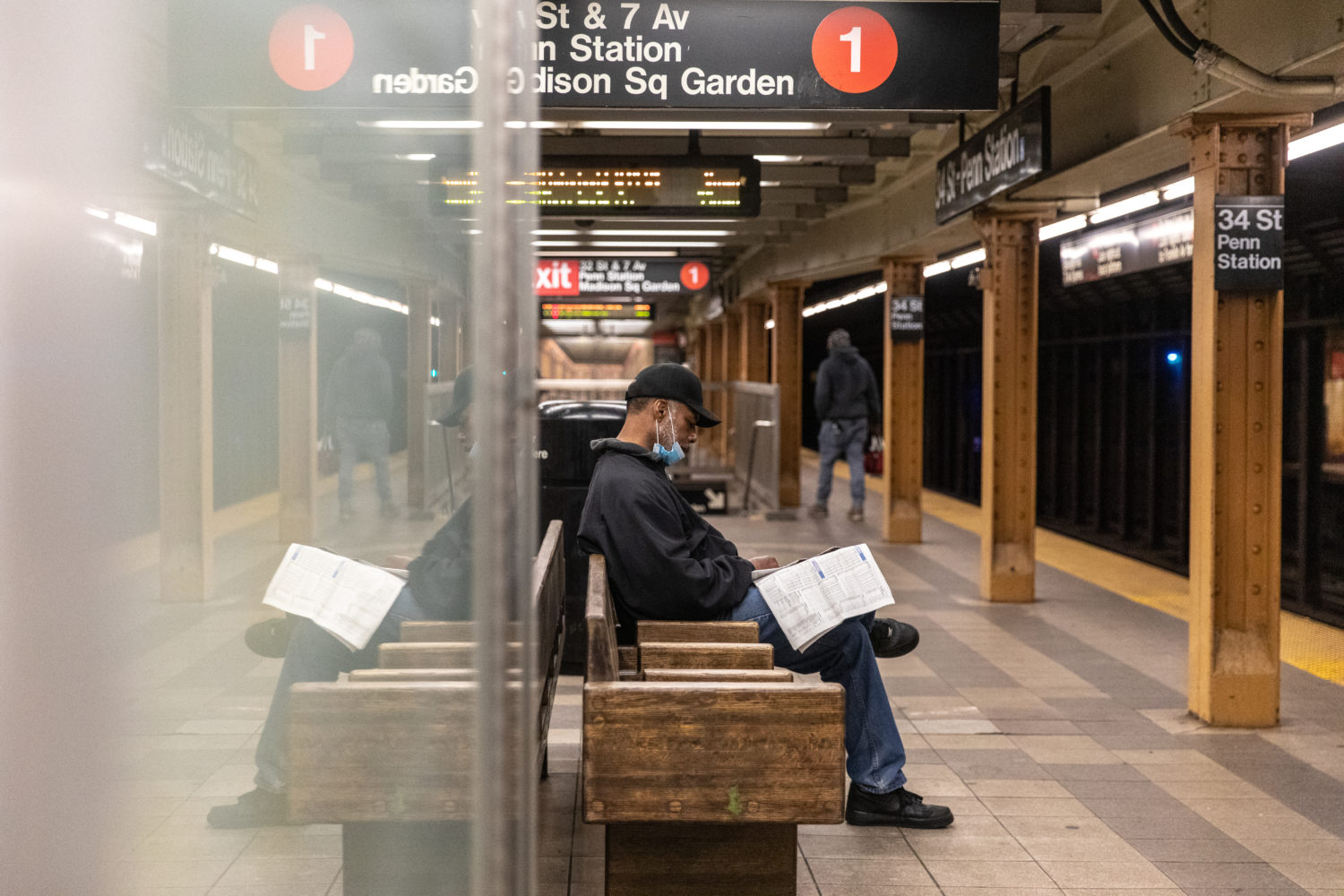
Free from his face mask, this man would rather breathe in the stench of the subway?
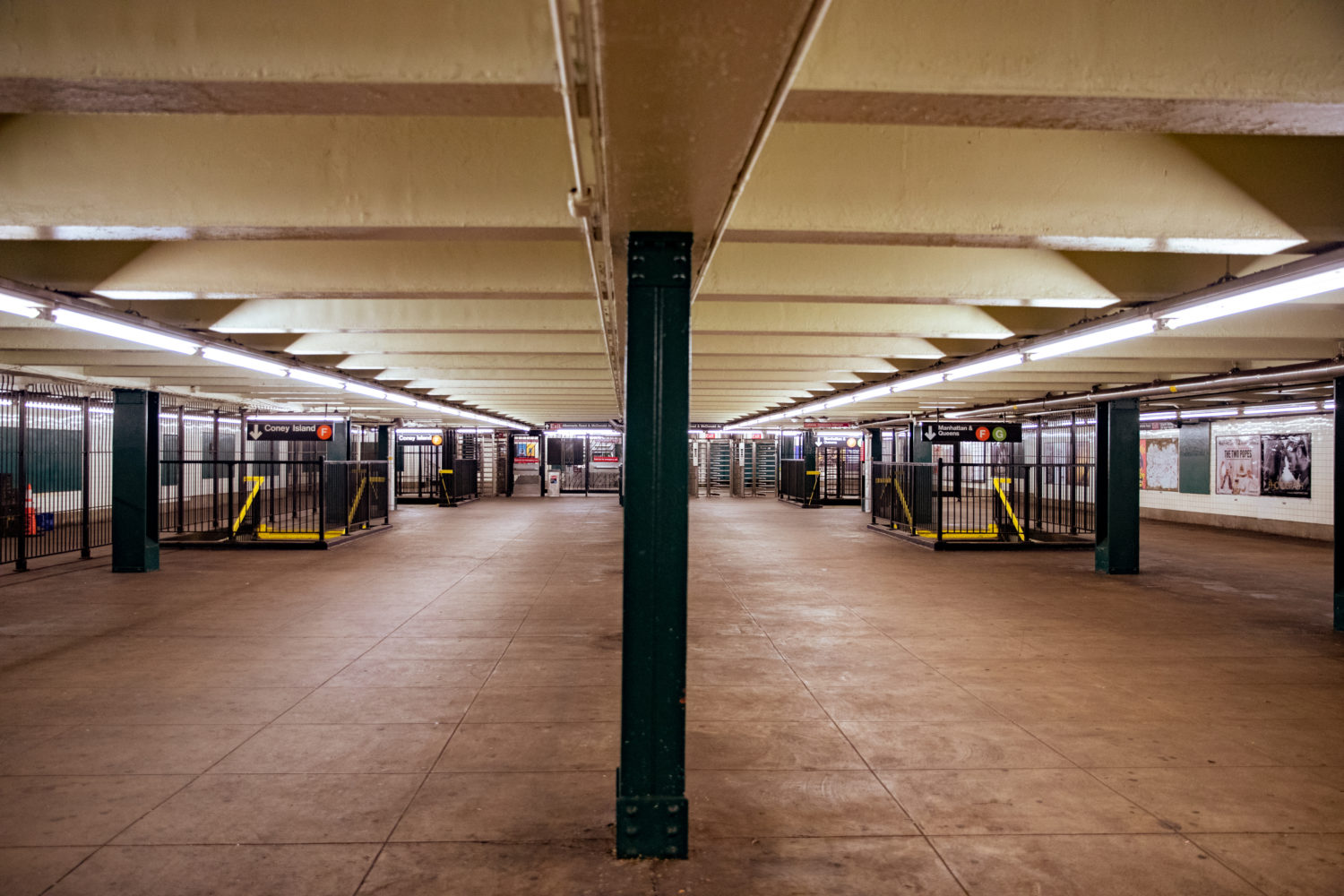
At least there are no buskers asking for money in this Brooklyn subway station.
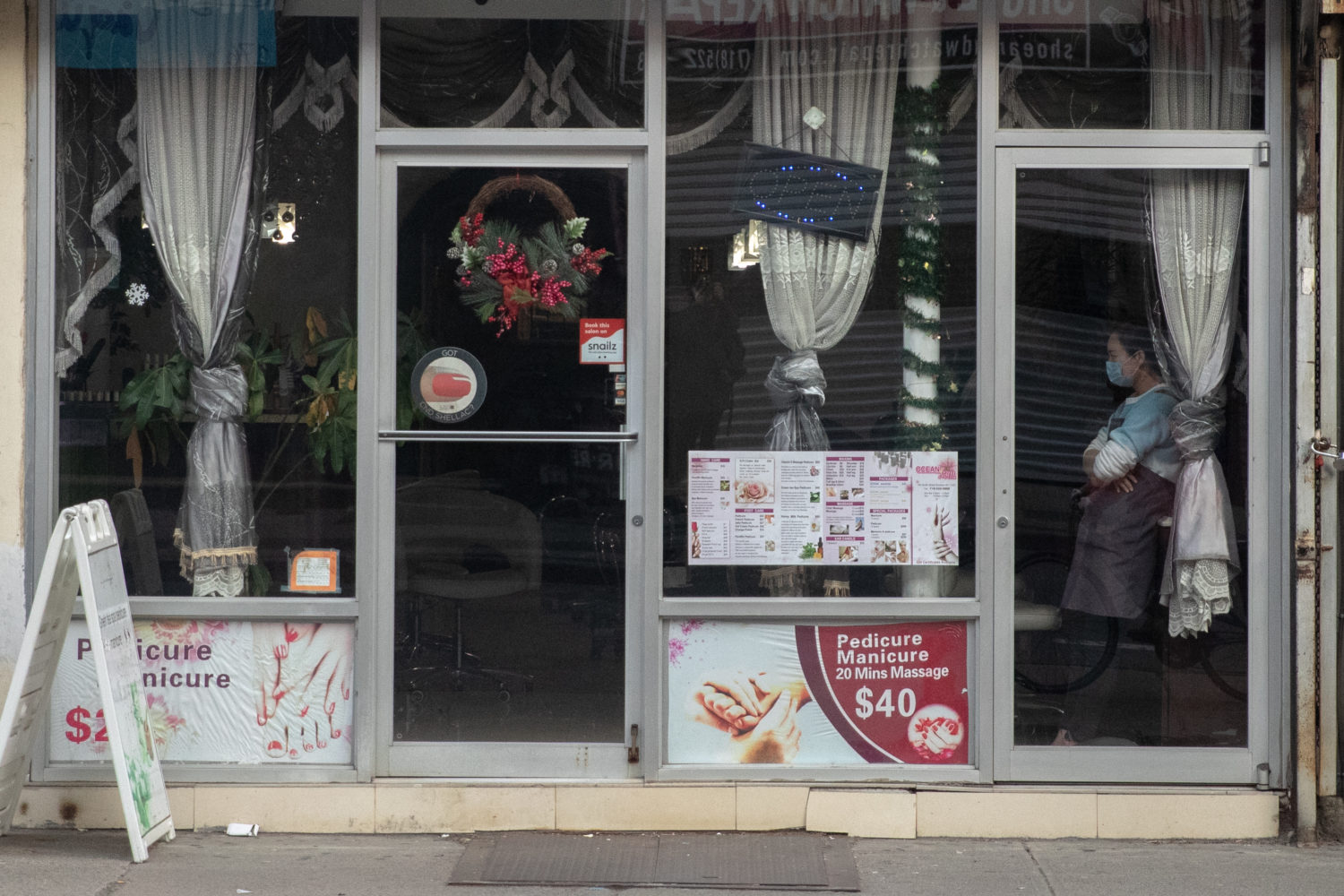
This nail salon isn’t ready to close yet, even amid a growing number of cases.
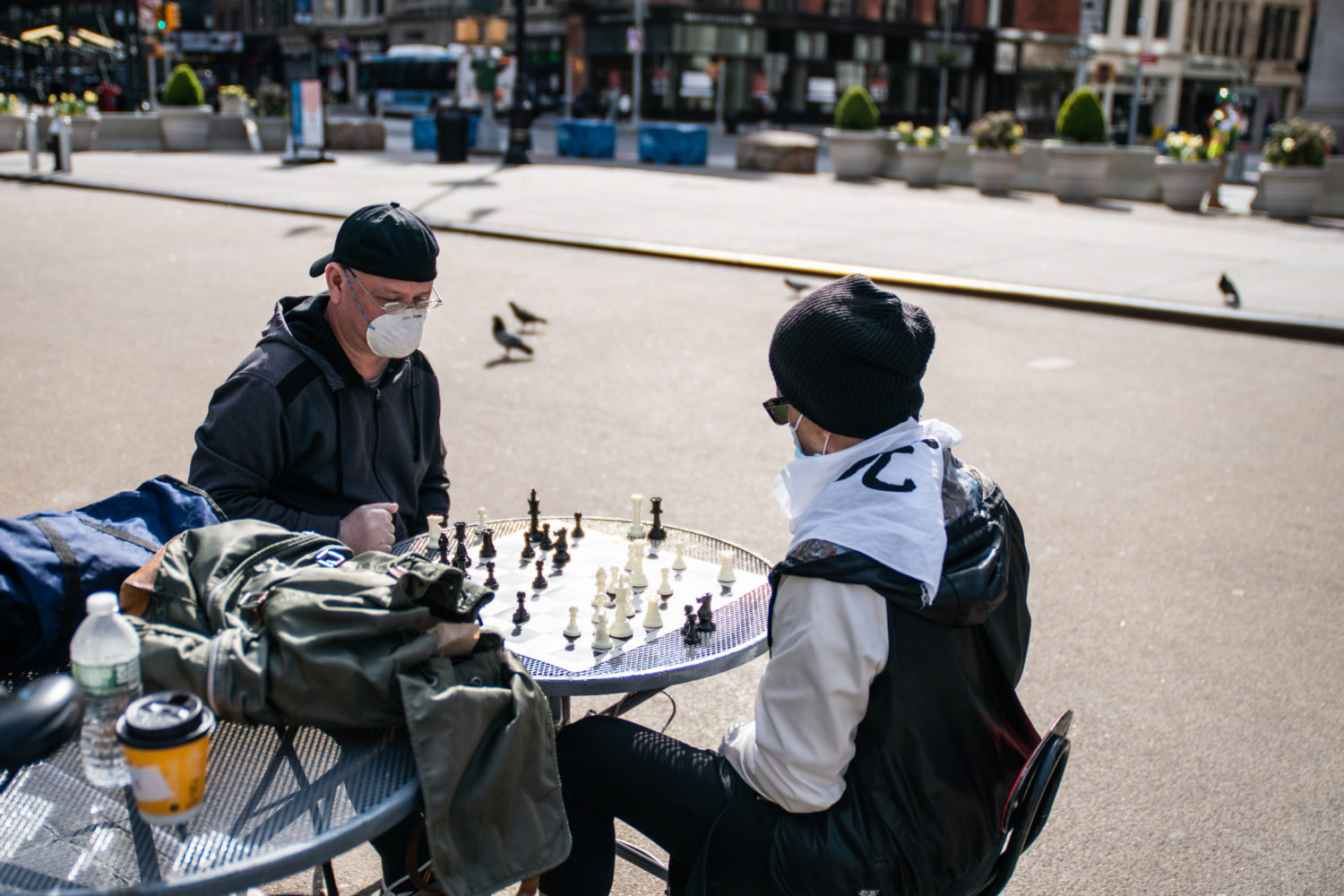
Not even a pandemic could stop these men from playing chess on the streets.
Seattle
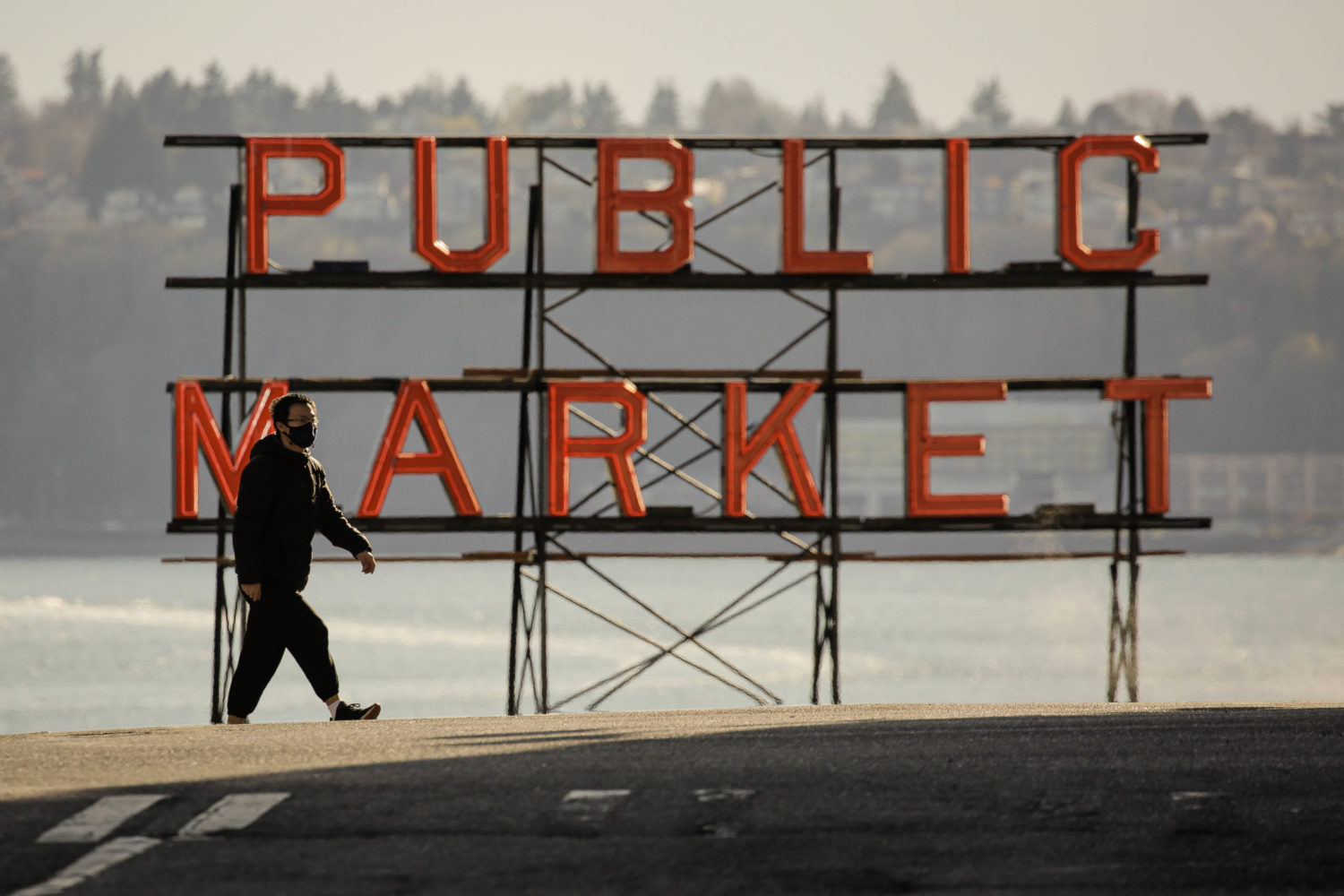
A private moment can be found at Pike Place Market. (Photo by David Ryder.)
Washington was one of the first major footholds in the U.S. for the novel coronavirus, having the unenviable honor of the first domestic COVID-19 case. Although the outbreak has somewhat abated months later, Seattle, Washington’s largest city by population, has yet to return to a state of normalcy.
Photographer and filmmaker David Ryder is familiar with covering devastating natural events, having shot hurricanes and wildfires in the past, but the COVID-19 pandemic has presented a new kind of disaster zone in his home base of Seattle. All photos by David Ryder.
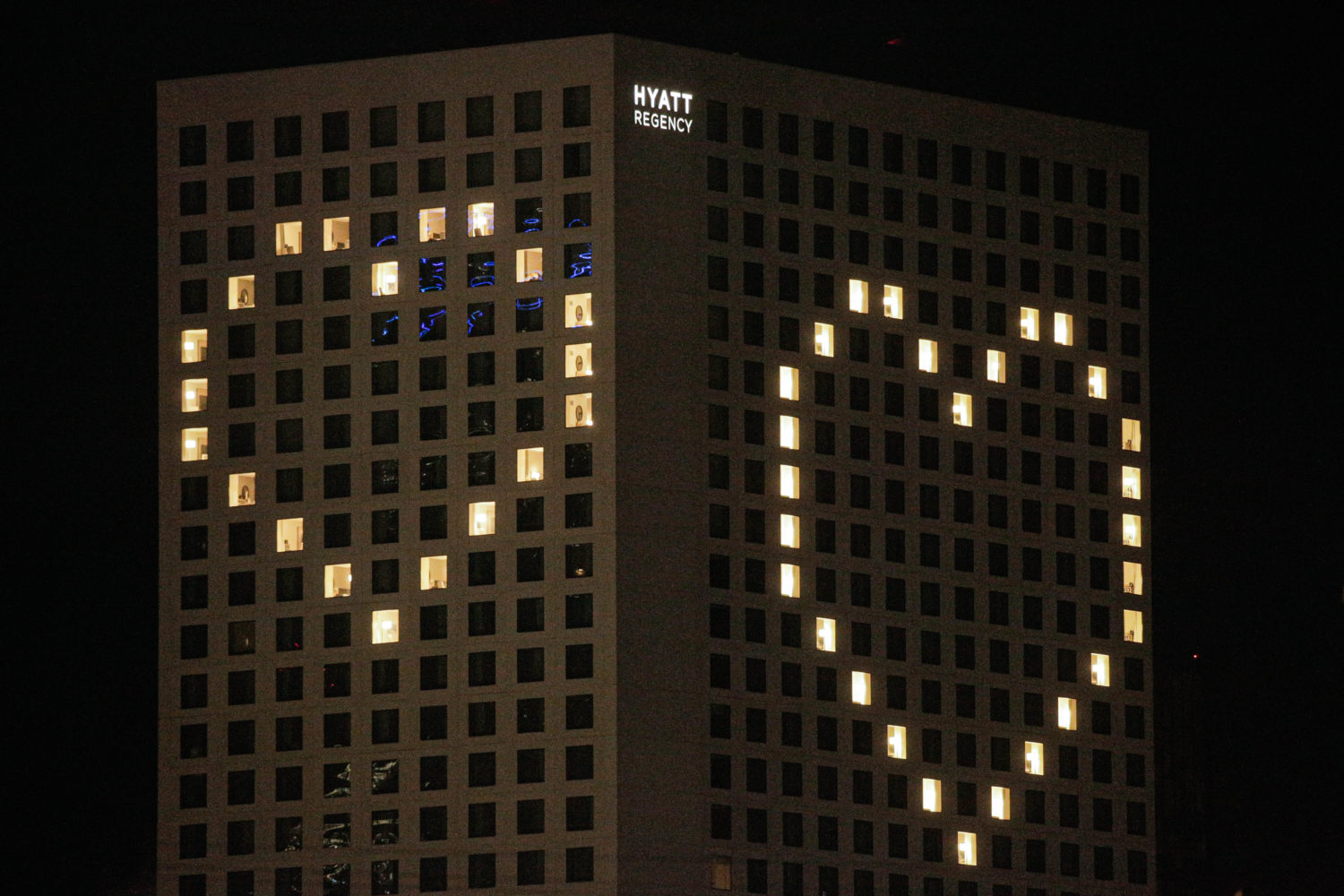
Finding a little love at the Hyatt Regency Seattle.
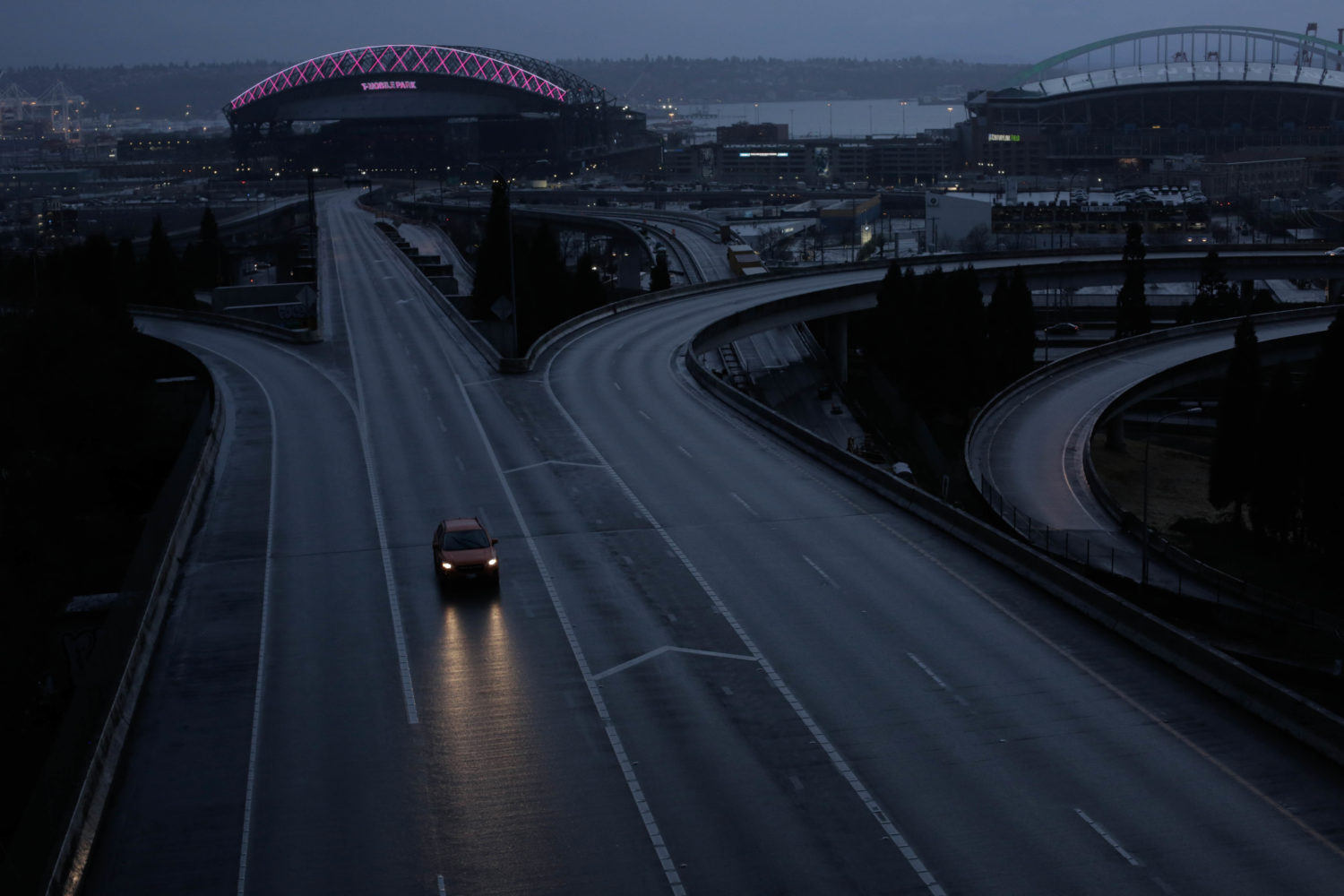
With no opening of baseball season, traffic is nonexistent around the Mariners’ T-Mobile Park—will the Seahawks’ CenturyLink Field next door see the same later this year?
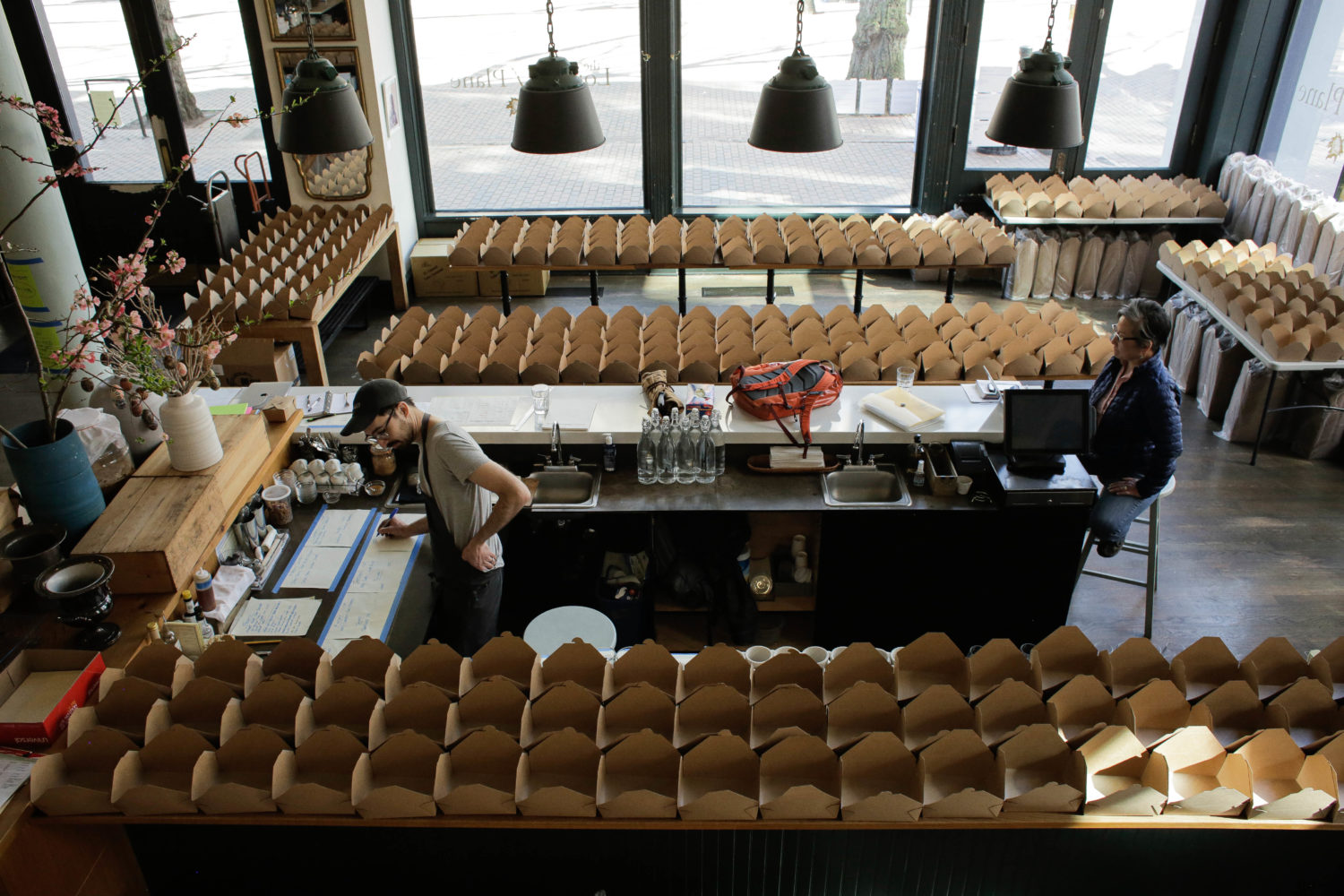
At the London Plane, chef Danny Conkling (left) precisely plans a delivery of more than a thousand meals that will be donated to local hospital workers.
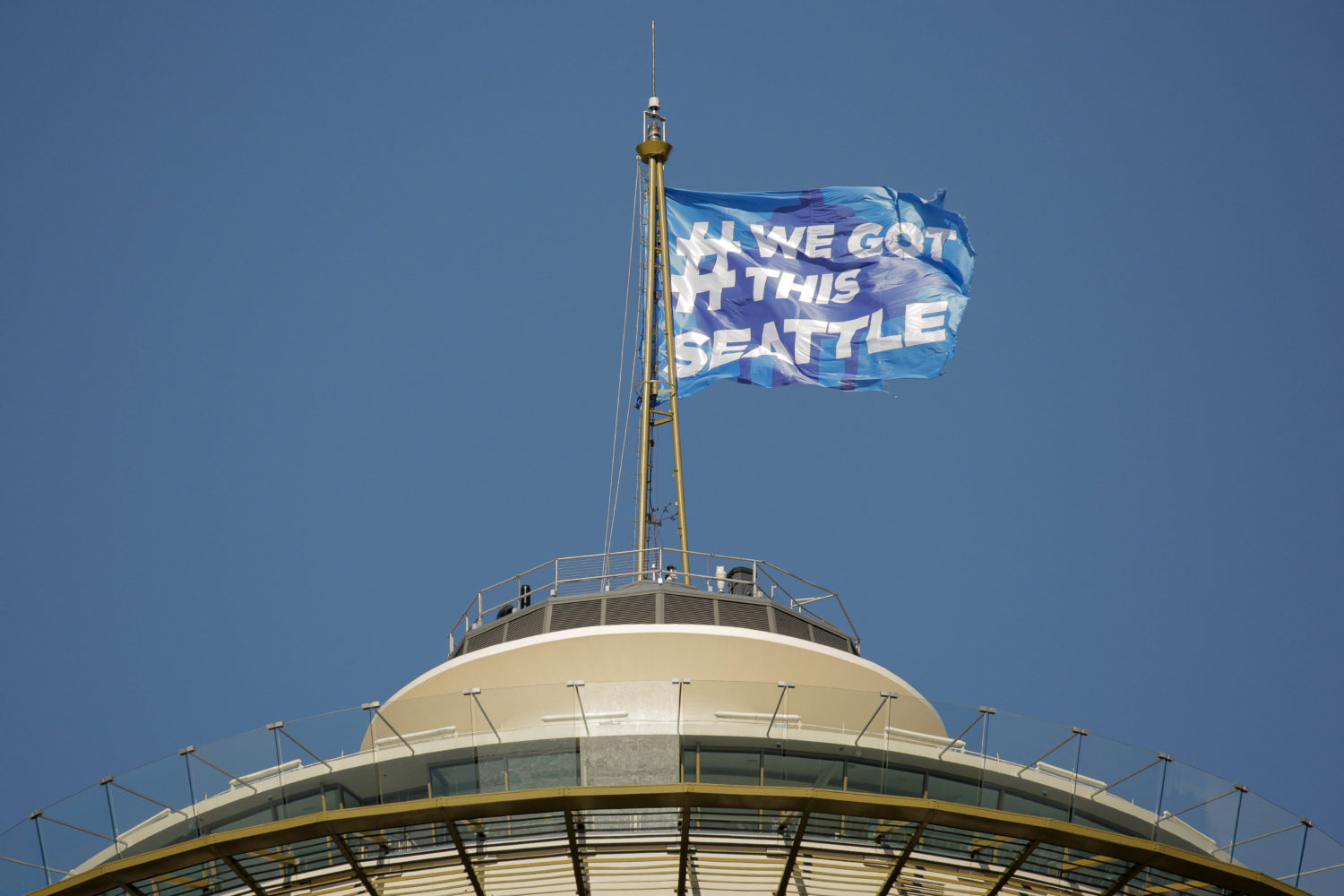
A flag with an inspiring message flies atop the Space Needle.
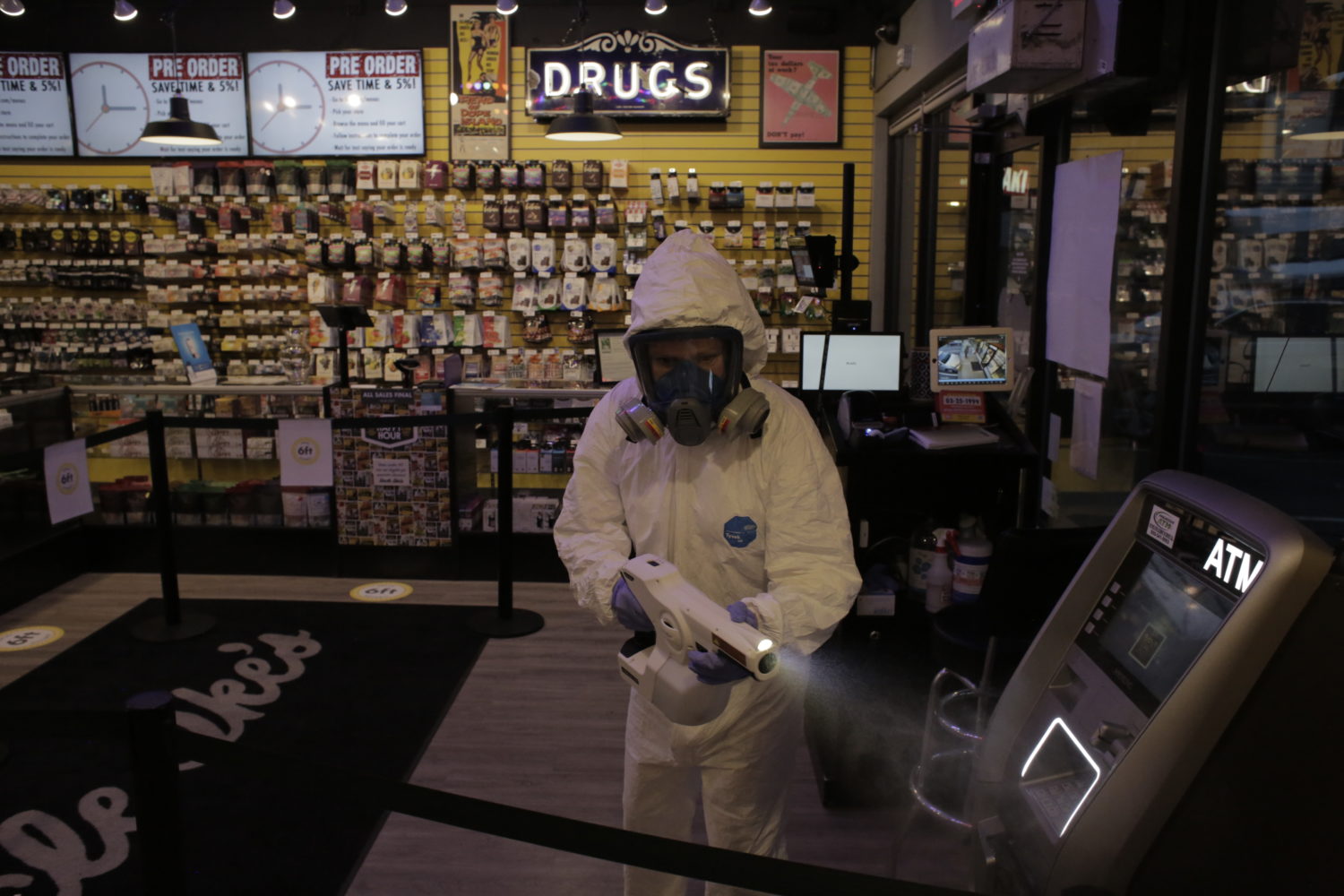
Jaime Cassidy does some disinfecting so people can make their purchases at Uncle Ike’s Pot Shop.
Toronto, Canada
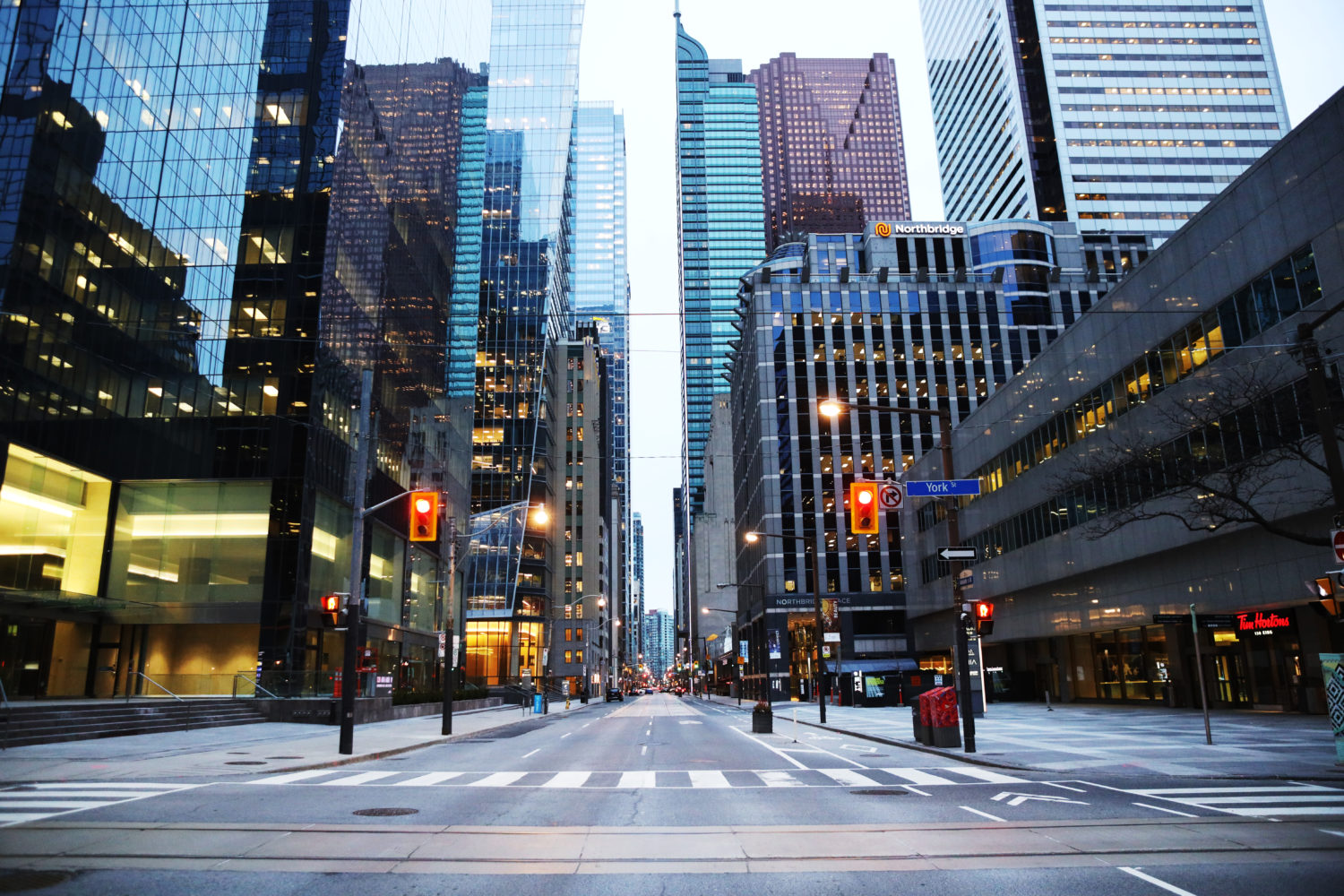
Nowadays, you can take your time in Toronto’s Financial District during rush hour. (Photo by Hyungwon Kang.)
The inhabitants of one of Canada’s largest cities have seen their lives drastically altered as a result of the COVID-19 pandemic, as well as local and national bylaws that prohibit people standing in close quarters and holding gatherings.
As an experienced photojournalist and editor, Hyungwon Kang has reported for the likes of the Associated Press and Reuters, covering stories from the White House and in both North and South Korea. Here, he sheds light on a transformed city, showing the pandemic’s effects outside of the United States. All photos by Hyungwon Kang.
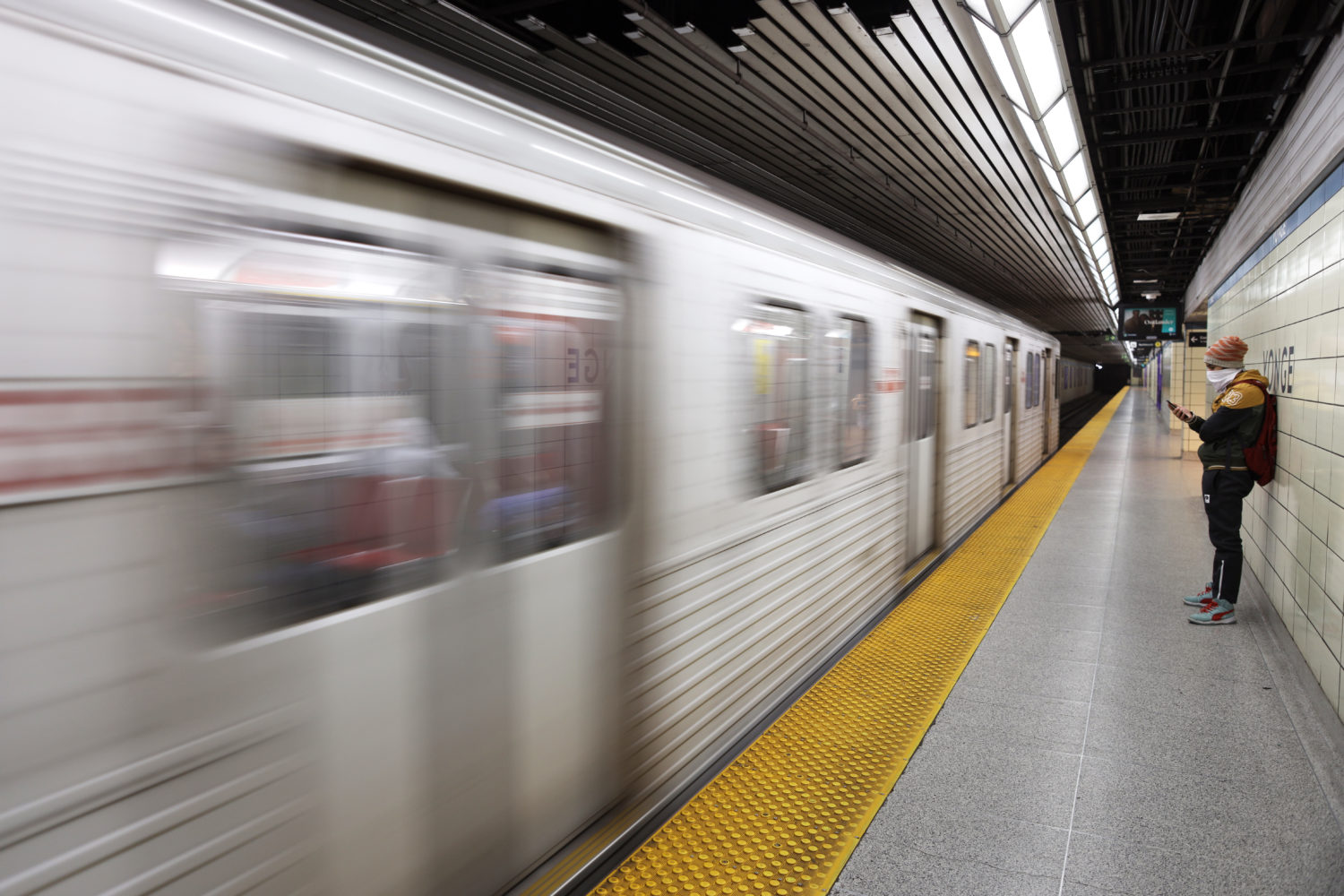
It’s not as hectic as usual for passengers of the Toronto Transit Commission.
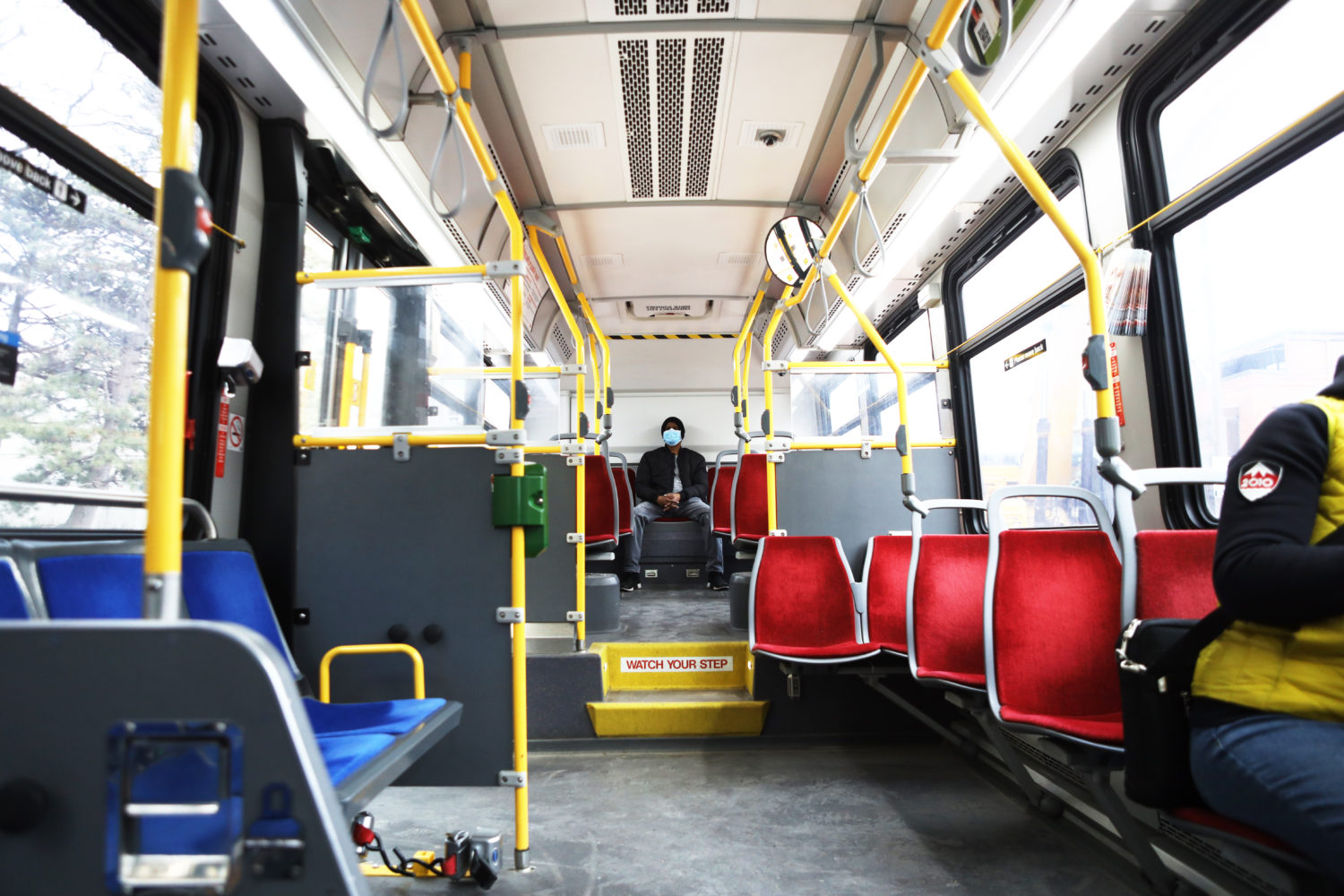
With TTC buses experiencing a ridership decrease of 90 percent, there’s plenty of space to spread out.
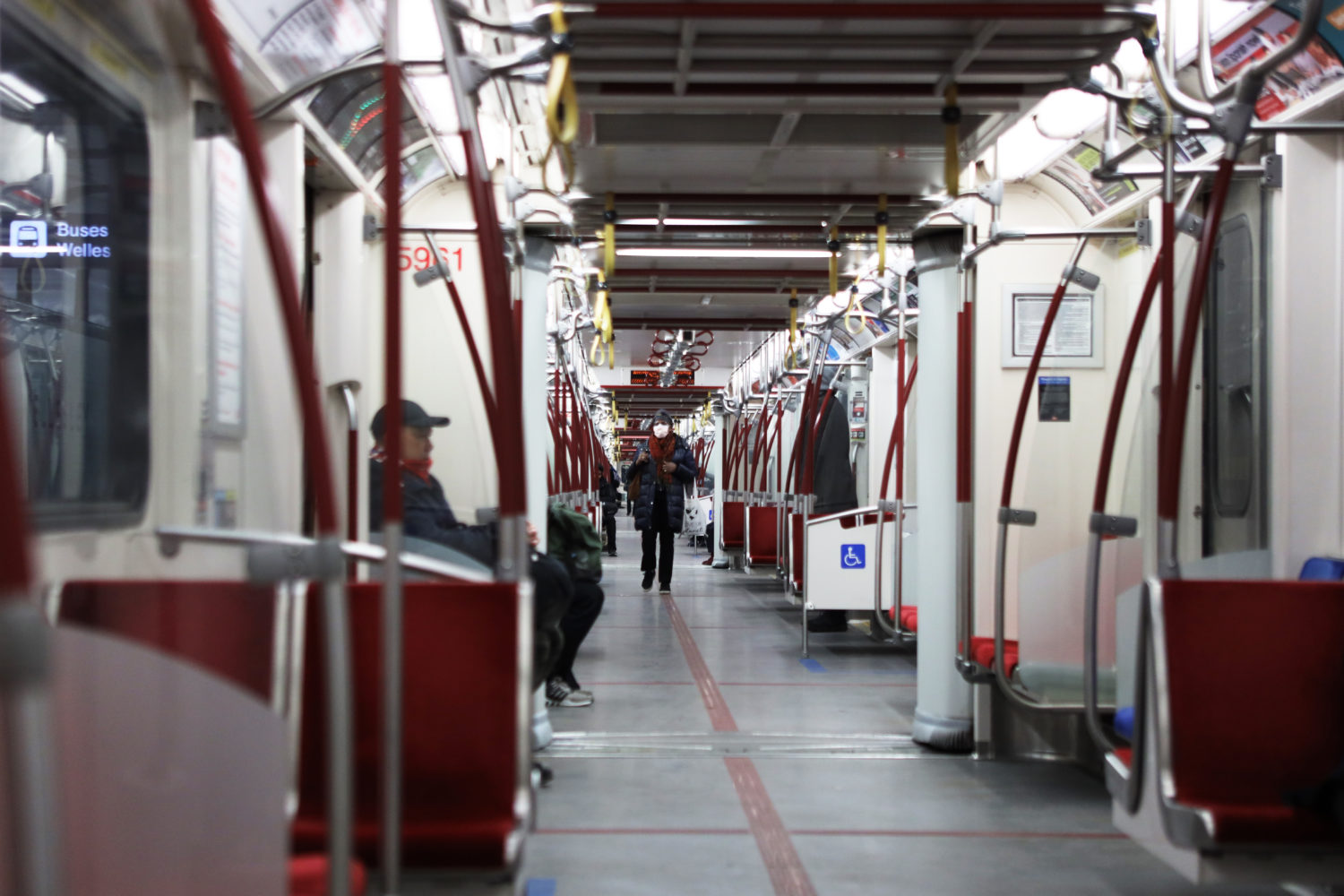
There’s room to spare in the subway.
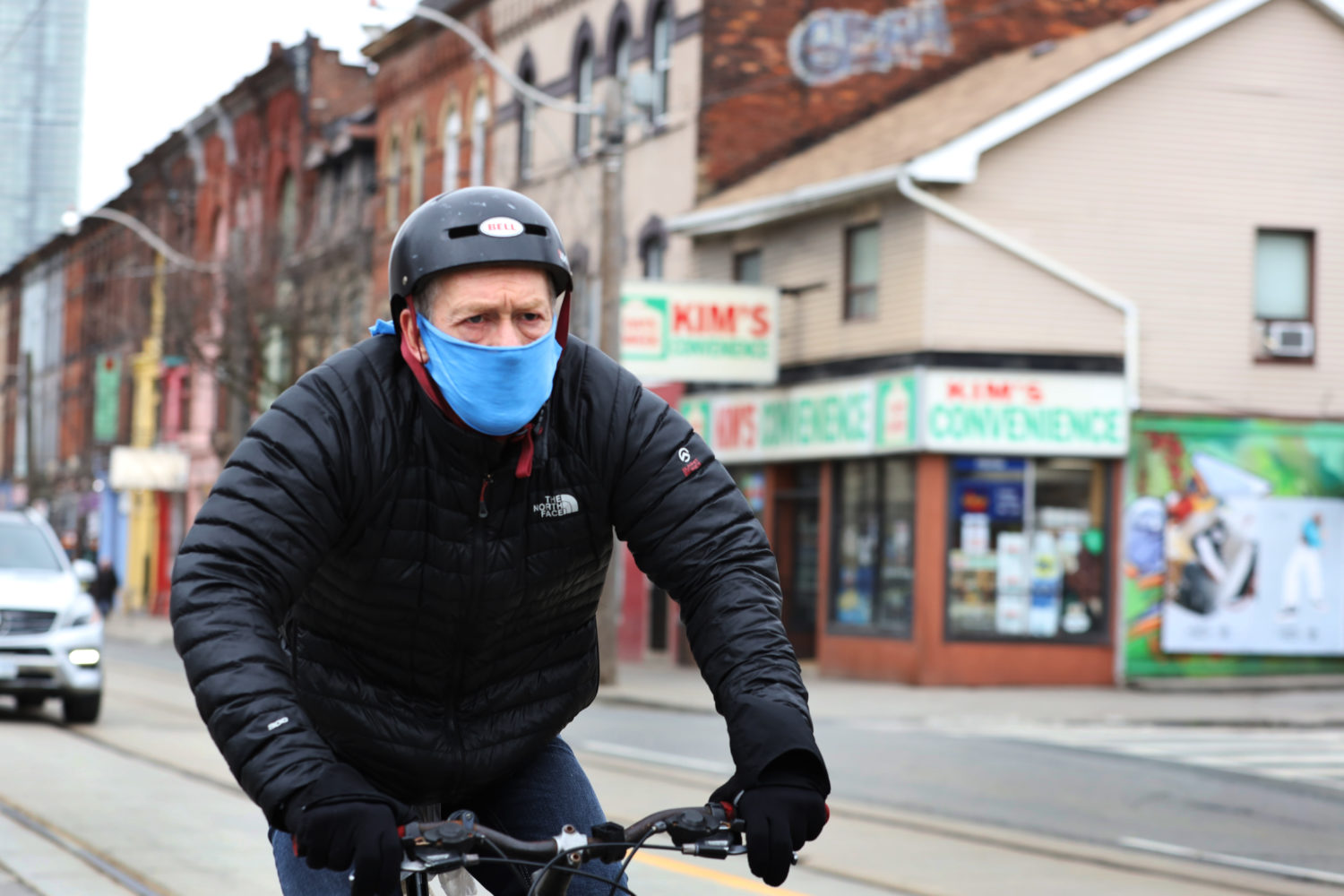
Yes, there really is a store that inspired the CBC TV show.
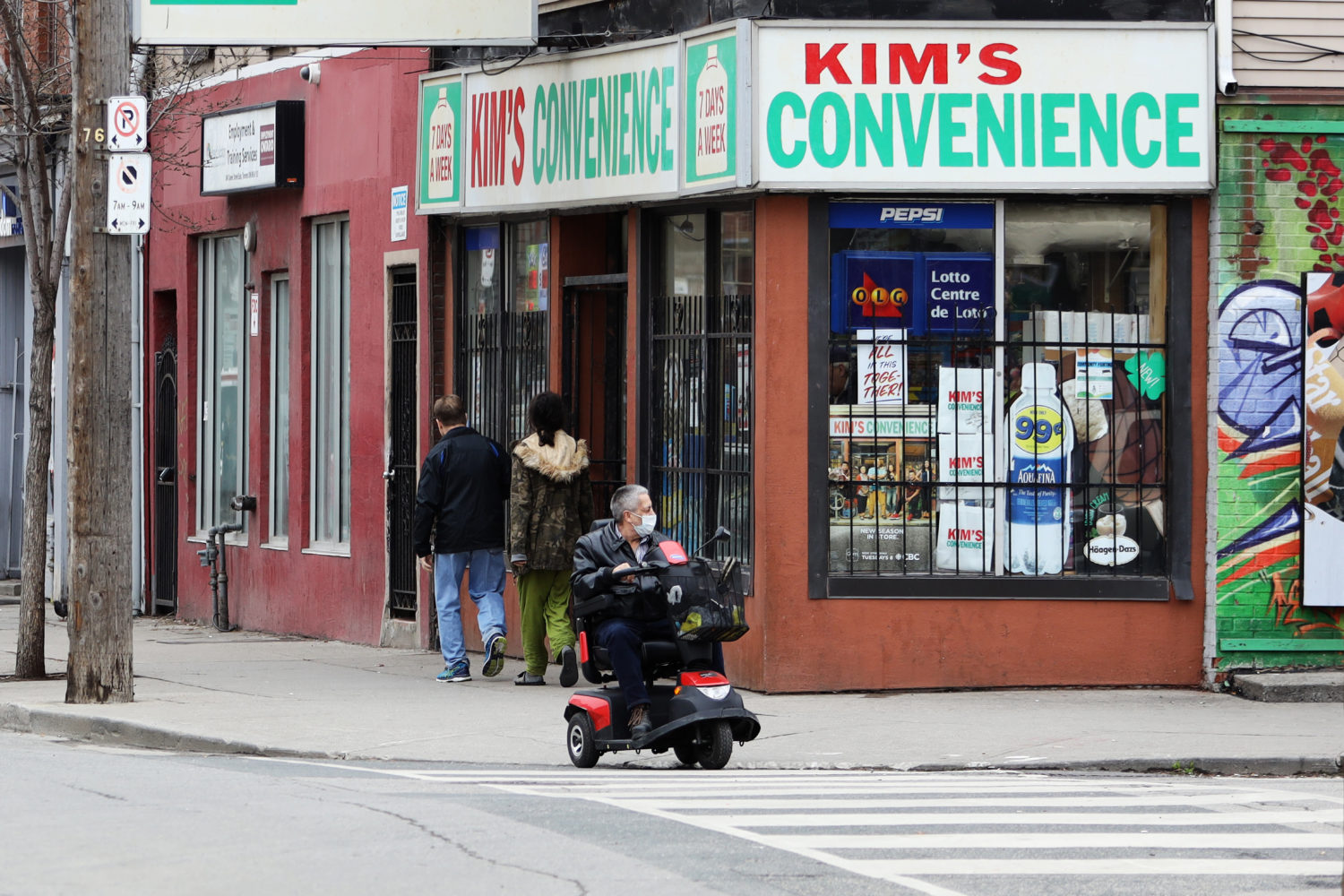
No Simu Liu in sight, however.
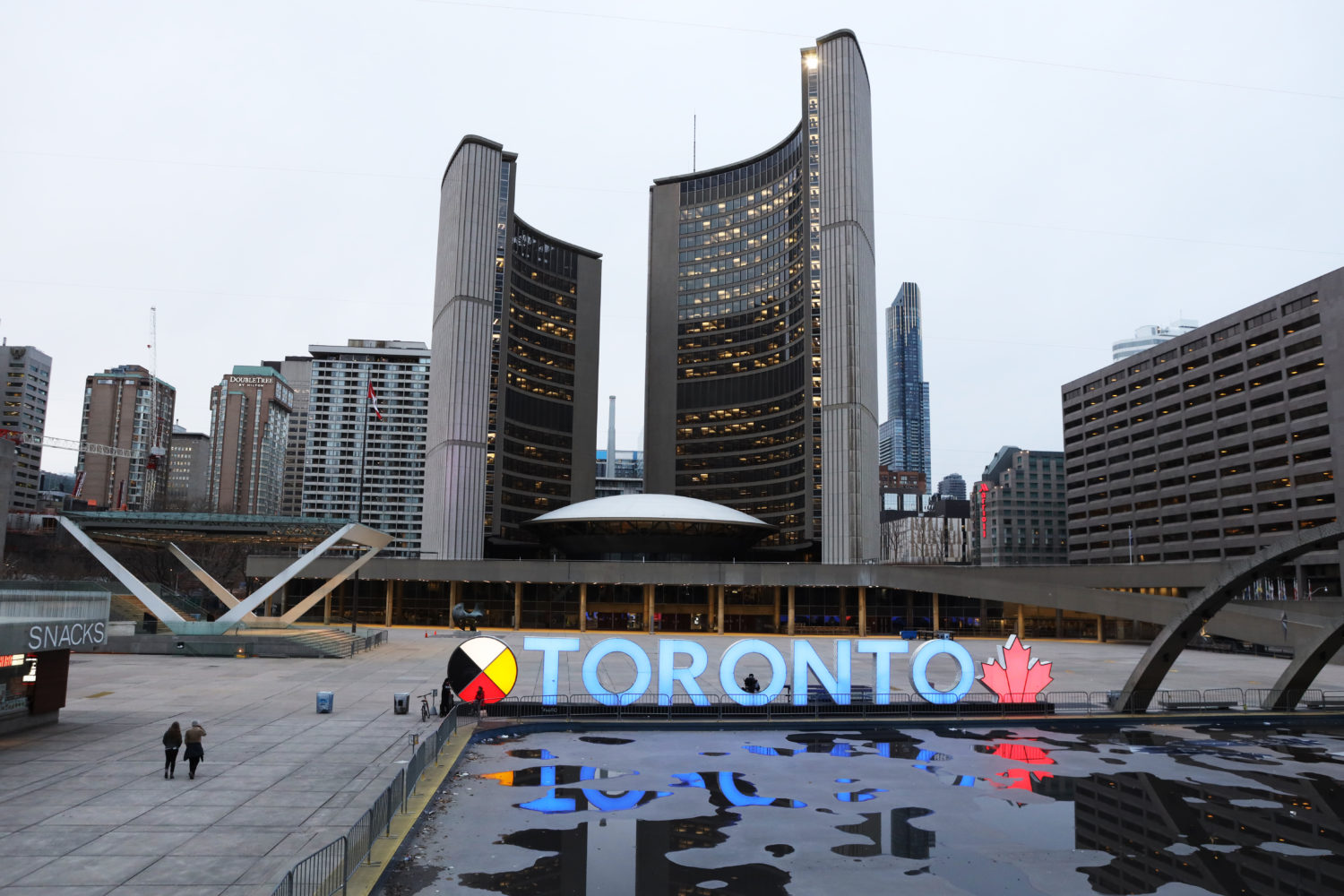
There are no public events to get excited about in Nathan Phillips Square with social distancing guidelines in place.
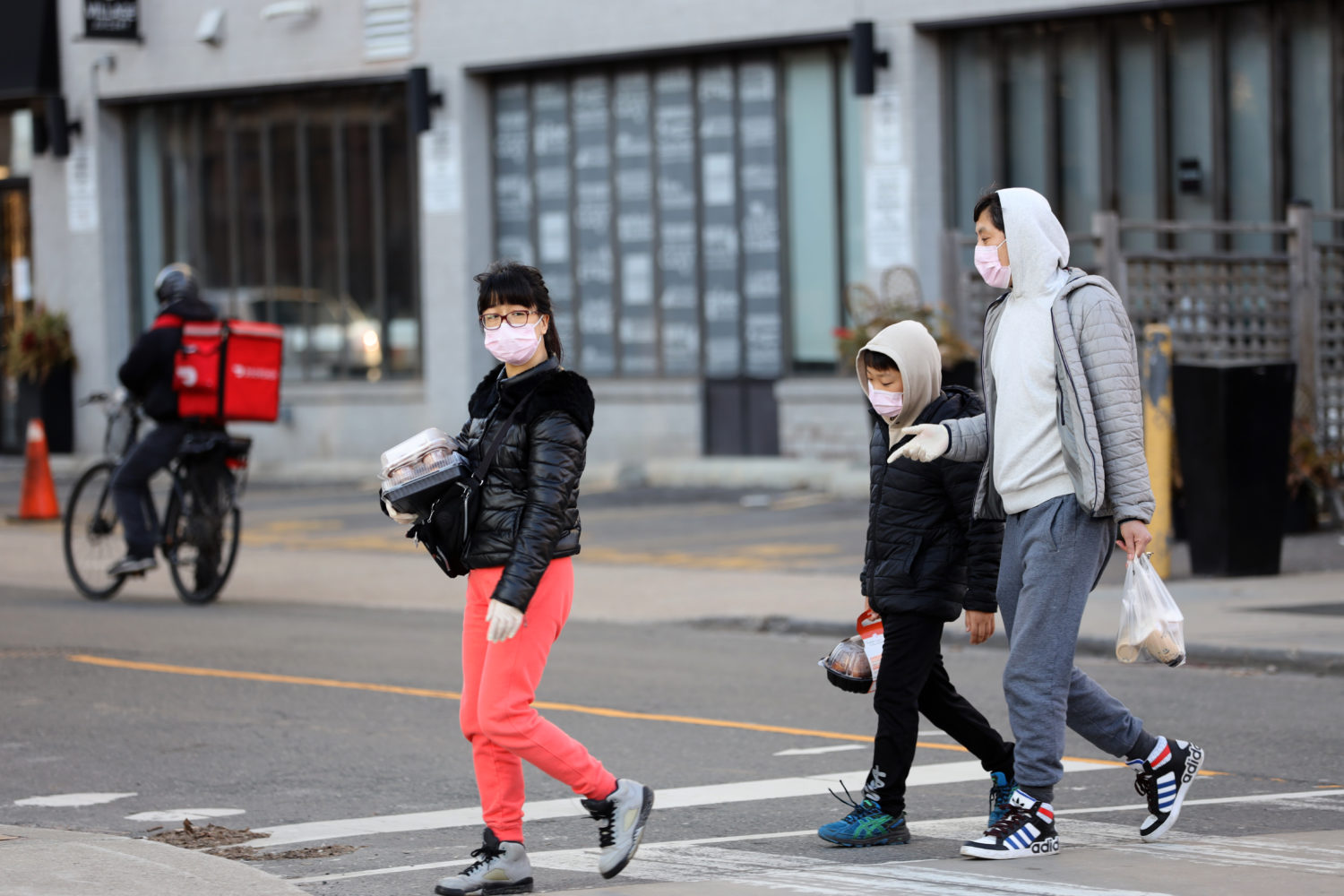
Grabbing food and groceries is done wearing masks and gloves.
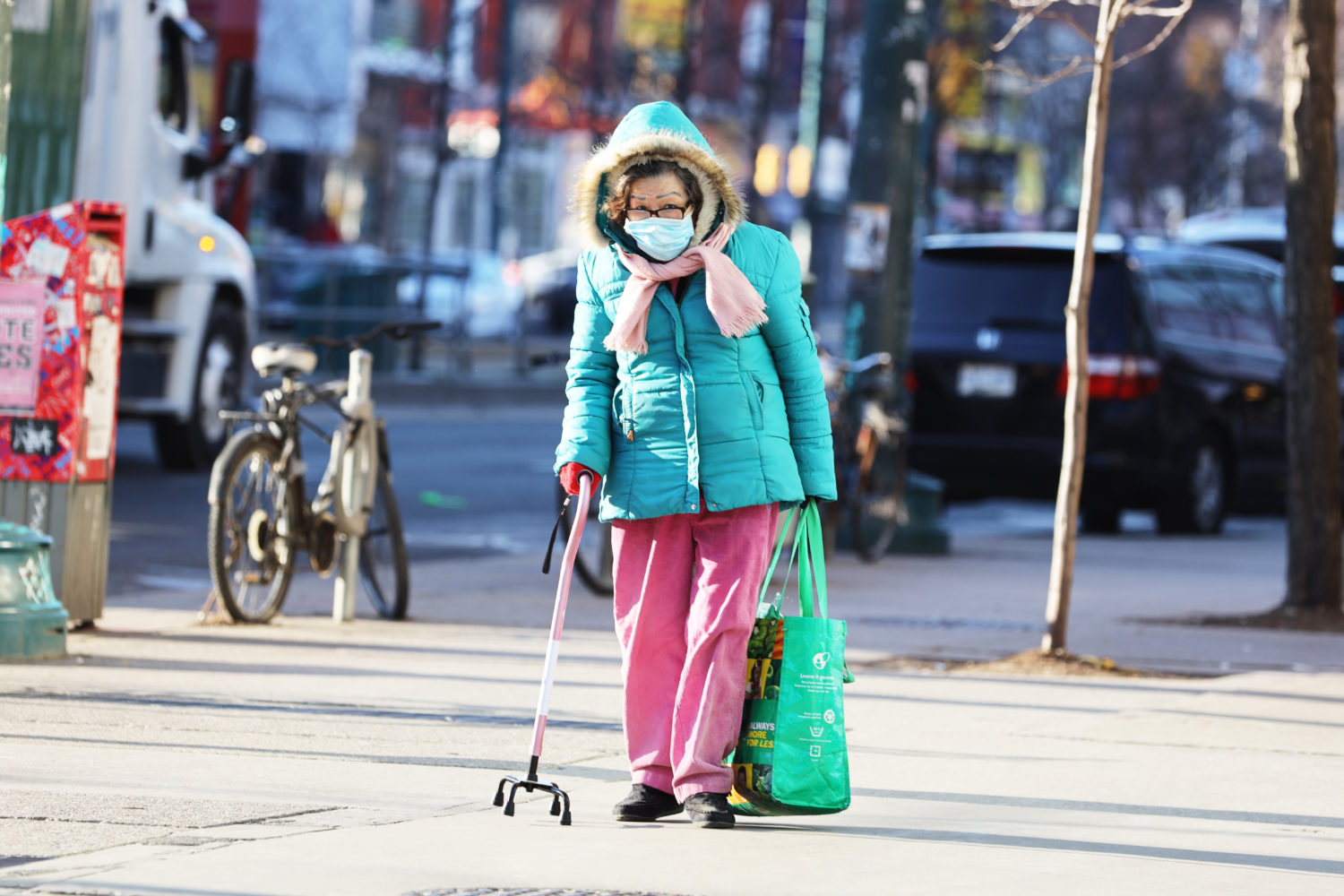
Pedestrians in Chinatown now have plenty of time during rush hour.
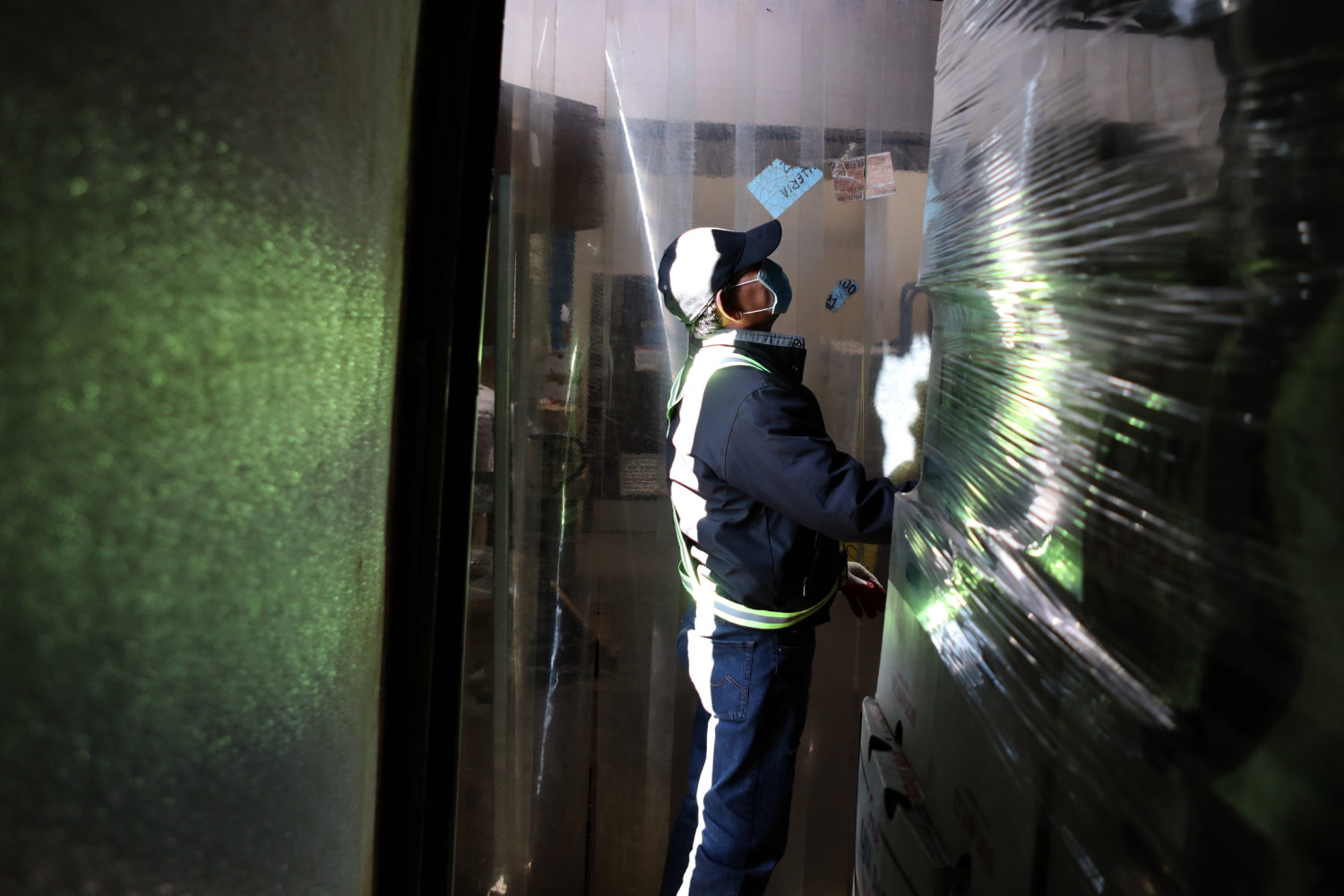
Shipments are still being made to a Korean grocery store to keep food supplies going.
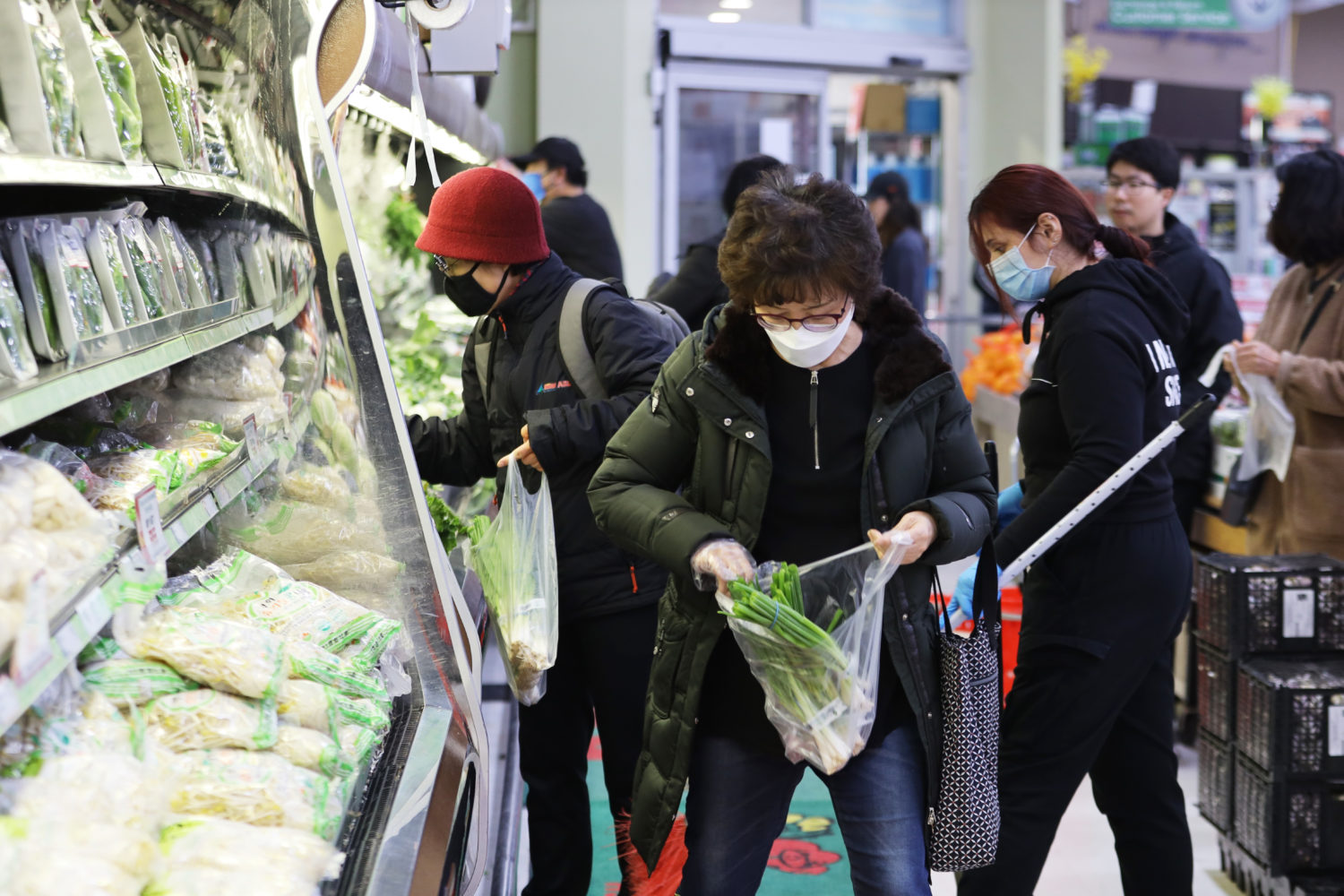
Shoppers are booking it to the Korean grocery store to stock up on their veggies.
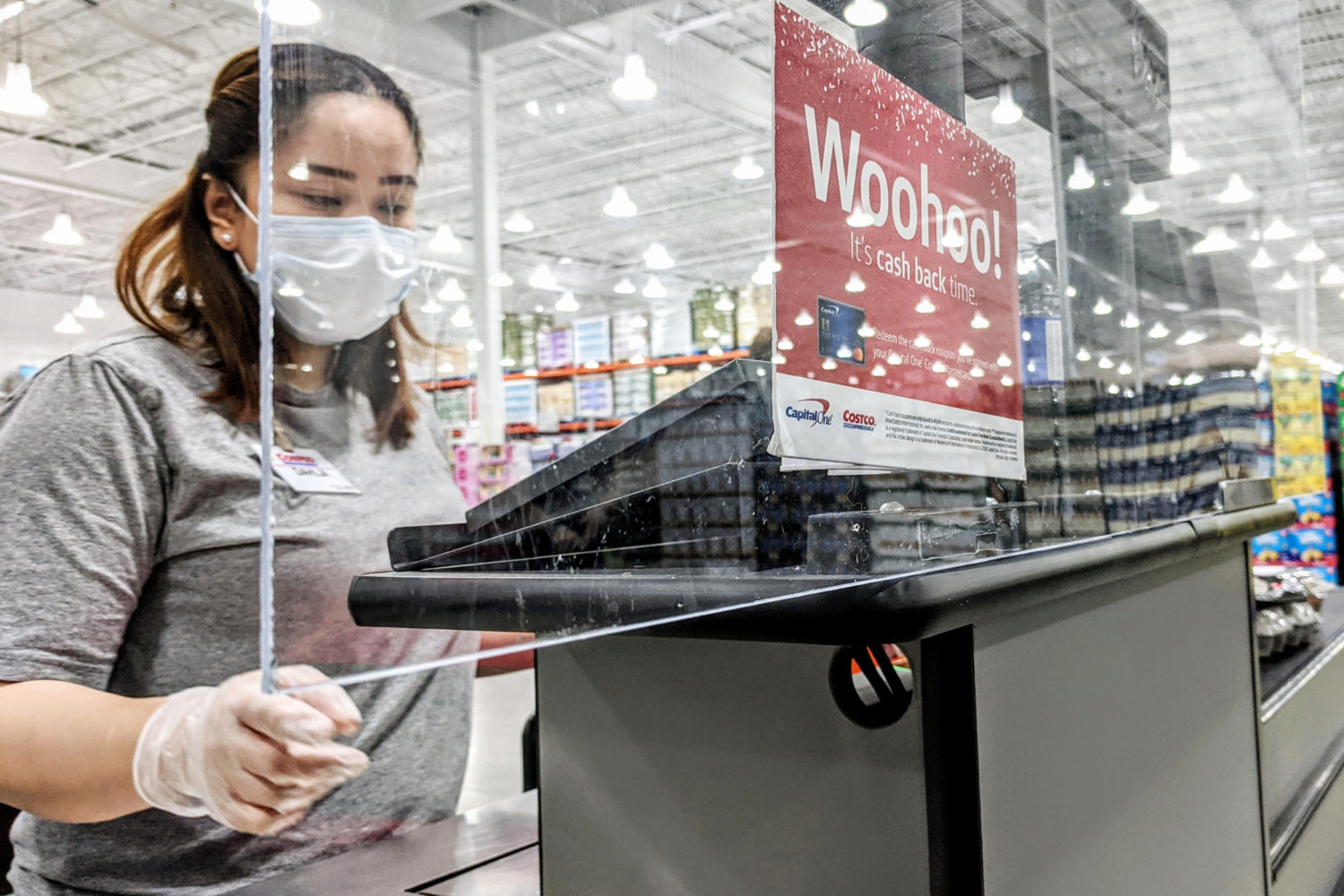
At Costco, plexiglass has been installed to protect workers. But can shoppers still get their bulk Canadian bacon through?
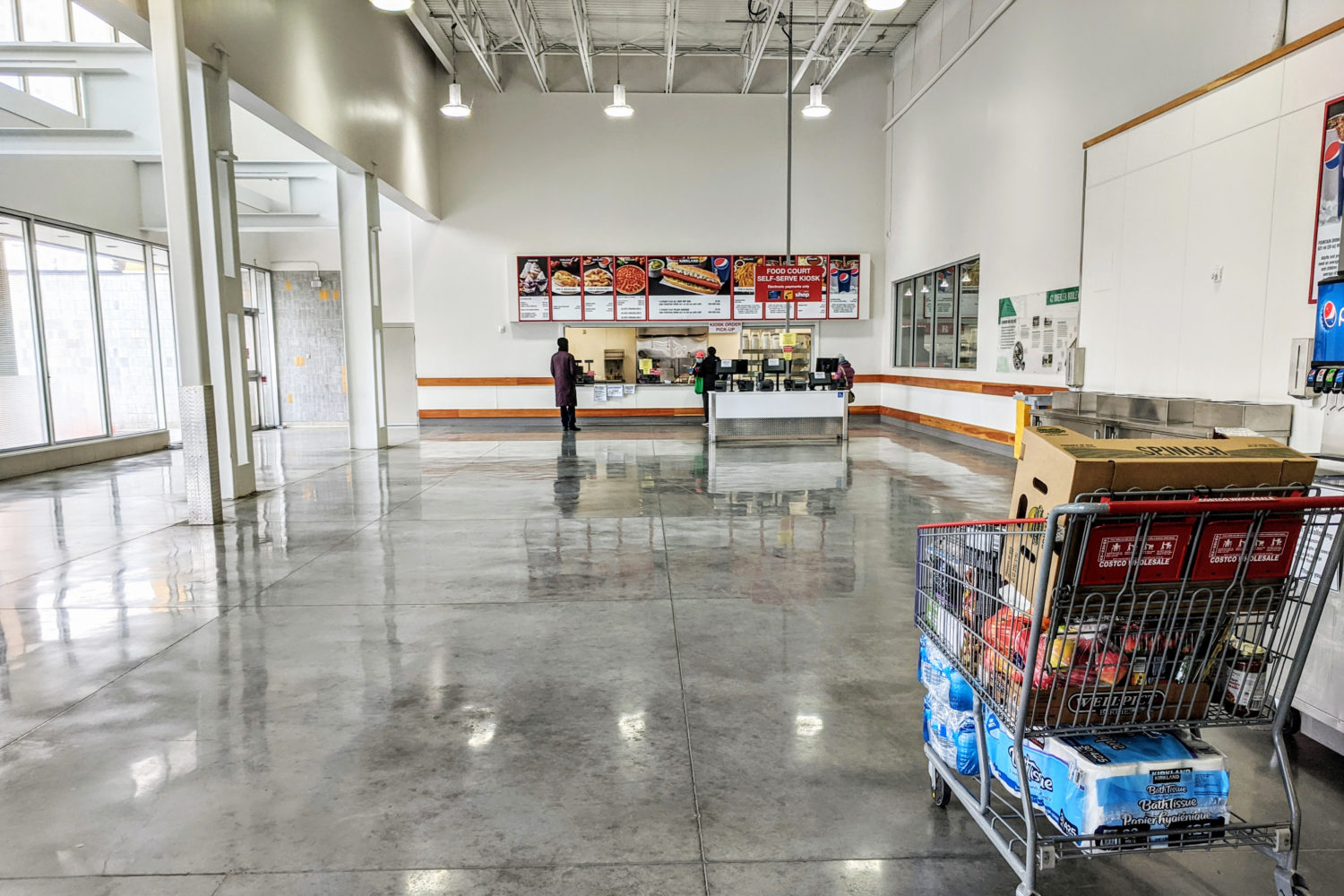
At least there are no lines to get your cheap hot dogs and chicken bakes at the Costco food court.
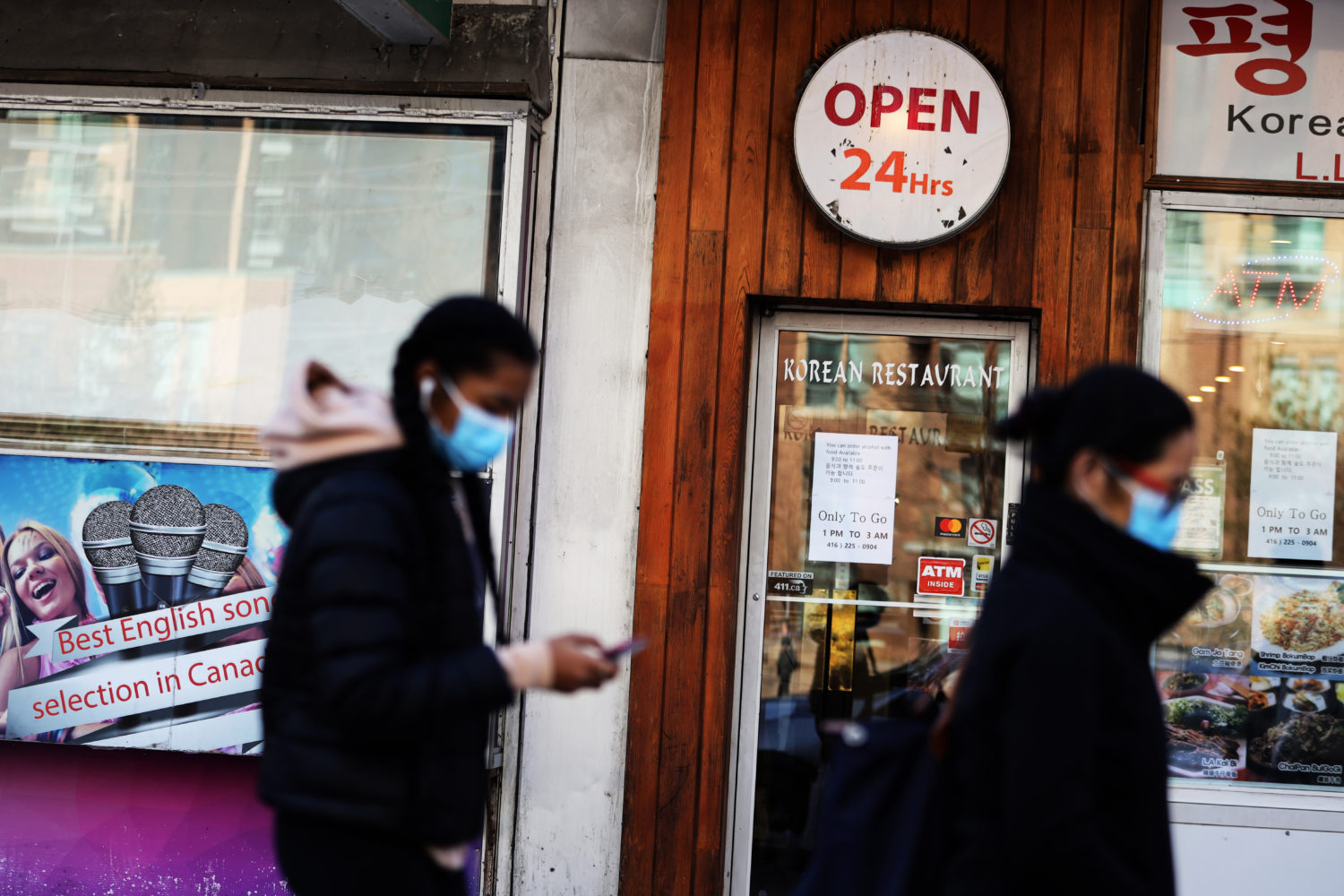
A consequence of eating by takeout: no unlimited banchan at this Korean restaurant.
Officials
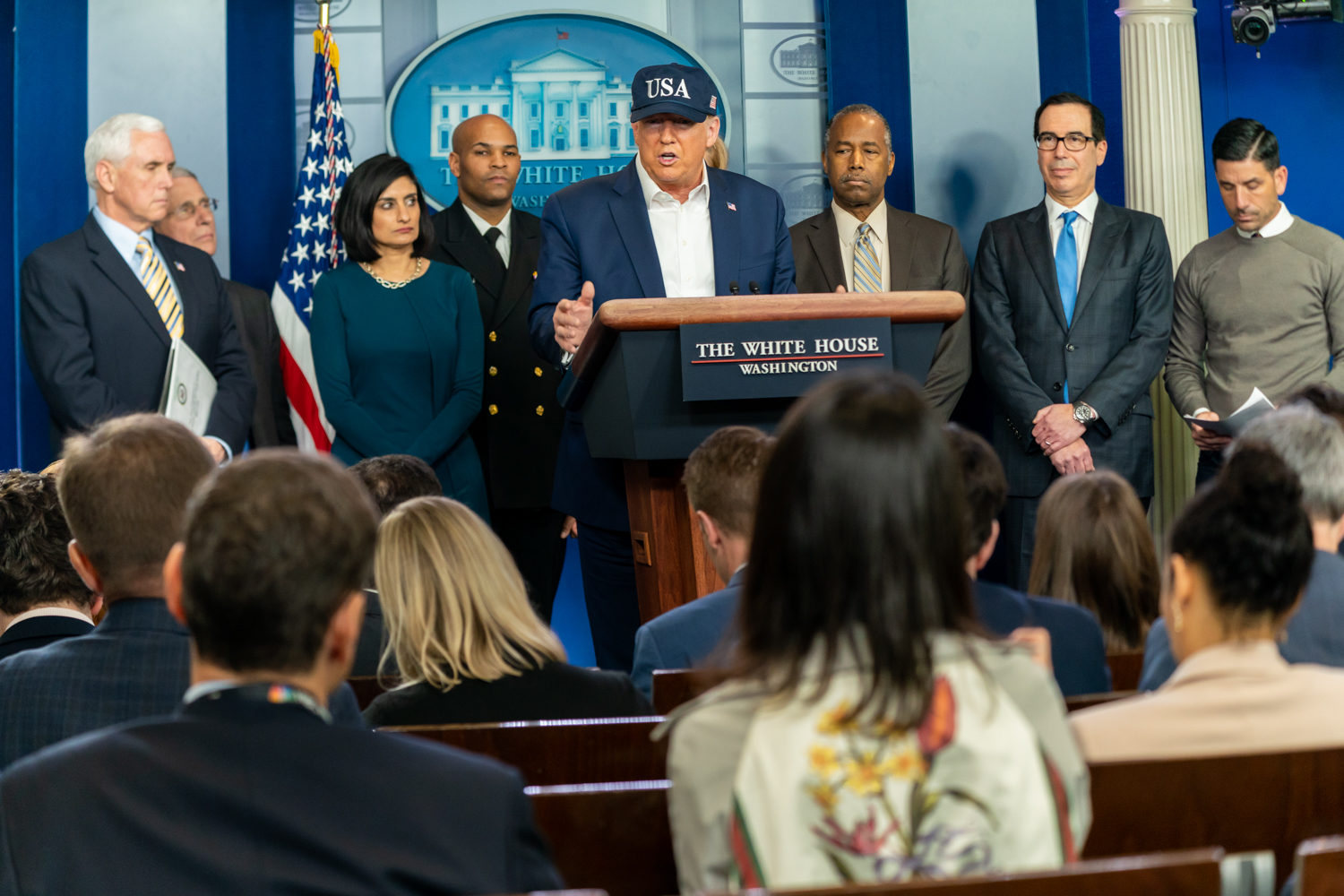
President Donald J. Trump, joined by Vice President Mike Pence and members of the White House Coronavirus Task Force, takes questions from the press at a coronavirus update briefing in the James S. Brady Press Briefing Room of the White House. (Official White House photo by Shealah Craighead.)
As citizens across the country grapple with the effects of the novel coronavirus outbreak and subsequent shelter-in-place orders, these photos illustrate what’s happening at the state and federal levels during the pandemic.
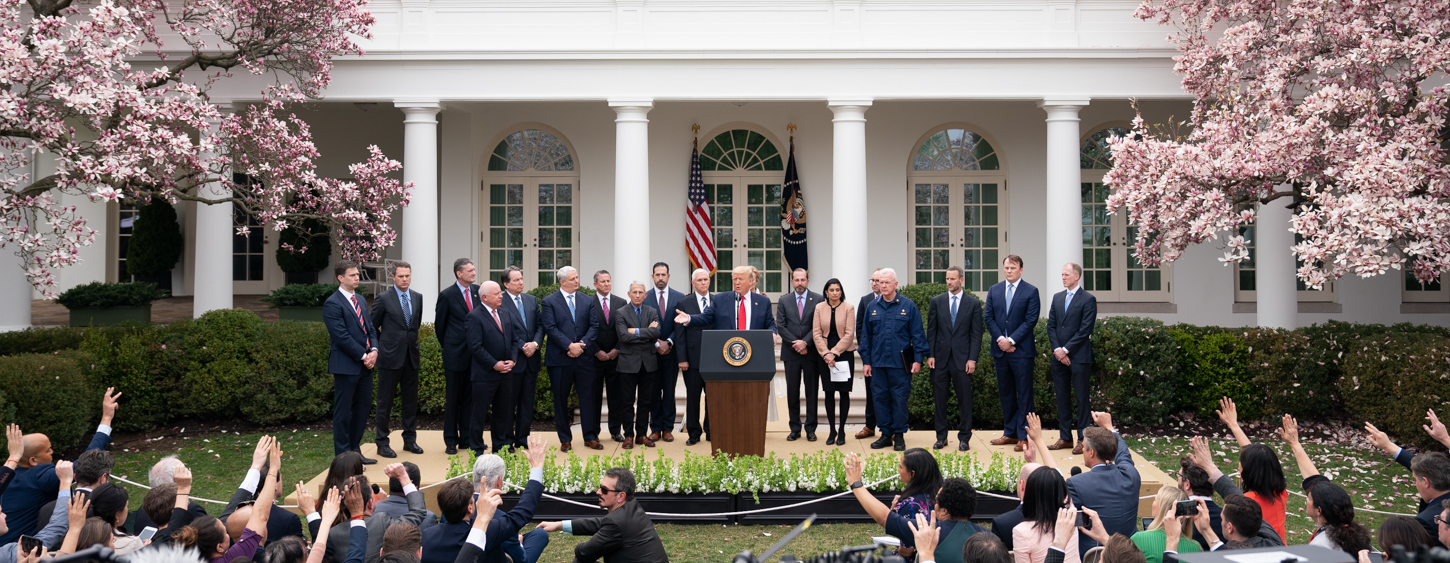
President Trump and Vice President Pence and members of the White House Coronavirus Task Force announce a national emergency to further combat the coronavirus outbreak, at a news conference in the Rose Garden of the White House. (Official White House photo by D. Myles Cullen.)
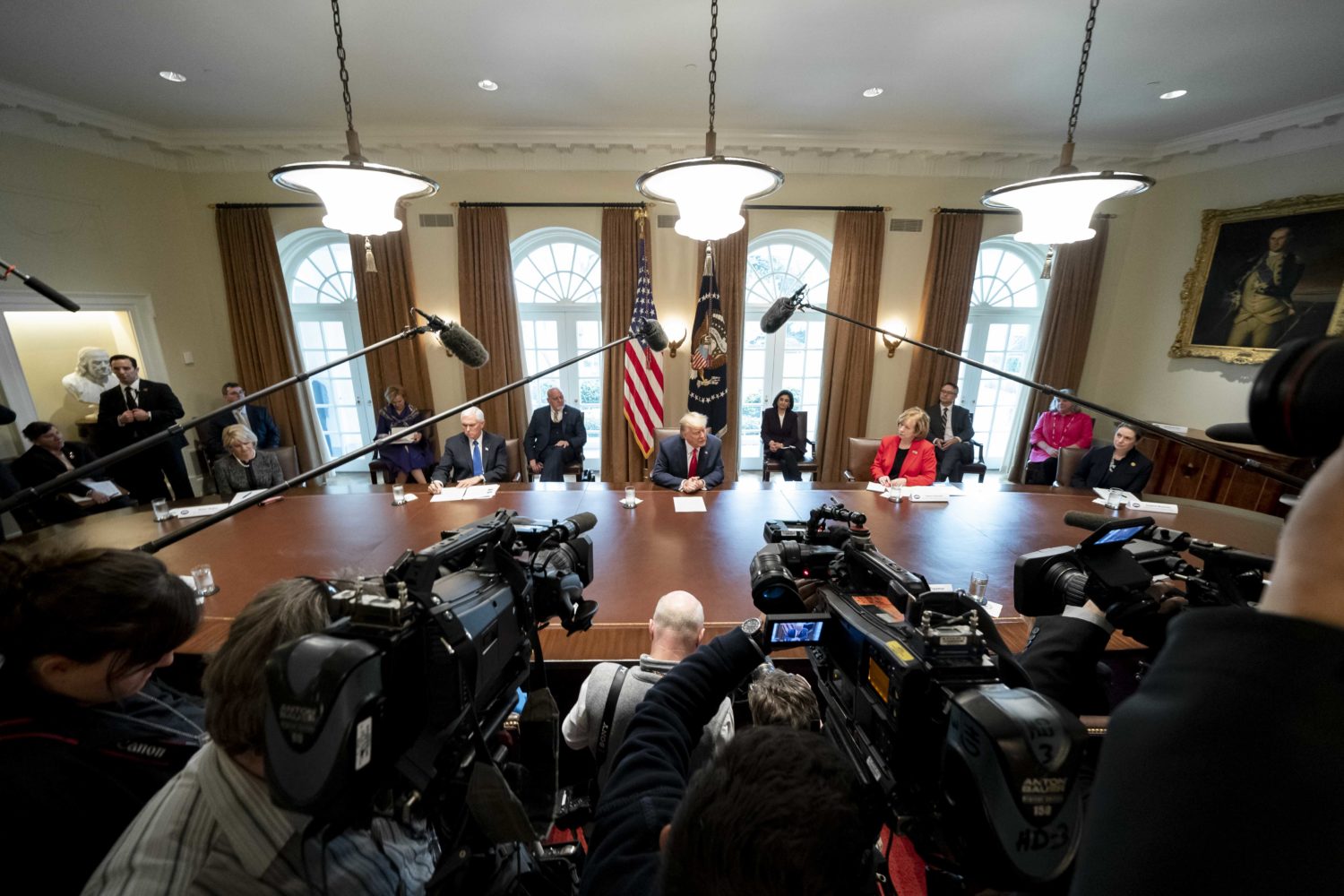
President Trump and Vice President Pence participate in a briefing with nurses on the COVID-19 response in the Cabinet Room of the White House. (Official White House photo by D. Myles Cullen.)
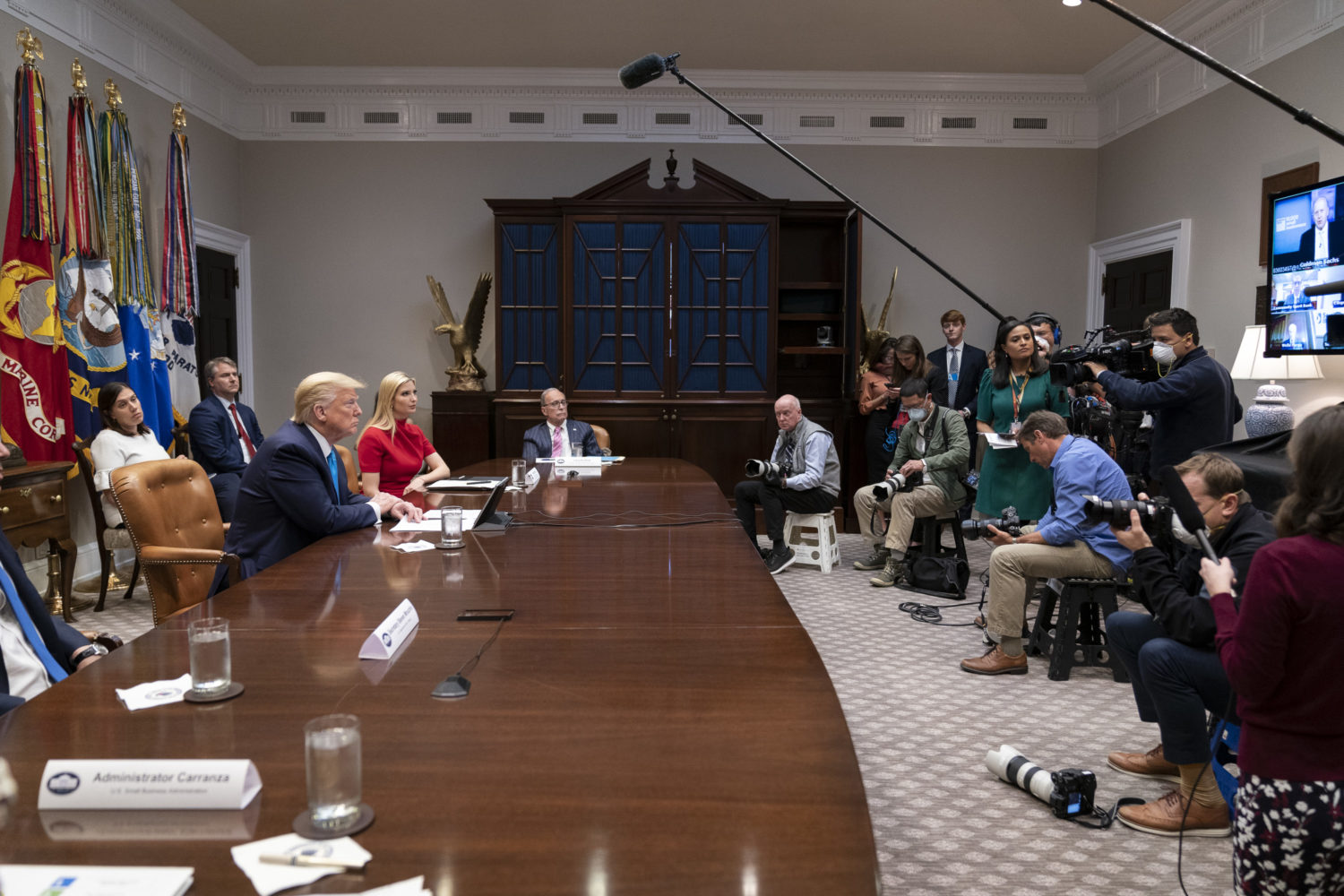
President Trump, with Advisor to the President Ivanka Trump and National Economic Council Director Larry Kudlow, participates in a video conference with banking executives to deliver small business relief in the Roosevelt Room. (Official White House photo by Shealah Craighead.)
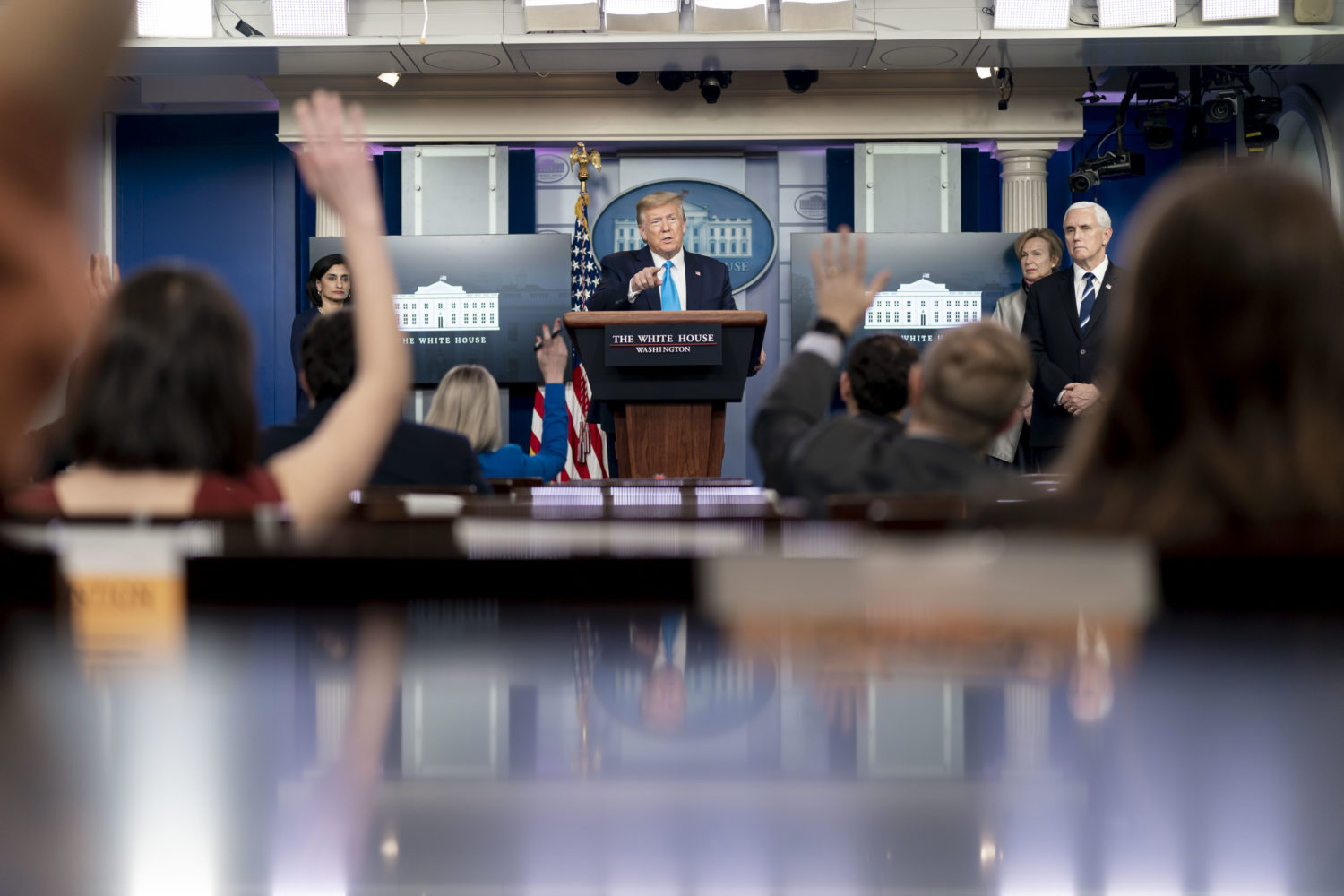
President Trump has turned the press briefings on COVID-19 as a means to communicate with supporters, in lieu of his campaign rallies. (Official White House photo by Andrea Hanks.)
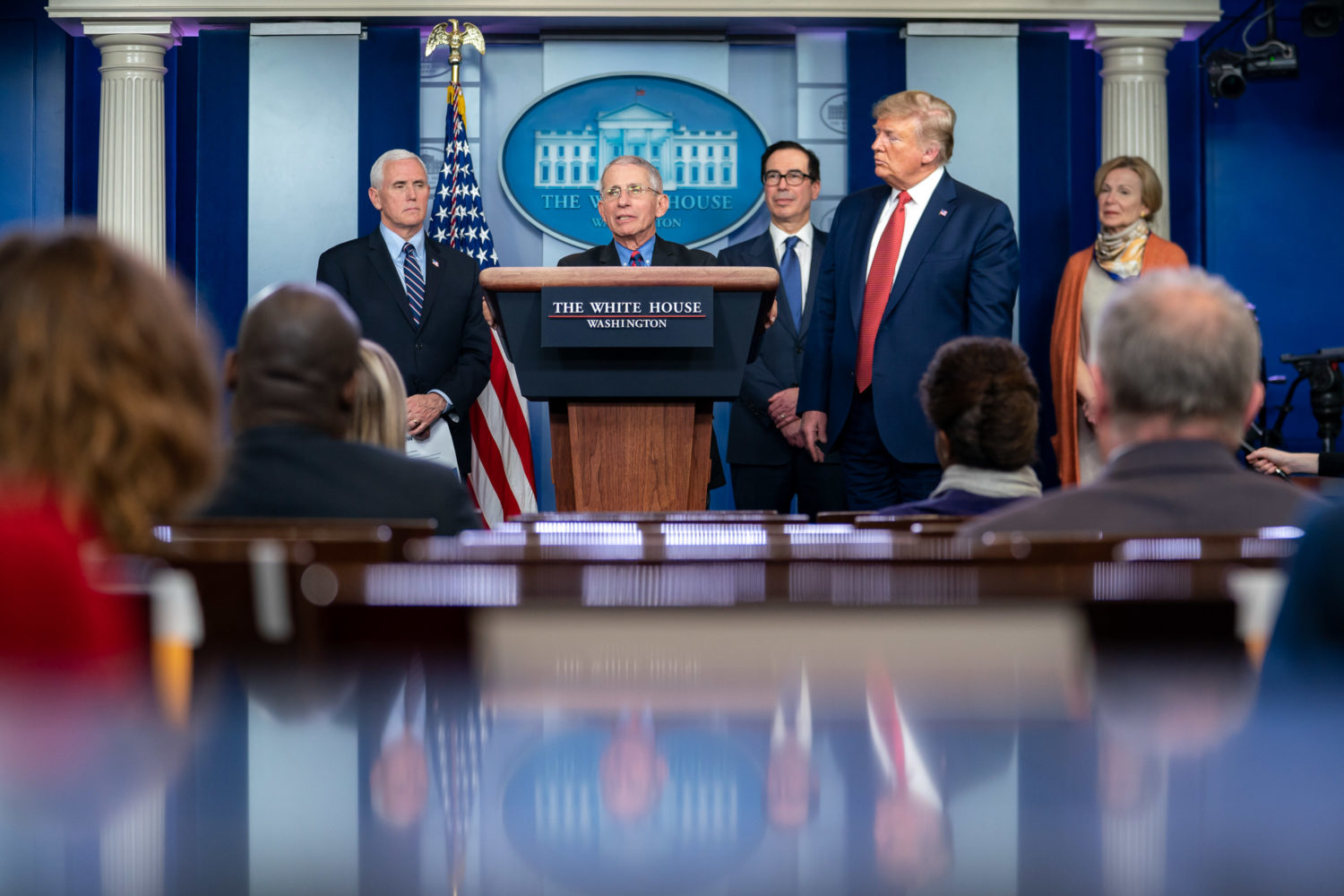
Dr. Anthony S. Fauci, director of the National Institute of Allergy and Infectious Diseases and a member of the White House Coronavirus Task Force, responds to a reporter’s question at a COVID-19 update briefing in the James S. Brady Press Briefing Room of the White House. O(fficial White House photo by Tia Dufour.)
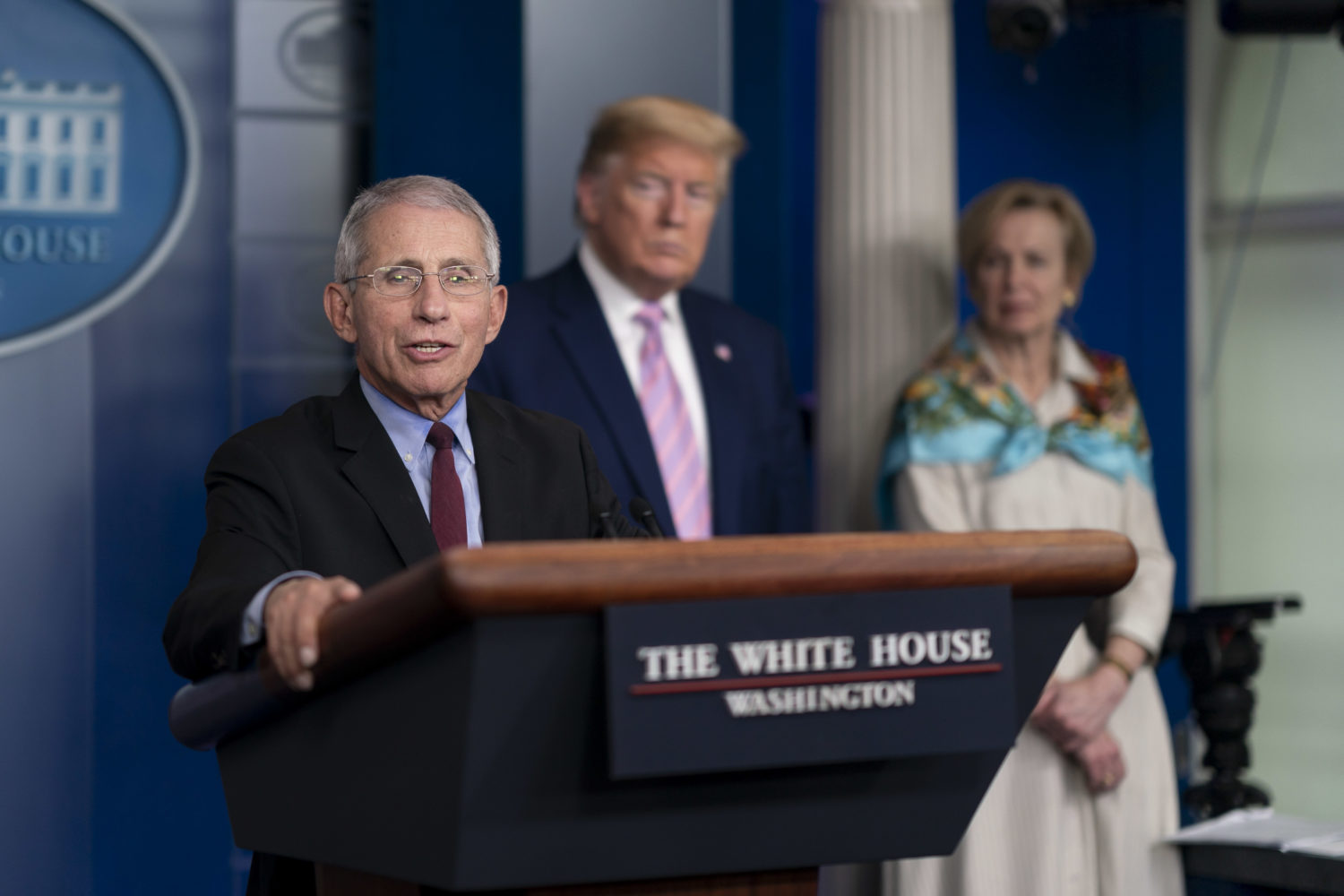
President Trump listens as Dr. Fauci speaks in the James S. Brady Press Briefing Room of the White House. (Official White House photo by Andrea Hanks.)
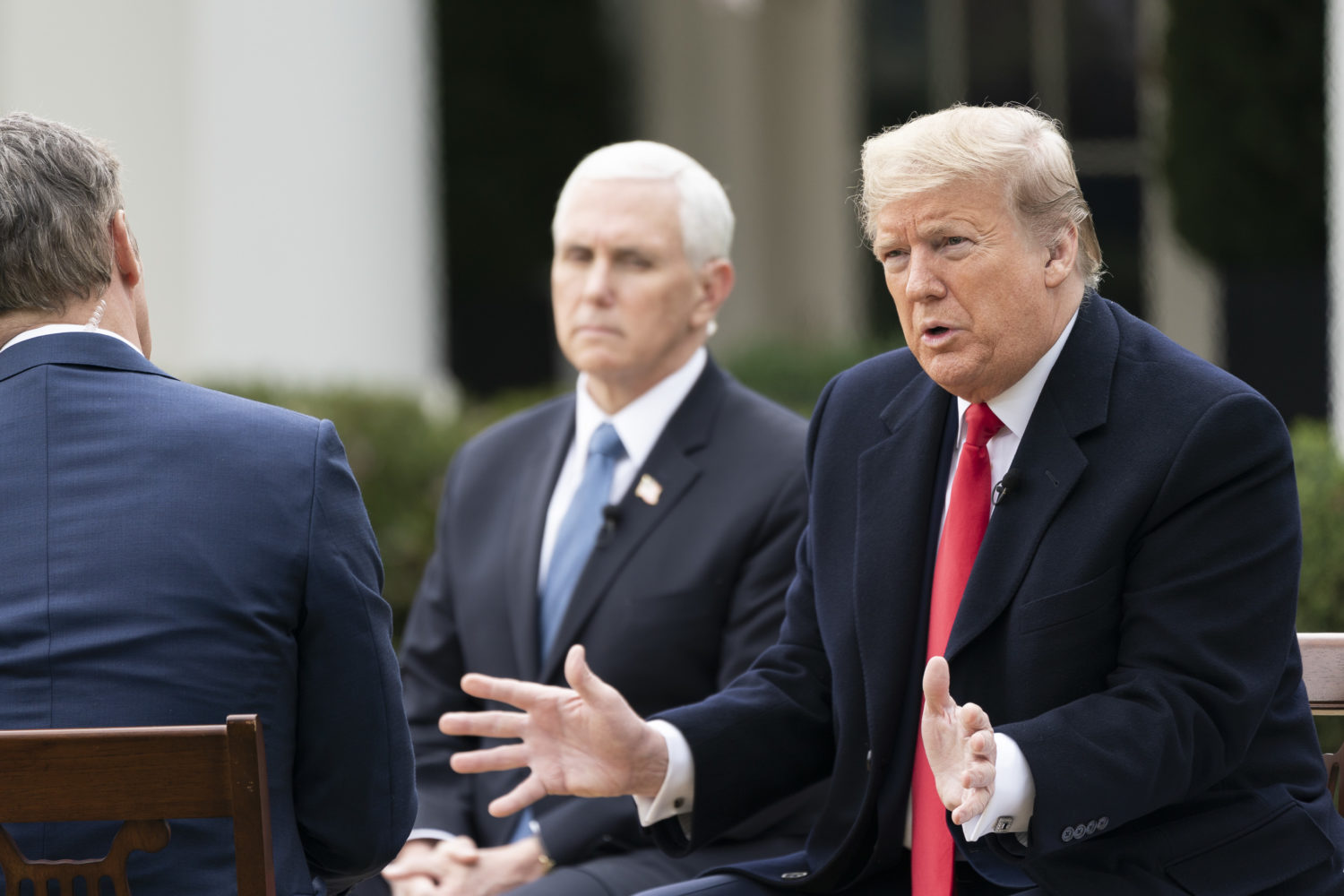
President Trump participates in a virtual Fox News Town Hall in the Rose Garden of the White House. (Official White House photo by Shealah Craighead.)
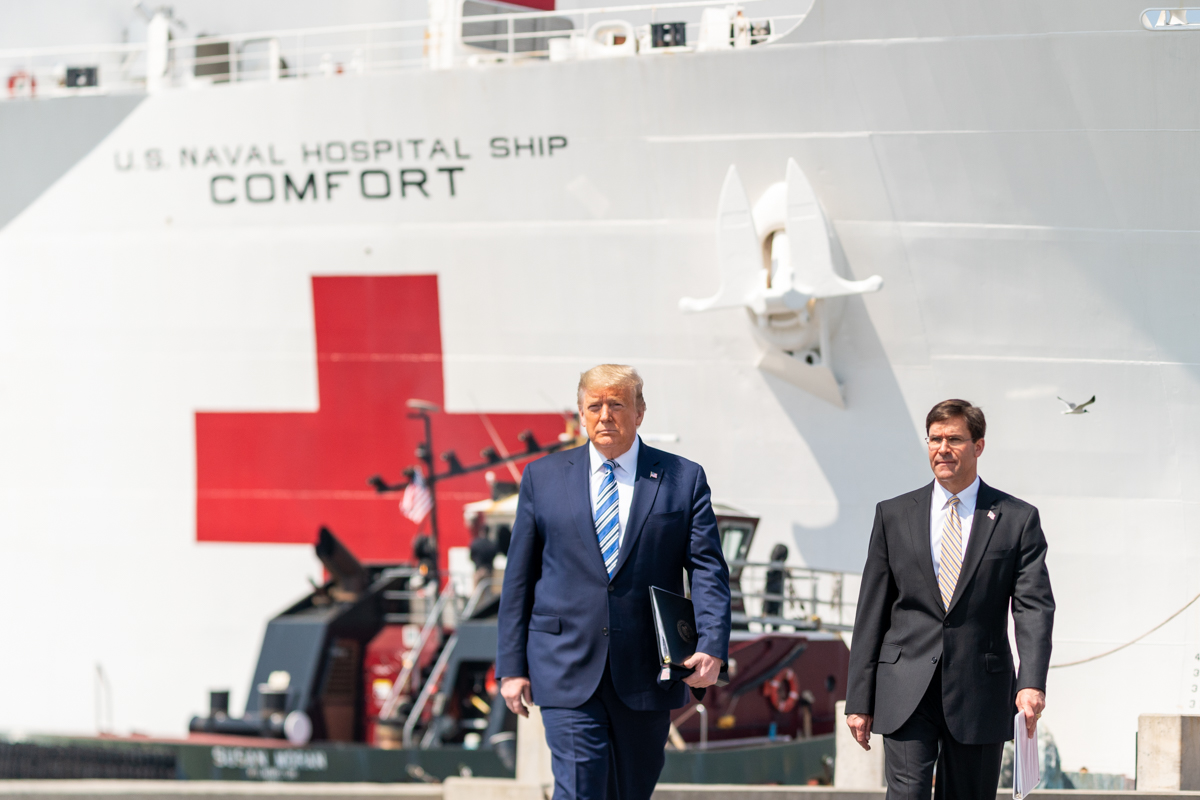
President Trump, joined by Secretary of Defense Mark Esper, arrives at Naval Air Station Norfolk Pier 8 where they each delivered remarks prior to the departure of the USNS Comfort, a U.S. Navy hospital ship stationed in Norfolk, Virginia. (Official White House photo by Shealah Craighead.)
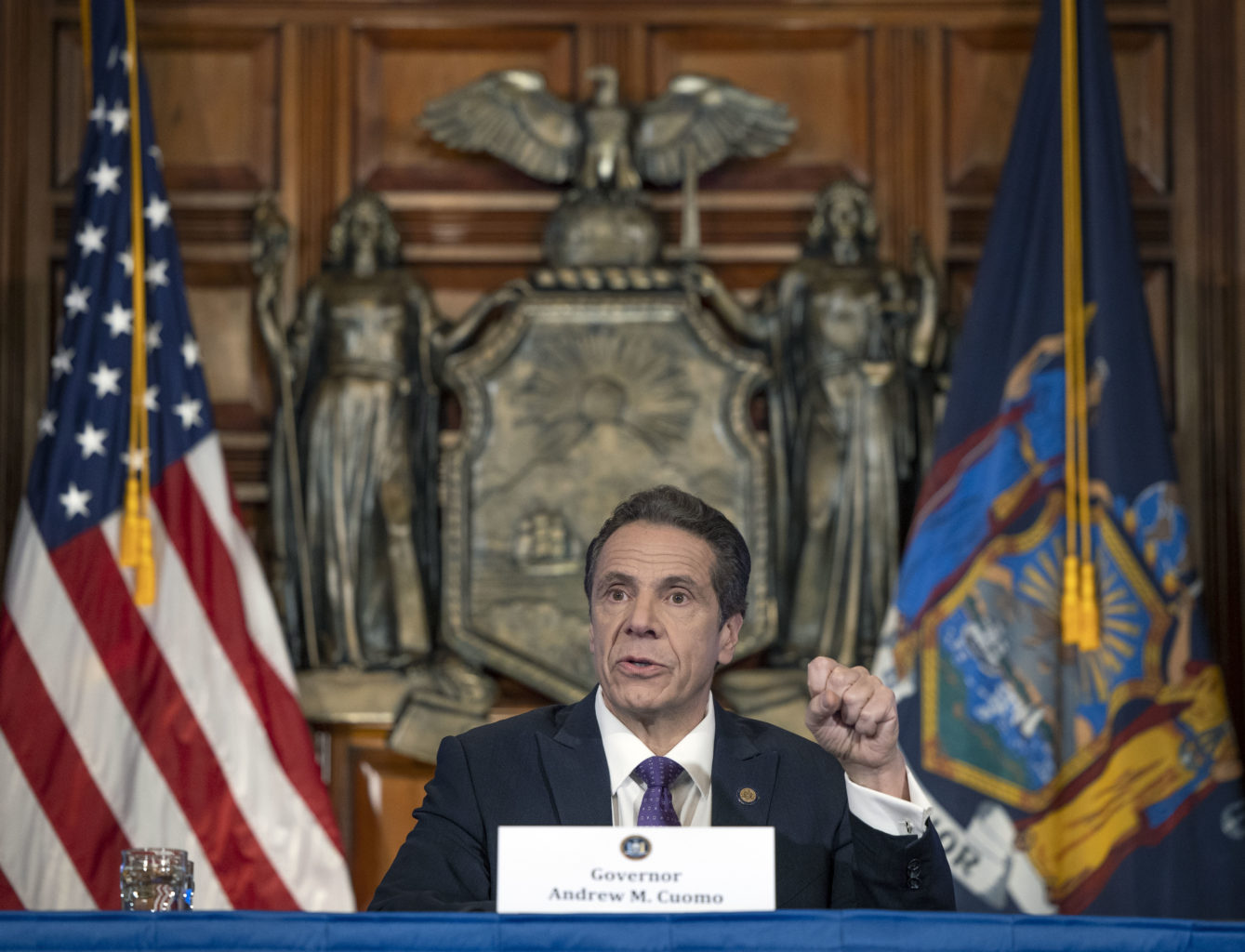
Governor Andrew Cuomo provides a coronavirus update during a press conference in the Red Room at the State Capitol in Albany, N.Y. (Photo by Mike Groll/Office of the Governor.)
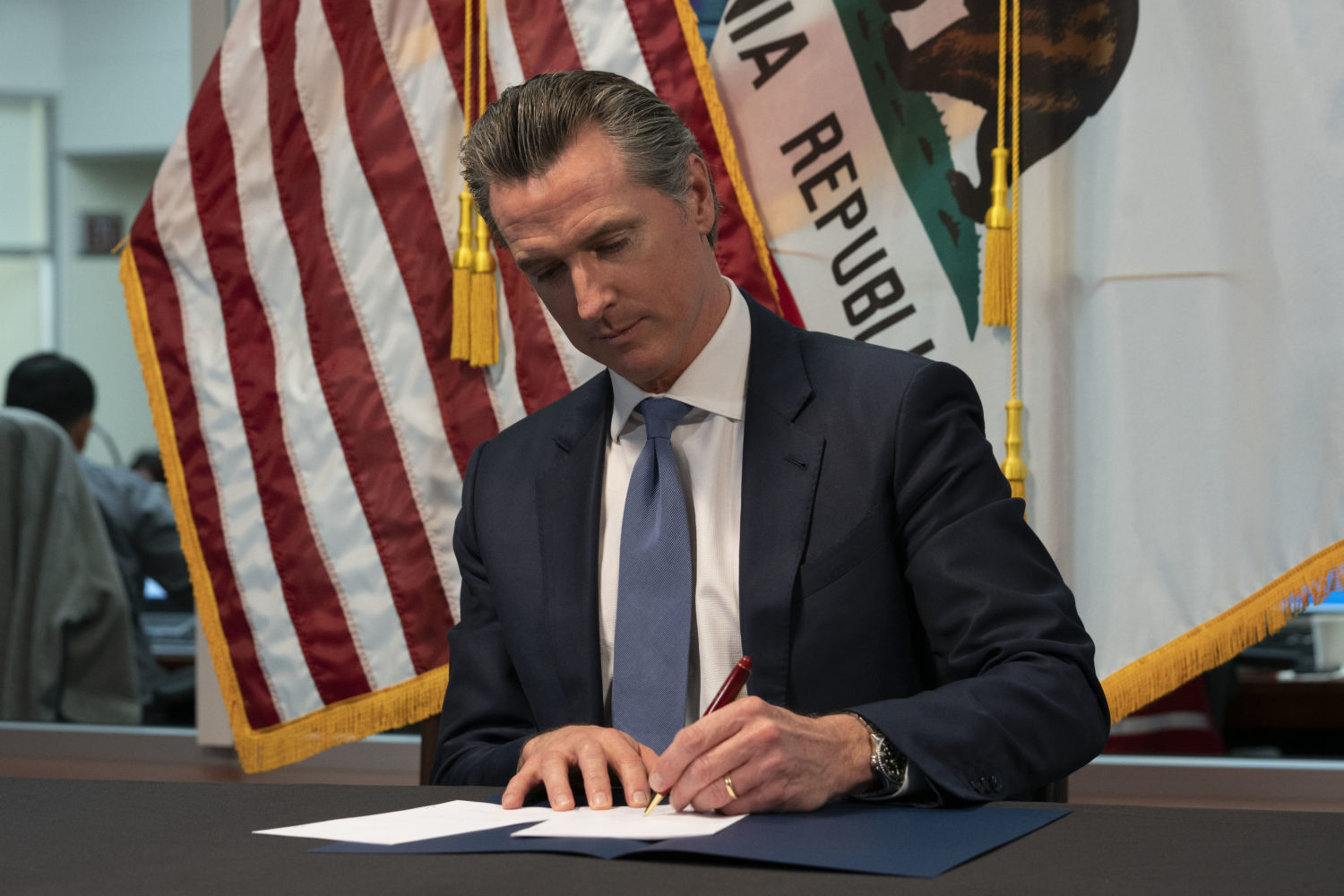
California Governor Gavin Newsom signs emergency legislation to provide up to $1 billion in funding to help California fight COVID-19. (Photo courtesy of the Office of the Governor of California.)
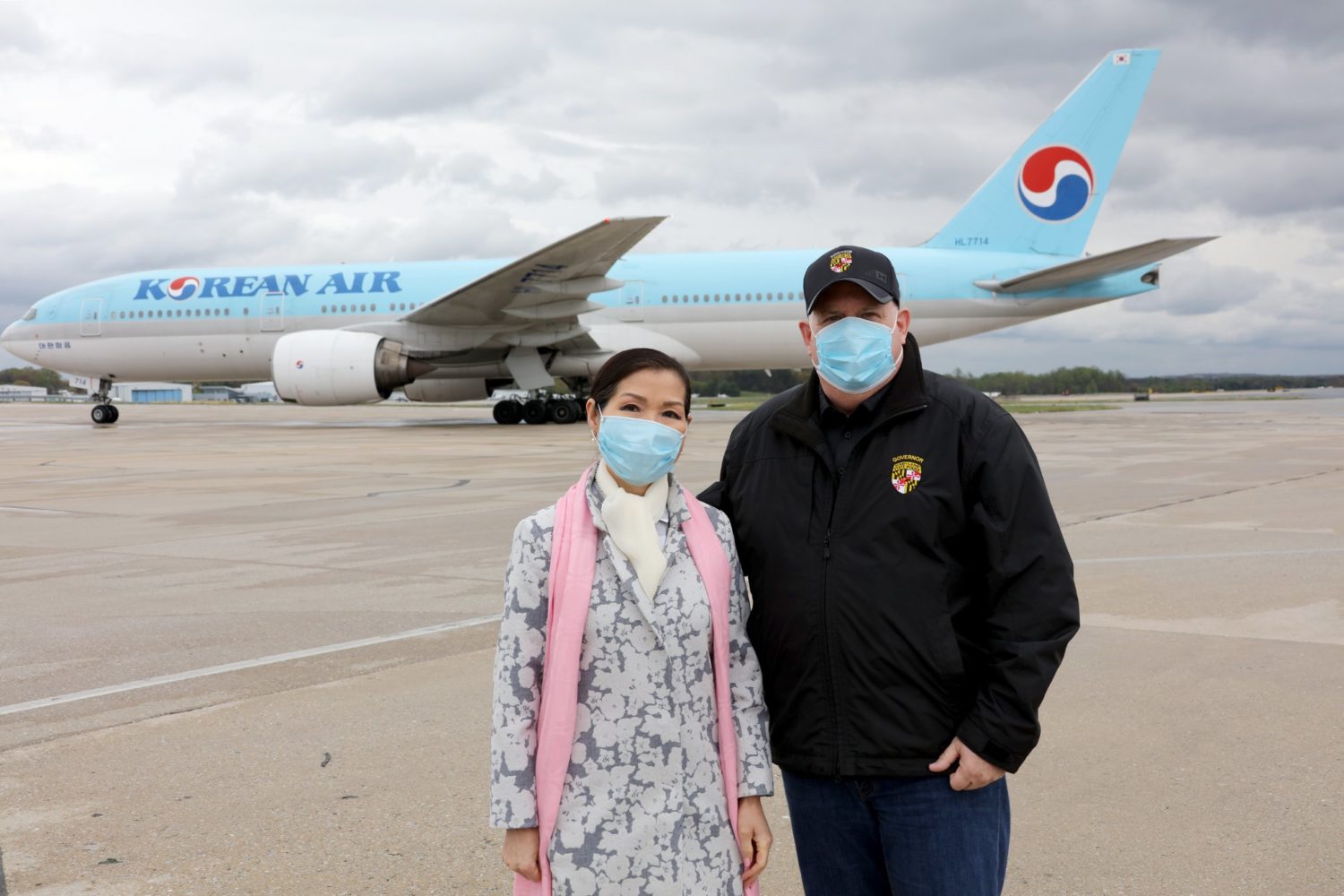
Maryland Governor Larry Hogan with First Lady Yumi Hogan at BWI Marshall Airport to welcome a flight from South Korea carrying test kits provided by South Korean company LabGenomics, giving Maryland the capability to perform half a million coronavirus tests. (Photo courtesy of the Office of the Governor.)
Frontline
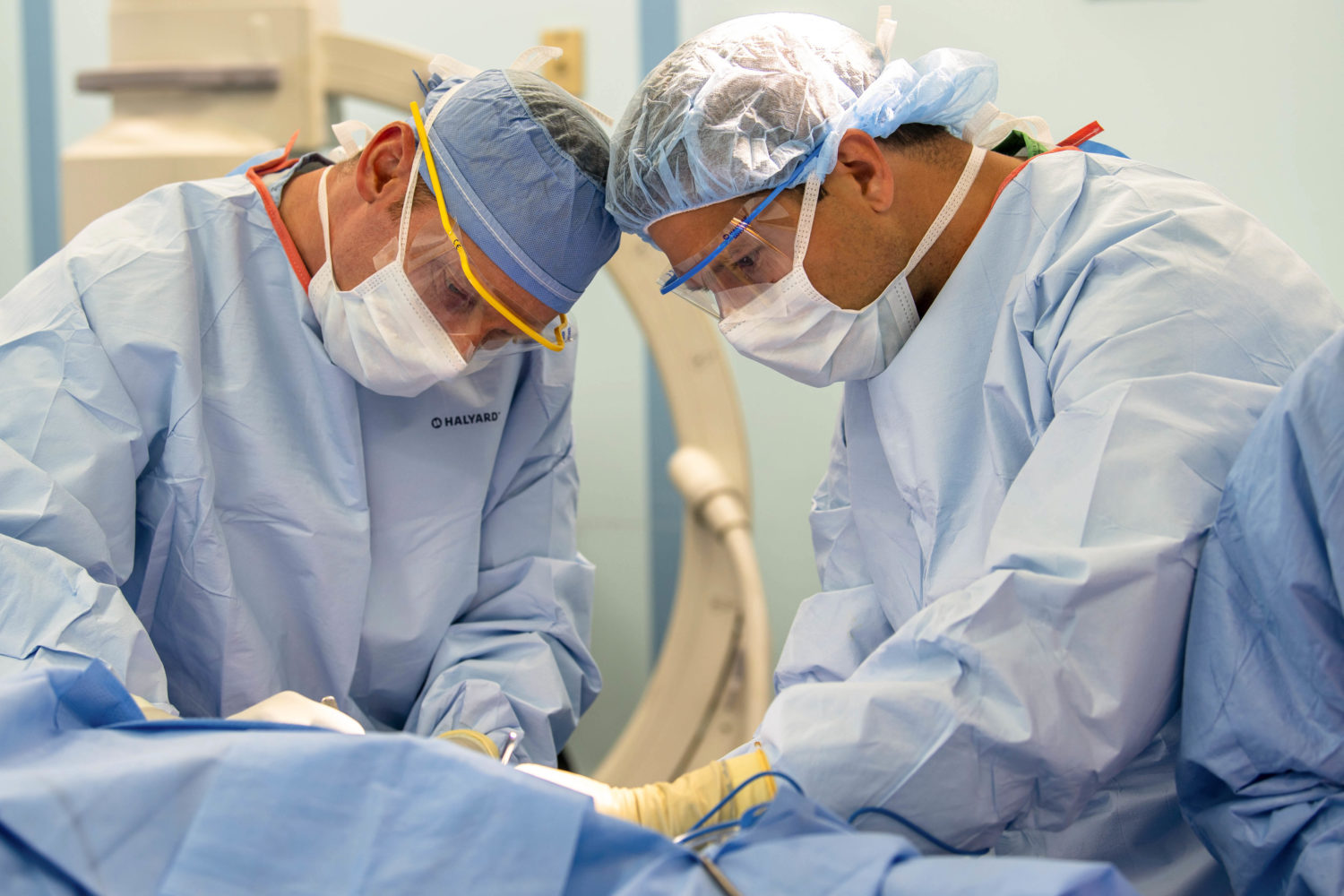
In Los Angeles, Cmdr. Gavin Dunn, from St. Louis (left) and Lt. Cmdr. Patrick Morrissey, from San Diego, perform a surgery on a patient in an operating room aboard USNS Mercy. (U.S. Navy photo by Mass Communication Specialist 2nd Class Ryan M. Breeden.)
The United States military and the National Guard have deployed task forces across the nation, assisting communities with COVID-19 testing, medical care, sanitization and more.
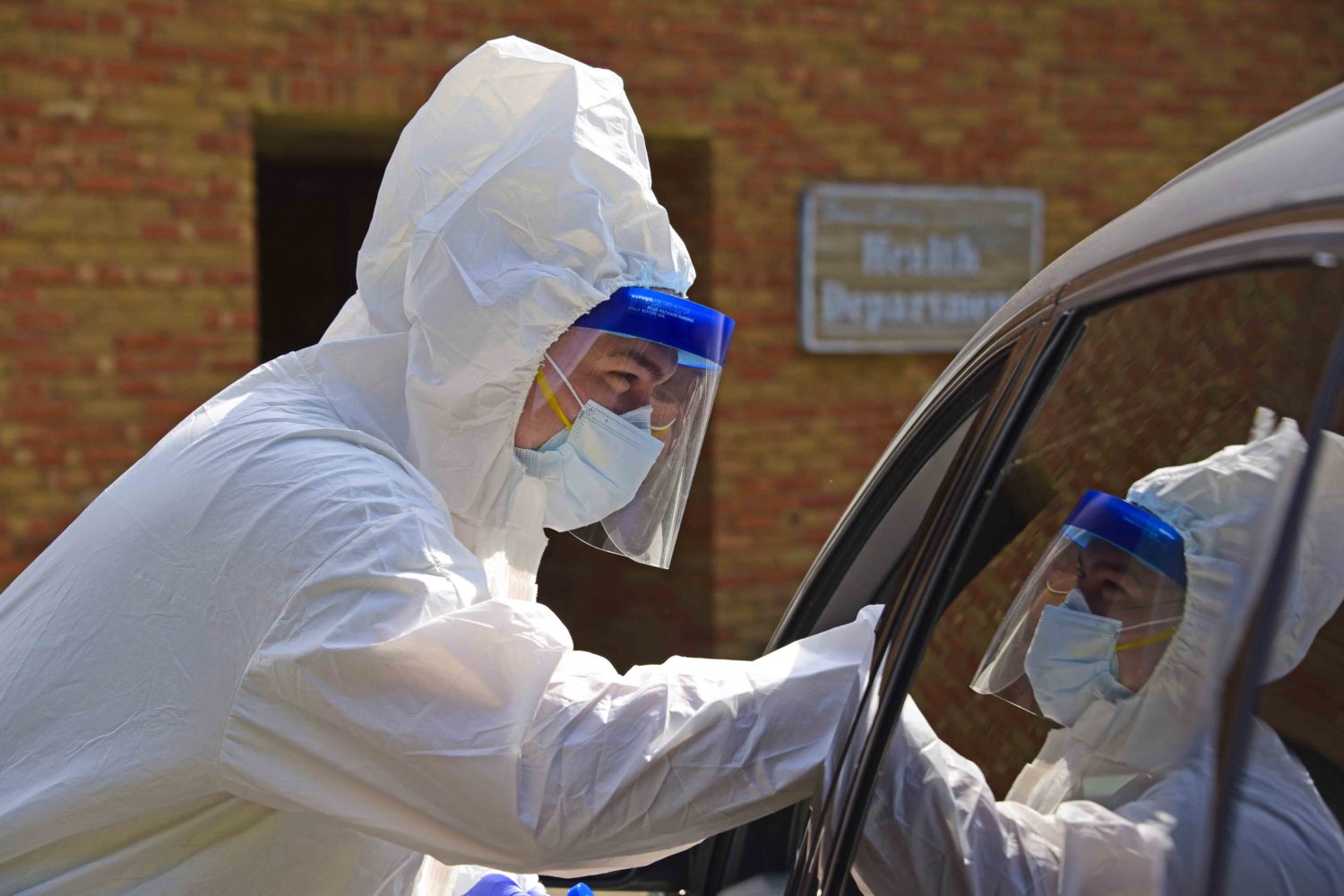
Sgt. Travis Pruett of the Tennessee Air National Guard tests a patient at a COVID-19 drive-up testing station in Blount County. (U.S. Air National Guard photo by Senior Master Sgt. Kendra Owenby.)
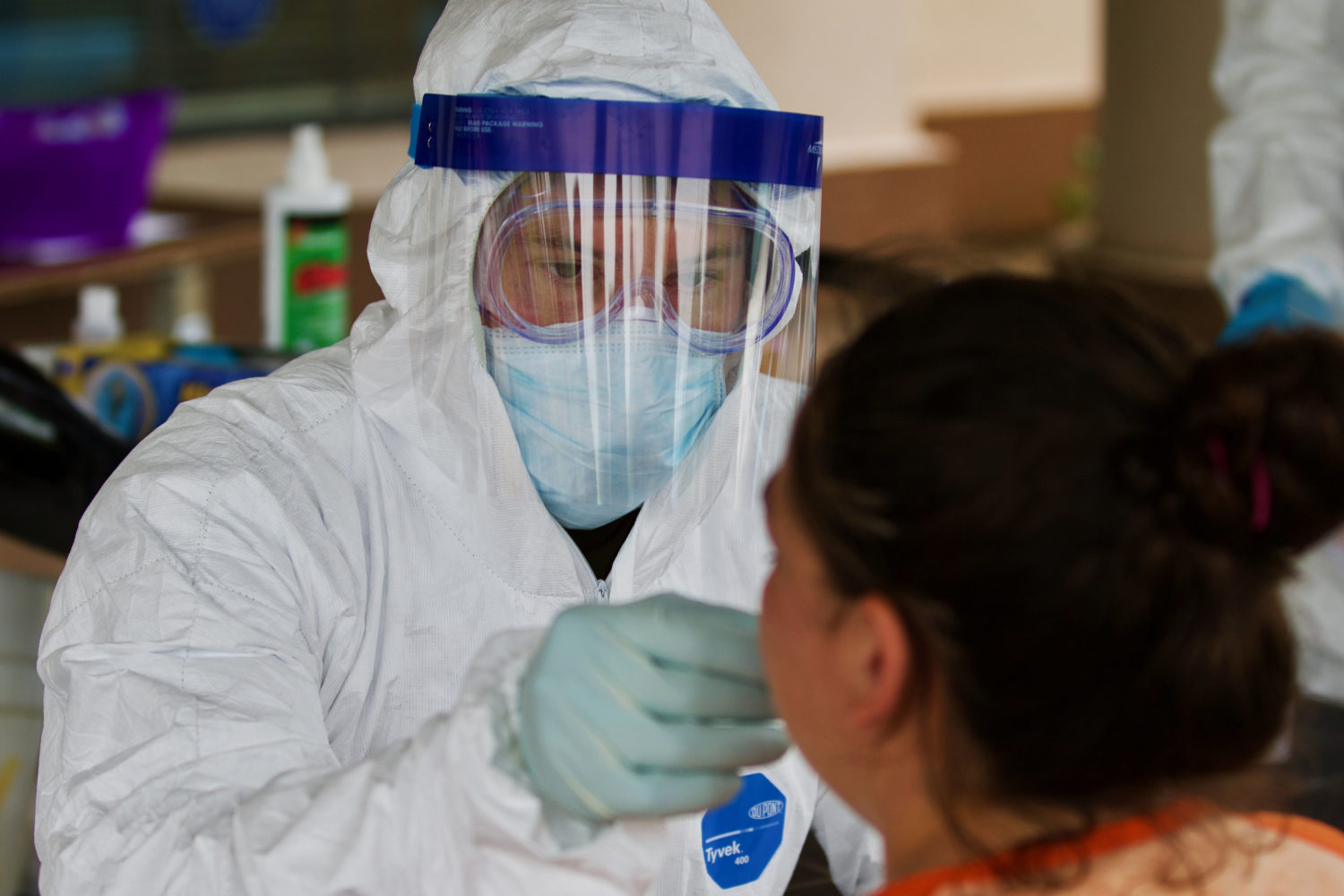
Florida National Guard Staff Sgt. Jeffrey Loken, with the 870th Engineer Company, extracts a specimen from an employee at a Bradford County nursing home. (U.S. Army National Guard photo by Army Sgt. Michael Baltz.)
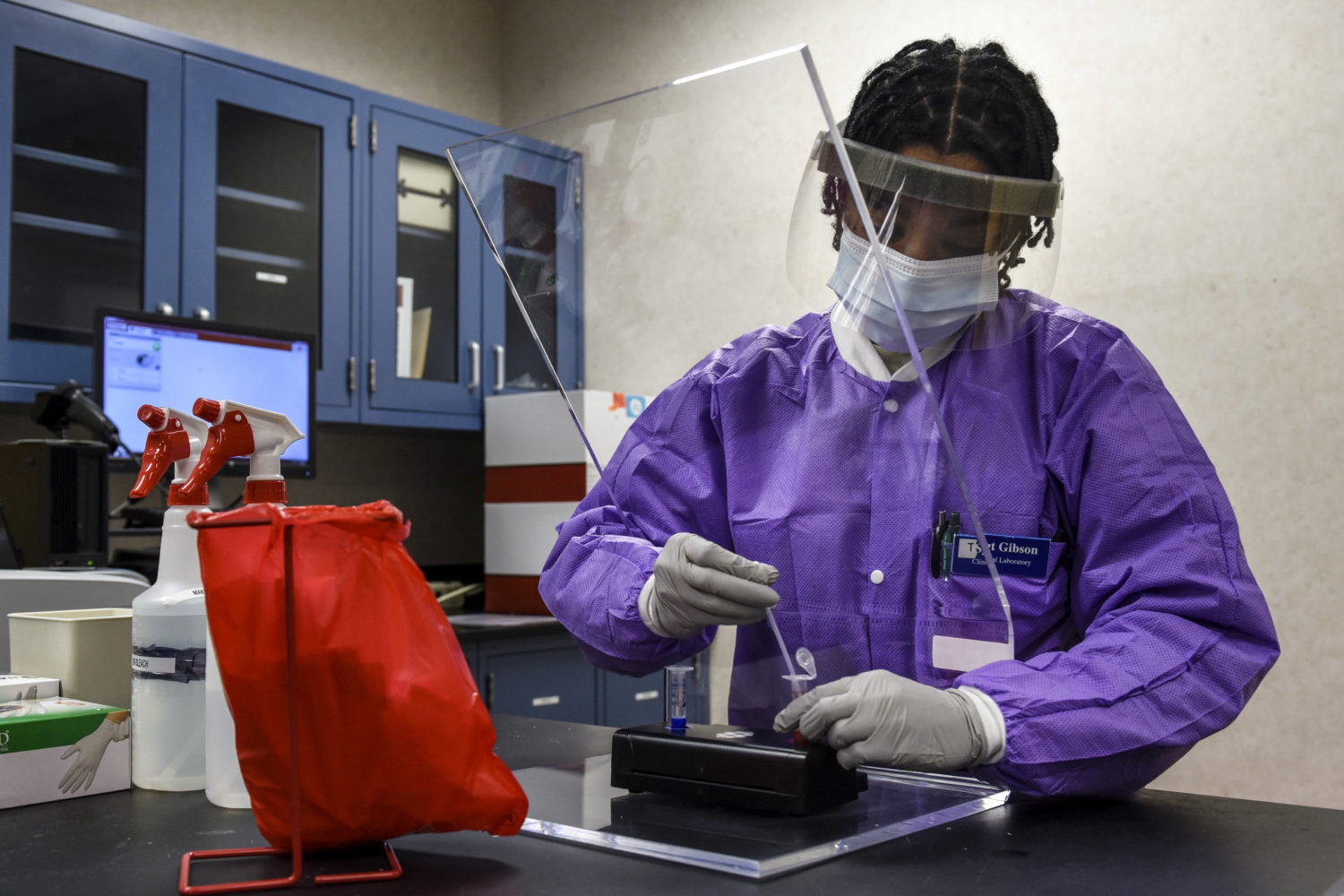
Tech Sgt. Jonisha Gibson, 82nd Medical Group clinical laboratory noncommissioned officer in charge, prepares a sample for testing at Sheppard Air Force Base in Texas. (U.S. Air Force photo by Senior Airman Pedro Tenorio.)
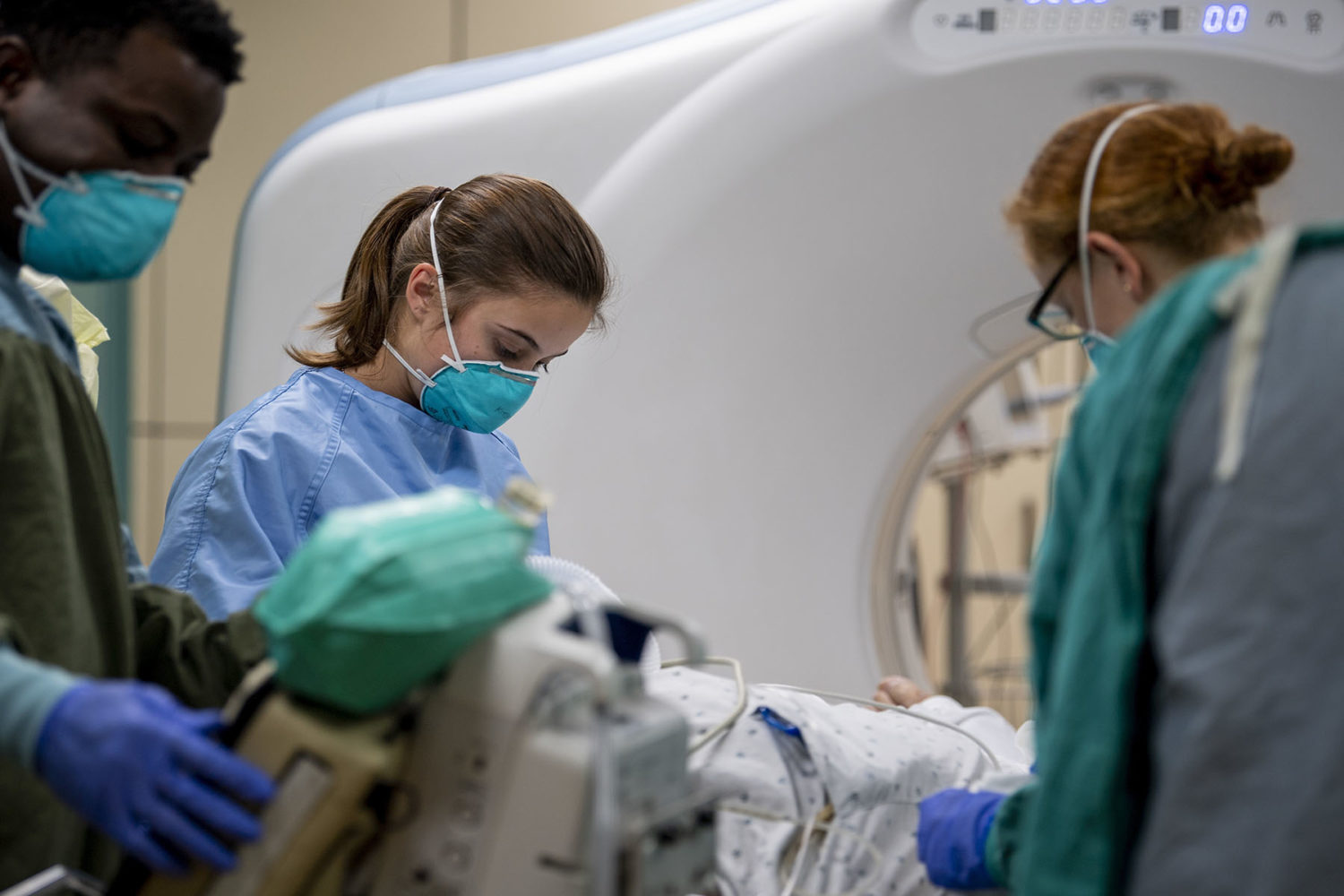
Aliah Kitsmiller of Erie, Colorado, prepares a patient for a CT scan aboard the hospital ship USNS Mercy, docked off the coast of Southern California. (U.S. Navy photo by Mass Communication Specialist 2nd Class Ryan Breeden.)
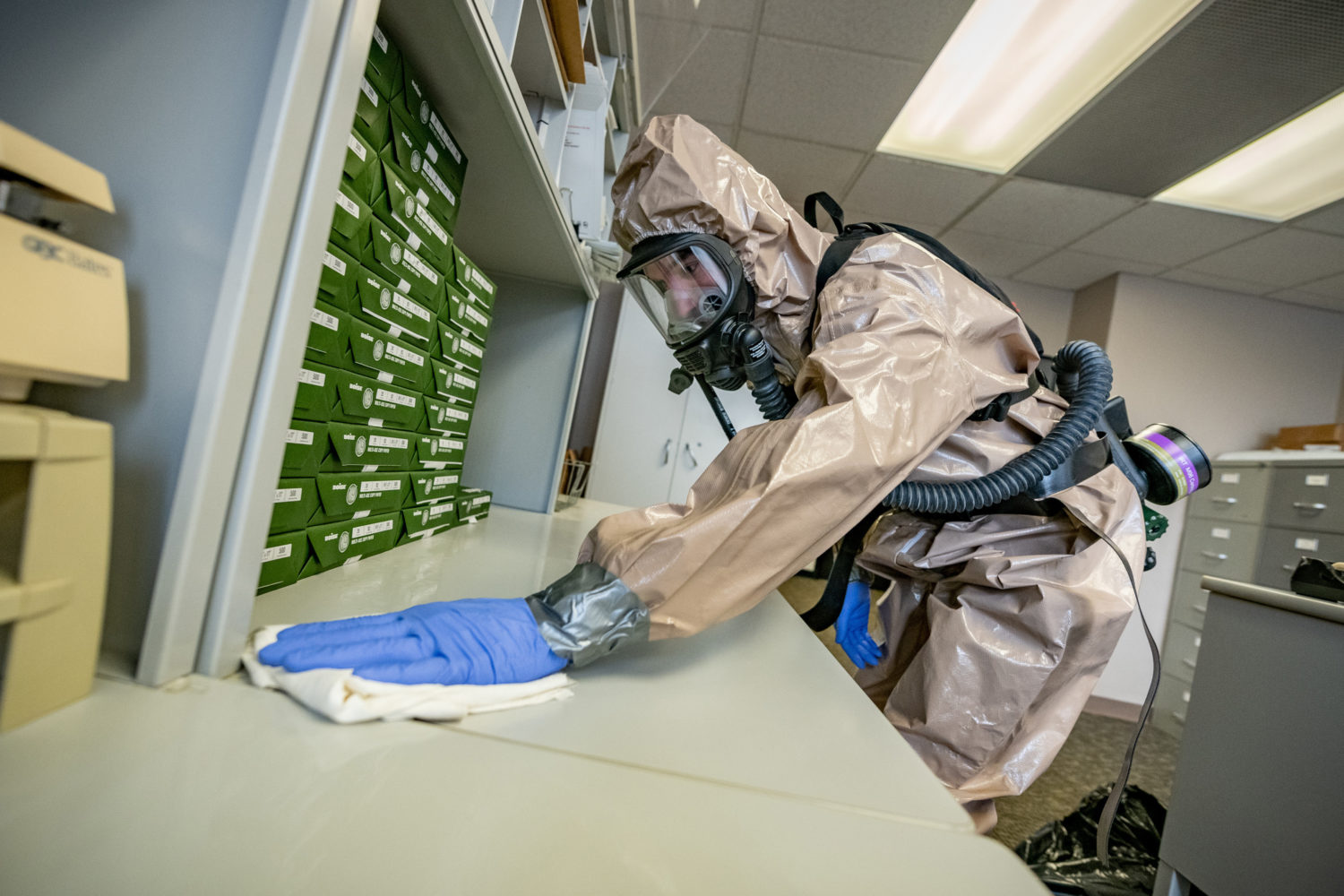
A member of the West Virginia National Guard’s Chemical, Biological, Radiological and Nuclear Response Enterprise sanitizes a workspace of the state’s Higher Education Policy Commission in Charleston. (U.S. Army National Guard photo by Edwin Wriston.)
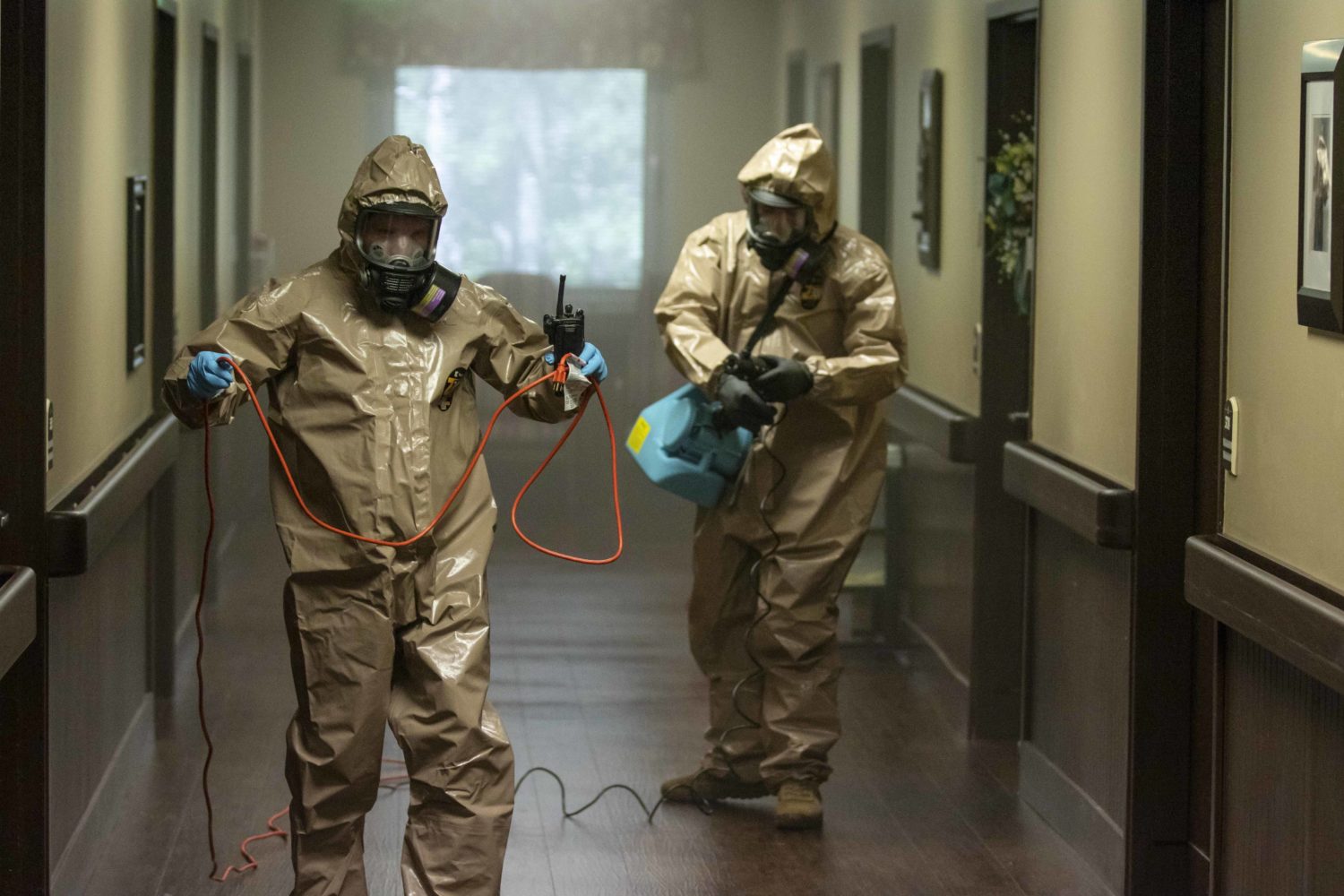
Alabama National Guard soldiers have been activated into the Task Force 31, to disinfect
veterans’ group homes, like Bill Nichols State Veterans Home in Alexander City. (Photo by
Army Staff Sgt. William Frye.)
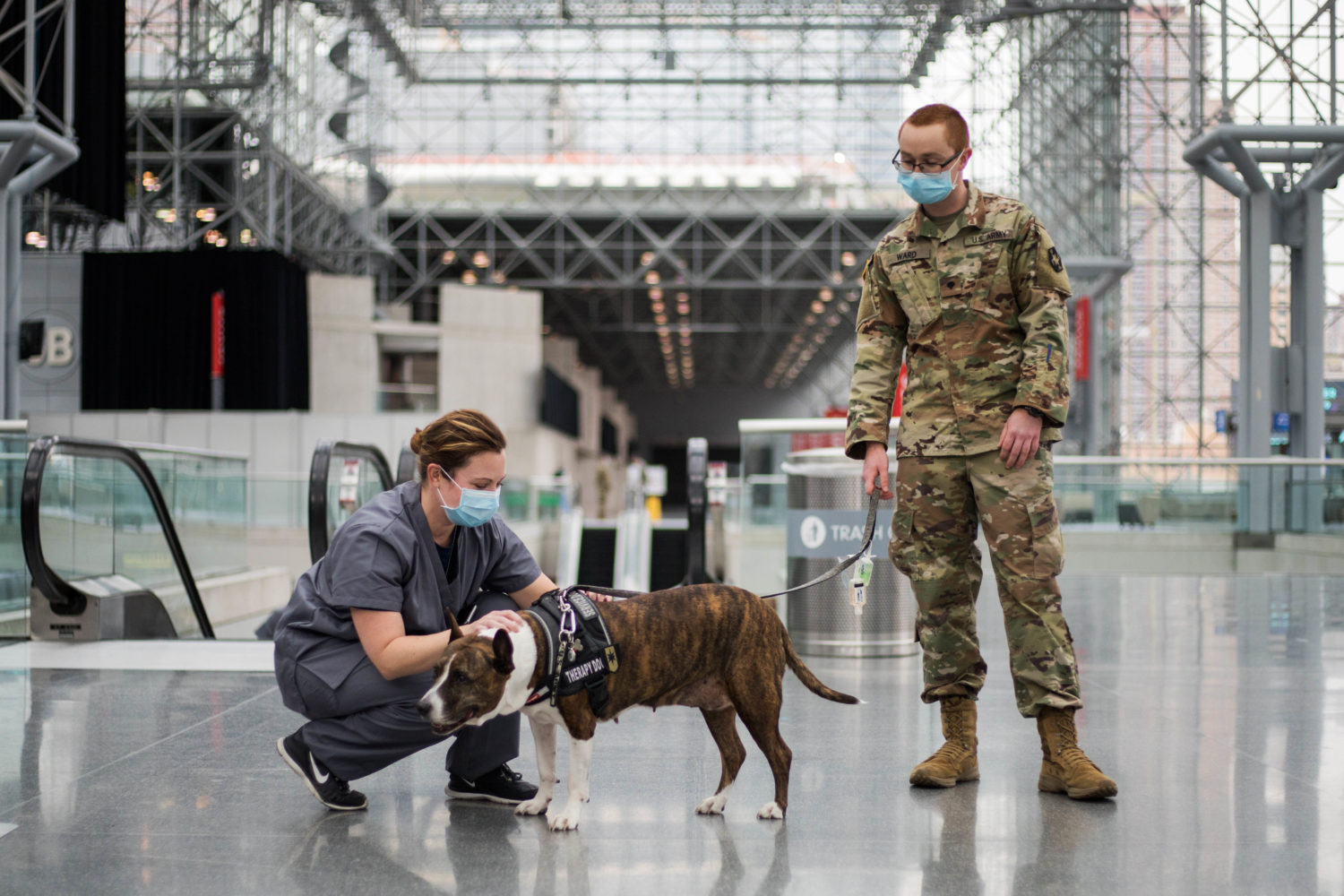
U.S. Army Spc. John Ward, a behavioral health technician assigned to the 405th Field Hospital, introduces a service member to Mila, a therapy dog used as a stress reliever for service members at the Javits New York Medical Station. (U.S. Navy photo by Chief Mass Communication Specialist Barry Riley.)
This article appeared in “Character Media”’s April/May 2020 issue. Check out our current e-magazine here.


